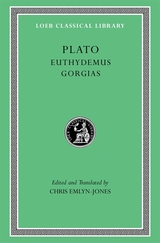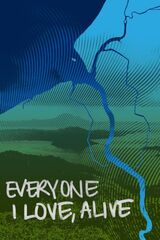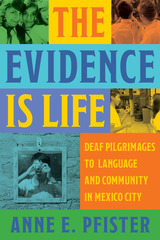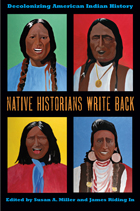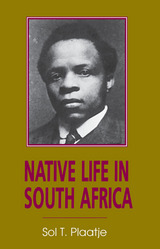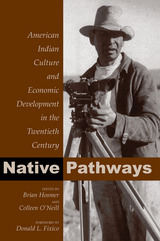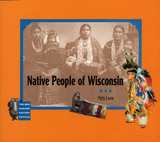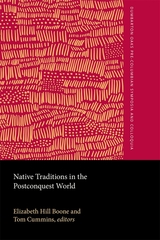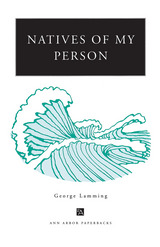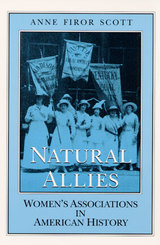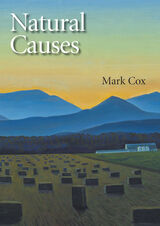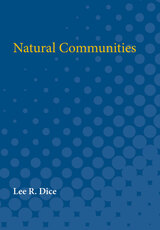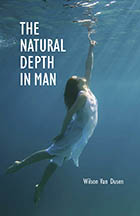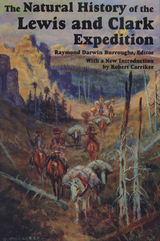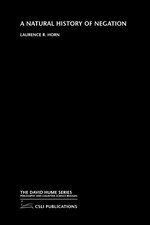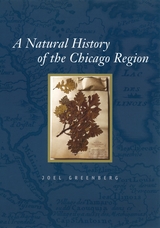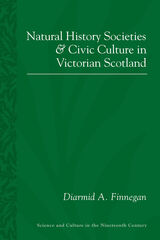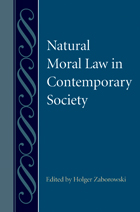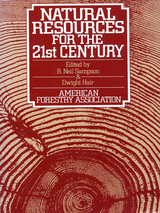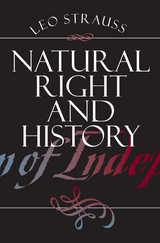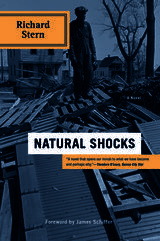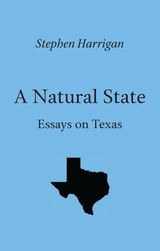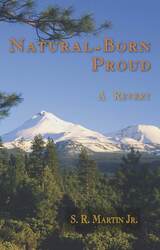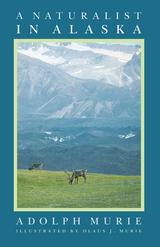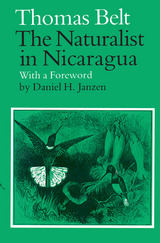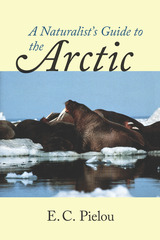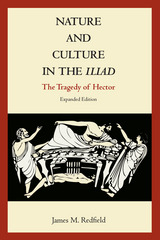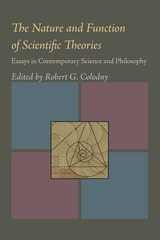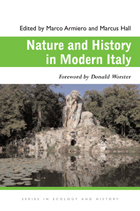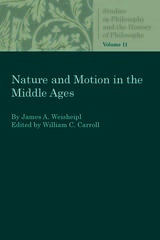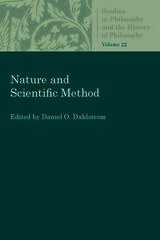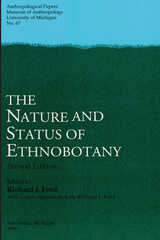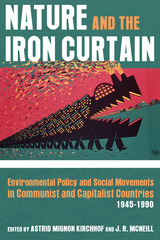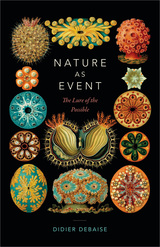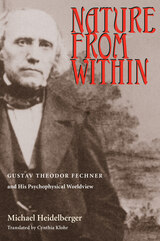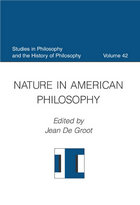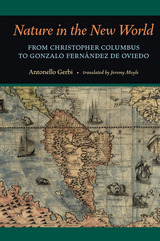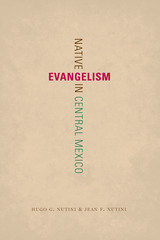 Native Evangelism in Central Mexico
By Hugo G. Nutini and Jean F. Nutini
University of Texas Press, 2014 Evangelical Christianity is Mexico’s fastest-growing religious movement, with about ten million adherents today. Most belong to Protestant denominations introduced from the United States (e.g., Jehovah’s Witnesses, Seventh-day Adventists), but perhaps as many as 800,000 are members of homegrown, “native” evangelical sects. These native Mexican sects share much with the American denominations of which they are spinoffs. For instance, they are Trinitarian, Anabaptist, and Millenarian; they emphasize a personal relationship with God, totally rejecting intermediation by saints; and they insist that they are the only true Christians. Beyond that, each native sect has its distinctive characteristics. This book focuses on two sharply contrastive native evangelical sects in Central Mexico: Amistad y Vida (Friendship and Life) and La Luz del Mundo (The Light of the World). The former, founded in 1982, now has perhaps 120,000 adherents nationwide. It is nonhierarchical, extremely egalitarian, and has no dogmatic directives. It is a cheerful religion that emphasizes charity, community service, and personal kindness as the path to salvation. It attracts new members, mainly from the urban middle class, through personal example rather than proselytizing. La Luz del Mundo, founded in 1926, now has about 350,000 members in Mexico and perhaps one million in the hemisphere. It is hierarchically organized and demands total devotion to the sect’s founder and his son, who are seen as direct links to Jesus on Earth. It is a proselytizing sect that recruits mainly among the urban poor by providing economic benefits within the congregations, but does no community service as such. Based on ten years of fieldwork (1996–2006) and contextualized by nearly fifty years of anthropological study in the region, Native Evangelism in Central Mexico presents the first ethnography of Mexico’s native evangelical congregations.
 Native Foods: Agriculture, Indigeneity, and Settler Colonialism in American History
Michael D. Wise
University of Arkansas Press, 2023 In Native Foods: Agriculture, Indigeneity, and Settler Colonialism in American History, Michael D. Wise confronts four common myths about Indigenous food history: that most Native communities did not practice agriculture; that Native people were primarily hunters; that Native people were usually hungry; and that Native people never developed taste or cuisine. Wise argues that colonial expectations of food and agriculture have long structured ways of seeing (and of not seeing) Native land and labor.
Combining original historical research with interdisciplinary perspectives and informed by the work of Indigenous food sovereignty advocates and activists, this study sheds new light on the historical roles of Native American cuisine in American history and the significance of ongoing colonial processes in present-day discussions about the place of Native foods and Native history in our evolving worlds of taste, justice, and politics.
Native Historians Write Back: Decolonizing American Indian History
Edited by Susan A. Miller and James Riding In
Texas Tech University Press, 2011 No matter what you know about Lewis and Clark, the Hopi Snake Dance, the occupation of Wounded Knee village, or the Seminole Freedmen claim, you have never before seen those and myriad other historic episodes from these perspectives. In this first-of-its-kind anthology, American Indian scholars examine crucial events in their own nations’ histories. On the one hand, these writers represent diverse tribal perspectives. On the other, they share a unifying point of view grounded in ancestral wisdom: the Cosmos is a live being, Earth is our Mother, the North American tribes are engaged in national liberation struggles, and Indigenous realities are as viable as any other. Fanciful? Read this book and see whether you still think so.
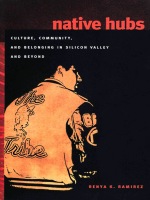 Native Hubs: Culture, Community, and Belonging in Silicon Valley and Beyond
Renya K. Ramirez
Duke University Press, 2007 Most Native Americans in the United States live in cities, where many find themselves caught in a bind, neither afforded the full rights granted U.S. citizens nor allowed full access to the tribal programs and resources—particularly health care services—provided to Native Americans living on reservations. A scholar and a member of the Winnebago Tribe of Nebraska, Renya K. Ramirez investigates how urban Native Americans negotiate what she argues is, in effect, a transnational existence. Through an ethnographic account of the Native American community in California’s Silicon Valley and beyond, Ramirez explores the ways that urban Indians have pressed their tribes, local institutions, and the federal government to expand conventional notions of citizenship. Ramirez’s ethnography revolves around the Paiute American activist Laverne Roberts’s notion of the “hub,” a space that allows for the creation of a sense of belonging away from a geographic center. Ramirez describes “hub-making” activities in Silicon Valley, including sweat lodge ceremonies, powwows, and American Indian Alliance meetings, gatherings at which urban Indians reinforce bonds of social belonging and forge intertribal alliances. She examines the struggle of the Muwekma Ohlone, a tribe aboriginal to the San Francisco Bay area, to maintain a sense of community without a land base and to be recognized as a tribe by the federal government. She considers the crucial role of Native women within urban indigenous communities; a 2004 meeting in which Native Americans from Mexico and the United States discussed cross-border indigenous rights activism; and the ways that young Native Americans in Silicon Valley experience race and ethnicity, especially in relation to the area’s large Chicano community. A unique and important exploration of diaspora, transnationalism, identity, belonging, and community, Native Hubs is intended for scholars and activists alike.
 Native Intelligence: Aesthetics, Politics, and Postcolonial Literature
Deepika Bahri
University of Minnesota Press, 2003 A compelling reclamation of the place of aesthetics in postcolonial literature Literature though it may be, postcolonial literature is studied and understood largely—and often solely—in social and political terms. In neglecting its aesthetic dimension, as this book forcefully demonstrates, we are overlooking not only an essential aspect of this literature but even a critical perspective on its sociopolitical function and value. In Native Intelligence, Deepika Bahri focuses on postcolonial literature’s formal and aesthetic negotiations with sociopolitical concerns. How, Bahri asks, do aesthetic considerations contest the social function of postcolonial literature? In answering, her book takes on two tasks: First, it identifies the burden of representation borne by postcolonial literature through its progressive politicization. Second, it draws on Frankfurt School critical theory to reclaim a place for aesthetics in literary representation by closely engaging works of Rohinton Mistry, Salman Rushdie, and Arundhati Roy. Throughout, Bahri shows how attention to the aesthetic innovations and utopian impulses of postcolonial works uncovers their complex and uneven relationship to ideology, reanimating their potential to make novel contributions to the larger project of social liberation.
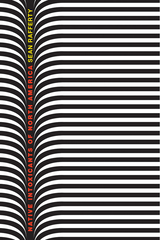 Native Intoxicants of North America
Sean Rafferty
University of Tennessee Press, 2021 Though scholarship on intoxicants in regions like Asia, Africa, Mesoamerica, and South America is plentiful, Native Intoxicants of North America represents the first foray into a study of prehistoric intoxicants throughout North America specifically. In this study, Sean Rafferty fills significant gaps in existing research with a focus on native cultures of North America and holistic coverage of intoxicants by type. Importantly, Rafferty anchors his investigation in an easily overlooked question: why did early humans use intoxicants in the first place?
Rafferty begins by discussing the origins of intoxicants and their role in rituals, medicine, and recreation. Subsequent chapters turn to specific intoxicants—hallucinogens, stimulants, alcohol, and tobacco—making ample use of illustrations across disciplines, weaving a tapestry of culture, ritual, medicine, botany, artifact, and history. All the while, Rafferty explores the societal significance of narcotics, stimulants, and hallucinogens on prehistoric North American cultures.
While Native Intoxicants of North America focuses specifically on Native cultures, the author’s analysis provides the foundation for a valuable broader discussion: that in a world where few human behaviors are universal, experiencing altered states of consciousness is one that transcends culture and time.
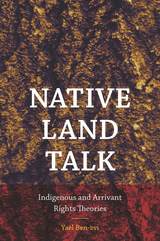 Native Land Talk: Indigenous and Arrivant Rights Theories
Yael Ben-zvi
Dartmouth College Press, 2018 Histories of rights have too often marginalized Native Americans and African Americans. Addressing this lacuna, Native Land Talk expands our understanding of freedom by examining rights theories that Indigenous and African-descended peoples articulated in the eighteenth and nineteenth centuries. As settlers began to distrust the entitlements that the English used to justify their rule, the colonized and the enslaved formulated coherent logics of freedom and belonging. By anchoring rights in nativity, they countered settlers’ attempts to dispossess and disenfranchise them. Drawing on a plethora of texts, including petitions, letters, newspapers, and official records, Yael Ben-zvi analyzes nativity’s unsettling potentials and its discursive and geopolitical implications. She shows how rights were constructed in relation to American, African, and English spaces, and explains the obstacles to historic solidarity between Native American and African American struggles.
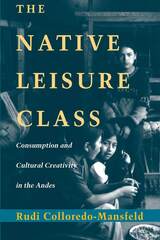 The Native Leisure Class: Consumption and Cultural Creativity in the Andes
Rudi Colloredo-Mansfeld
University of Chicago Press, 1999 In the Andean city of Otavalo, Ecuador, a cultural renaissance is now taking place against a backdrop of fading farming traditions, transnational migration, and an influx of new consumer goods. Recently, Otavalenos have transformed their textile trade into a prosperous tourist industry, exporting colorful weavings around the world.
Tracing the connections among newly invented craft traditions, social networks, and consumption patterns, Rudi Colloredo-Mansfeld highlights the way ethnic identities and class cultures materialize in a sensual world that includes luxurious woven belts, powerful stereos, and garlic roasted cuyes (guinea pigs). Yet this case reaches beyond the Andes. He shows how local and global interactions intensify the cultural expression of the world's emerging "native middle classes," at times leaving behind those unable to afford the new trappings of indigenous identity.
Colloredo-Mansfeld also comments on his experiences working as an artist in Otavalo. His drawings, along with numerous photographs, animate this engaging study in economic anthropology.
Native Life In South Africa: Before and Since the European War and the Boer Rebellion
Sol T. Plaatje
Ohio University Press, 1991 First published in 1916 and one of South Africa’s great political books, Native Life in South Africa was first and foremost a response to the Native’s Land Act of 1913, and was written by one of the most gifted and influential writers and journalists of his generation. Sol T. Plaatje provides an account of the origins of this crucially important piece of legislation and a devastating description of its immediate effects.
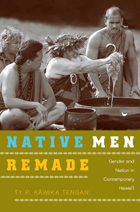 Native Men Remade: Gender and Nation in Contemporary Hawai'i
Ty P. Kawika Tengan
Duke University Press, 2008 Many indigenous Hawaiian men have felt profoundly disempowered by the legacies of colonization and by the tourist industry, which, in addition to occupying a great deal of land, promotes a feminized image of Native Hawaiians (evident in the ubiquitous figure of the dancing hula girl). In the 1990s a group of Native men on the island of Maui responded by refashioning and reasserting their masculine identities in a group called the Hale Mua (the “Men’s House”). As a member and an ethnographer, Ty P. Kāwika Tengan analyzes how the group’s mostly middle-aged, middle-class, and mixed-race members assert a warrior masculinity through practices including martial arts, woodcarving, and cultural ceremonies. Some of their practices are heavily influenced by or borrowed from other indigenous Polynesian traditions, including those of the Māori. The men of the Hale Mua enact their refashioned identities as they participate in temple rites, protest marches, public lectures, and cultural fairs. The sharing of personal stories is an integral part of Hale Mua fellowship, and Tengan’s account is filled with members’ first-person narratives. At the same time, Tengan explains how Hale Mua rituals and practices connect to broader projects of cultural revitalization and Hawaiian nationalism. He brings to light the tensions that mark the group’s efforts to reclaim indigenous masculinity as they arise in debates over nineteenth-century historical source materials and during political and cultural gatherings held in spaces designated as tourist sites. He explores class status anxieties expressed through the sharing of individual life stories, critiques of the Hale Mua registered by Hawaiian women, and challenges the group received in dialogues with other indigenous Polynesians. Native Men Remade is the fascinating story of how gender, culture, class, and personality intersect as a group of indigenous Hawaiian men work to overcome the dislocations of colonial history.
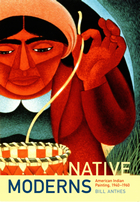 Native Moderns: American Indian Painting, 1940-1960
Bill Anthes
Duke University Press, 2006 Between 1940 and 1960, many Native American artists made bold departures from what was considered the traditional style of Indian painting. They drew on European and other non-Native American aesthetic innovations to create hybrid works that complicated notions of identity, authenticity, and tradition. This richly illustrated volume focuses on the work of these pioneering Native artists, including Pueblo painters José Lente and Jimmy Byrnes, Ojibwe painters Patrick DesJarlait and George Morrison, Cheyenne painter Dick West, and Dakota painter Oscar Howe. Bill Anthes argues for recognizing the transformative work of these Native American artists as distinctly modern, and he explains how bringing Native American modernism to the foreground rewrites the broader canon of American modernism. In the mid-twentieth century, Native artists began to produce work that reflected the accelerating integration of Indian communities into the national mainstream as well as, in many instances, their own experiences beyond Indian reservations as soldiers or students. During this period, a dynamic exchange among Native and non-Native collectors, artists, and writers emerged. Anthes describes the roles of several anthropologists in promoting modern Native art, the treatment of Native American “Primitivism” in the writing of the Jewish American critic and painter Barnett Newman, and the painter Yeffe Kimball’s brazen appropriation of a Native identity. While much attention has been paid to the inspiration Native American culture provided to non-Native modern artists, Anthes reveals a mutual cross-cultural exchange that enriched and transformed the art of both Natives and non-Natives.
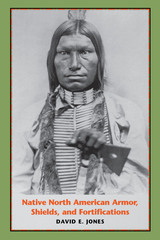 Native North American Armor, Shields, and Fortifications
By David E. Jones
University of Texas Press, 2004 From the Chickasaw fighting the Choctaw in the Southeast to the Sioux battling the Cheyenne on the Great Plains, warfare was endemic among the North American Indians when Europeans first arrived on this continent. An impressive array of offensive weaponry and battle tactics gave rise to an equally impressive range of defensive technology. Native Americans constructed very effective armor and shields using wood, bone, and leather. Their fortifications ranged from simple refuges to walled and moated stockades to multiple stockades linked in strategic defensive networks. In this book, David E. Jones offers the first systematic comparative study of the defensive armor and fortifications of aboriginal Native Americans. Drawing data from ethnohistorical accounts and archaeological evidence, he surveys the use of armor, shields, and fortifications both before European contact and during the historic period by American Indians from the Southeast to the Northwest Coast, from the Northeast Woodlands to the desert Southwest, and from the Sub-Arctic to the Great Plains. Jones also demonstrates the sociocultural factors that affected warfare and shaped the development of different types of armor and fortifications. Extensive eyewitness descriptions of warfare, armor, and fortifications, as well as photos and sketches of Indian armor from museum collections, add a visual dimension to the text.
Native Pathways: American Indian Culture and Economic Development in the Twentieth Century
Brian Hosmer
University Press of Colorado, 2004 How has American Indians' participation in the broader market - as managers of casinos, negotiators of oil leases, or commercial fishermen - challenged the U.S. paradigm of economic development? Have American Indians paid a cultural price for the chance at a paycheck? How have gender and race shaped their experiences in the marketplace? Contributors to Native Pathways ponder these and other questions, highlighting how indigenous peoples have simultaneously adopted capitalist strategies and altered them to suit their own distinct cultural beliefs and practices. Including contributions from historians, anthropologists, and sociologists, Native Pathways offers fresh viewpoints on economic change and cultural identity in twentieth-century Native American communities. Foreword by Donald L. Fixico.
Native People of Wisconsin
Patty Loew
Wisconsin Historical Society Press, 2003
The revised edition ofPatty Loew'sNative People of Wisconsin is now available, ISBN 9780870207488.Native People of Wisconsin, the fifth text in the New Badger History series for upper elementary and middle school students, focuses on the Indian Nations in the state: the Menominee, Ho-Chunk, Ojibwe, Oneida, Mohican Nation, Stockbridge-Munsee Band, and the Brothertown Indians. Patty Loew has followed the same structure she used in Indian Nations of Wisconsin, her book for general audiences, in which she provided chapters on Early History and European Arrivals, then devoted the remaining chapters to each of the Indian Nations in Wisconsin today.
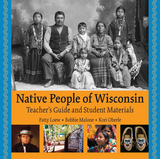 Native People of Wisconsin, Rev. TG and Student Materials
Patty Loew
Wisconsin Historical Society Press, 2016
An essential title for the upper elementary classroom, Native People of Wisconsin fills the need for accurate and authentic teaching materials about Wisconsin’s Indian Nations. Based on her research for her award-winning title for adults, Indian Nations of Wisconsin: Histories of Endurance and Survival, author Patty Loew has tailored this book specifically for young readers.
Native People of Wisconsin tells the stories of the twelve Native Nations in Wisconsin, including the history of the First People in Wisconsin and the impact of European arrivals on Native culture. Young readers will become familiar with the unique cultural traditions, tribal history, and life today for each nation.
Complete with maps, illustrations, and a detailed glossary of terms, this highly anticipated new edition includes two new chapters on the Brothertown Indian Nation and Urban Indians, as well as updates on each tribe’s current history and new profiles of outstanding young people from every nation.
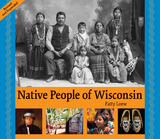 Native People of Wisconsin, Revised Edition
Patty Loew
Wisconsin Historical Society Press, 2015 "So many of the children in this classroom are Ho-Chunk, and it brings history alive to them and makes it clear to the rest of us too that this isn't just...Natives riding on horseback. There are still Natives in our society today, and we're working together and living side by side. So we need to learn about their ways as well." --Amy Laundrie, former Lake Delton Elementary School fourth grade teacher An essential title for the upper elementary classroom, "Native People of Wisconsin" fills the need for accurate and authentic teaching materials about Wisconsin's Indian Nations. Based on her research for her award-winning title for adults, "Indian Nations of Wisconsin: Histories of Endurance and Survival," author Patty Loew has tailored this book specifically for young readers. "Native People of Wisconsin" tells the stories of the twelve Native Nations in Wisconsin, including the Native people's incredible resilience despite rapid change and the impact of European arrivals on Native culture. Young readers will become familiar with the unique cultural traditions, tribal history, and life today for each nation. Complete with maps, illustrations, and a detailed glossary of terms, this highly anticipated new edition includes two new chapters on the Brothertown Indian Nation and urban Indians, as well as updates on each tribe's current history and new profiles of outstanding young people from every nation.
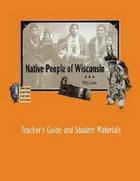 Native People of Wisconsin, TG
Bobbie Malone and Kori Oberle
Wisconsin Historical Society Press, 2003
The revised and updated Teacher's Guide for Native People of Wisconsin is available Winter 2015, ISBN 9780870207495.This teacher's guide helps students grasp fully the rich content of Native People of Wisconsin. The guide offers more structured activities that reengage students in the text itself in a manner that diverges from teacher's guides to our earlier publications. Activities for each chapter focus on interdisciplinary standards-related reading strategies, journaling, and other multidimensional skills that both reinforce and complement the content of the text. Included with the teacher's guide is an accompanying CD-ROM, produced specifically for Native People of Wisconsin of segments from several of the video series on Wisconsin Studies produced by the Wisconsin Educational Communications Board. Such interactive learning integrates reasoning and reading skills (and state standards) beyond the social studies and promise to make Native People of Wisconsin an essential part of the classroom curriculum.
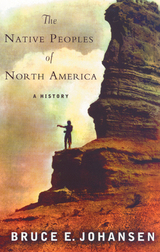 The Native Peoples of North America: A History
Johansen, Bruce
Rutgers University Press, 2007 From the earliest traces of first arrivals to the present, Native Americans represent a diverse and colorful array of cultures. Ranging North America and topics as diverse as archaeological discoveries from thousands of years ago and accounts of reservation life today, this study draws on traditional records as well as oral histories and biographical sketches to bring the history of these varied peoples to life. Johansen’s account, now available for the first time in one comprehensive volume, tackles the various theories that date Native Americans’ first probable appearance perhaps 30,000 years before Columbus’s arrival. Chapters trace the explosion of westward expansion and include personal sketches of some of those famous for native resistance such as Tecumseh’s six-nation alliance, among many others. The book also explores the new wave of Native American activism that began in the 1960s, reservation life today, the repatriation of artifacts, and the current and widespread revival of native language studies.
Written in a compelling and accessible style, this book not only provides a comprehensive introduction to the history of North American Indians, but also offers an uncommonly rich description of the material and intellectual ways that Native American cultures have influenced the life and institutions of people across the globe.
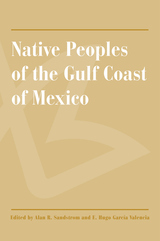 Native Peoples of the Gulf Coast of Mexico
Edited by Alan R. Sandstrom and E. Hugo García Valencia
University of Arizona Press, 2005 For too long, the Gulf Coast of Mexico has been dismissed by scholars as peripheral to the Mesoamerican heartland, but researchers now recognize that much can be learned from this region’s cultures. Peoples of the Gulf Coast—particularly those in Veracruz and Tabasco—share so many historical experiences and cultural features that they can fruitfully be viewed as a regional unit for research and analysis.
Native Peoples of the Gulf Coast of Mexico is the first book to argue that the people of this region constitute a culture area distinct from other parts of Mexico. A pioneering effort by a team of international scholars who summarize hundreds of years of history, this encyclopedic work chronicles the prehistory, ethnohistory, and contemporary issues surrounding the many and varied peoples of the Gulf Coast, bringing together research on cultural groups about which little or only scattered information has been published.
The volume includes discussions of the prehispanic period of the Gulf Coast, the ethnohistory of many of the neglected indigenous groups of Veracruz and the Huasteca, the settlement of the American Mediterranean, and the unique geographical and ecological context of the Chontal Maya of Tabasco. It provides descriptions of the Popoluca, Gulf Coast Nahua, Totonac, Tepehua, Sierra Ñähñu (Otomí), and Huastec Maya. Each chapter contains a discussion of each group’s language, subsistence and settlement patterns, social organization, belief systems, and history of acculturation, and also examines contemporary challenges to the future of each native people.
As these contributions reveal, Gulf Coast peoples share not only major cultural features but also historical experiences, such as domination by Hispanic elites beginning in the sixteenth century and subjection to forces of change in Mexico. Yet as contemporary people have been affected by factors such as economic development, increased emigration, and the spread of Protestantism, traditional cultures have become rallying points for ethnic identity.
Native Peoples of the Gulf Coast of Mexico highlights the significance of the Gulf Coast for anyone interested in the great encuentro between the Old and New Worlds and general processes of culture change. By revealing the degree to which these cultures have converged, it represents a major step toward achieving a broader understanding of the peoples of this region and will be an important reference work on these indigenous populations for years to come.
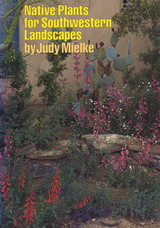 Native Plants for Southwestern Landscapes
By Judy Mielke
University of Texas Press, 1993 Winner, Xeriscape Award of Recognition, Arizona Municipal Water Users Association
Southwest Book Award, Border Regional Library Association For gardeners who want to conserve water, the color, fragrance, shade, and lush vegetation of a traditional garden may seem like a mirage in the desert. But such gardens can flourish when native plants grow in them. In this book, Judy Mielke, an expert on Southwestern gardening, offers the most comprehensive guide available to landscaping with native plants. Writing simply enough for beginning gardeners, while also providing ample information for landscape professionals, she presents over three hundred trees, shrubs, vines, grasses, groundcovers, wildflowers, cacti, and other native plants suited to arid landscapes. The heart of the book lies in the complete descriptions and beautiful color photographs of plants native to the Mojave, Sonoran, and Chihuahuan desert regions of the southwestern United States and northern Mexico. Mielke characterizes each plant and gives detailed information on its natural habitat, its water, soil, light, temperature, and pruning requirements, and its possible uses in landscape design. In addition, Mielke includes informative discussions of desert ecology, growing instructions for native plants and wildflowers, and "how-to" ideas for revegetation of disturbed desert areas using native plants. She concludes the book with an extensive list of plants by type, including those that have specific features such as shade or fragrance. She also supplies a list of public gardens that showcase native plants.
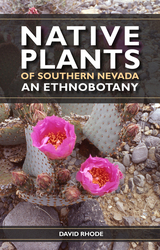 Native Plants Of Southern Nevada
David Rhode
University of Utah Press, 2002 The southern Great Basin/northern Mojave desert region is home to several different Paiute and Shoshone peoples, all of whom speak languages in the Numic language family. These societies shared a way of life based mainly on harvesting wild plants, following an annual cycle of moving and gathering the seasonally abundant resources. Because of this, they were familiar with and used the full range of plant communities, from the warm-desert Mojave to the cold-desert Great Basin, becoming practiced botanists. They learned which plants and plant parts were useful for curing certain ailments, which produced colorful dyes, which would keep spirits away, and “which crops ripened when” in a particular locality.
Native Plants of Southern Nevada arranges that plant knowledge in a traditional field-guide fashion: trees, large shrubs and vines, small shrubs and subshrubs, yuccas and agaves, cacti, herbaceous plants, grasses and grasslike plants, and bulbs. It also lists the native names given by the Owens Valley Paiute, Southern Paiute, Timbisha Shoshone, and Western Shoshone peoples, includes plant description and habitat specifics, and discusses the native uses of each plant. It gathers and compiles the wealth of information buried and scattered in ethnographic notes and monographs, and combines that with good color photographs of the plants, making them easily identifiable in the field.
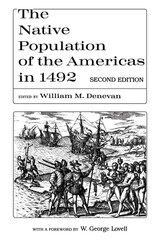 The Native Population of the Americas in 1492
Edited by William M. Denevan
University of Wisconsin Press, 1992 William M. Denevan writes that, "The discovery of America was followed by possibly the greatest demographic disaster in the history of the world." Research by some scholars provides population estimates of the pre-contact Americas to be as high as 112 million in 1492, while others estimate the population to have been as low as eight million. In any case, the native population declined to less than six million by 1650.
In this collection of essays, historians, anthropologists, and geographers discuss the discrepancies in the population estimates and the evidence for the post-European decline. Woodrow Borah, Angel Rosenblat, William T. Sanders, and others touch on such topics as the Indian slave trade, diseases, military action, and the disruption of the social systems of the native peoples. Offering varying points of view, the contributors critically analyze major hemispheric and regional data and estimates for pre- and post-European contact.
This revised edition features a new introduction by Denevan reviewing recent literature and providing a new hemispheric estimate of 54 million, a foreword by W. George Lovell of Queen's University, and a comprehensive updating of the already extensive bibliography. Research in this subject is accelerating, with contributions from many disciplines. The discussions and essays presented here can serve both as an overview of past estimates, conflicts, and methods and as indicators of new approaches and perspectives to this timely subject.
 Native Sons: Philadelphia Baseball Players
Rich Westcott
Temple University Press, 2003 Reggie Jackson (Wyncote). Roy Campanella (Philadelphia). Pat Kelly (also Philadelphia). From the most famous to the little known, 350 major league baseball players came from the Philadelphia area. Now, for the first time, celebrated baseball historian Rich Westcott brings these "native sons" home. In this short book, Westcott offers profiles of some of the most celebrated, talented, and often just hardest-working athletes to ever lift a bat and glove in major league baseball. He tells of the athletes like Mr. October, who were born here and went away, and others, like Kensington-born Jimmie Wilson, who became a star in his own hometown. Throughout Native Sons, Westcott recounts the startling careers of some incredible players, and recreates for readers the magical place they all called home. Rich Westcott's Philadelphia All-Star Team: •Reggie Jackson (Wyncote)
•Goose Goslin (Salem, NJ)
•Del Ennis (Philadelphia)
•Mickey Vernon (Marcus Hook)
•Eddie Stanky (Philadelphia)
•Jimmy Dykes (Philadelphia)
•Buck Weaver (Pottstown)
•Roy Campanella (Philadelphia)
•Bucky Walters (Philadelphia)
•Herb Pennock (Kennett Square)
•Ray Narleski (Camden, NJ)
•Eddie Miksis (Burlington, NJ)
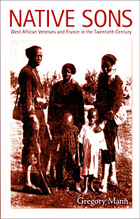 Native Sons: West African Veterans and France in the Twentieth Century
Gregory Mann
Duke University Press, 2006 For much of the twentieth century, France recruited colonial subjects from sub-Saharan Africa to serve in its military, sending West African soldiers to fight its battles in Europe, Southeast Asia, and North Africa. In this exemplary contribution to the “new imperial history,” Gregory Mann argues that this shared military experience between France and Africa was fundamental not only to their colonial relationship but also to the reconfiguration of that relationship in the postcolonial era. Mann explains that in the early twenty-first century, among Africans in France and Africa, and particularly in Mali—where Mann conducted his research—the belief that France has not adequately recognized and compensated the African veterans of its wars is widely held and frequently invoked. It continues to animate the political relationship between France and Africa, especially debates about African immigration to France. Focusing on the period between World War I and 1968, Mann draws on archival research and extensive interviews with surviving Malian veterans of French wars to explore the experiences of the African soldiers. He describes the effects their long absences and infrequent homecomings had on these men and their communities, he considers the veterans’ status within contemporary Malian society, and he examines their efforts to claim recognition and pensions from France. Mann contends that Mali is as much a postslavery society as it is a postcolonial one, and that specific ideas about reciprocity, mutual obligation, and uneven exchange that had developed during the era of slavery remain influential today, informing Malians’ conviction that France owes them a “blood debt” for the military service of African soldiers in French wars.
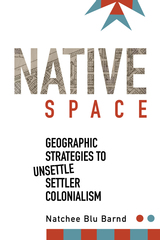 Native Space: Geographic Strategies to Unsettle Settler Colonialism
Natchee Blu Barnd
Oregon State University Press, 2017 Native Space explores how indigenous communities and individuals sustain and create geographies through place-naming, everyday cultural practices, and artistic activism, within the boundaries of the settler colonial nation of the United States. Diverging from scholarship that tends to treat indigenous geography as an analytical concept, Natchee Blu Barnd instead draws attention to the subtle manifestations of everyday cultural practices—the concrete and often mundane activities involved in the creation of indigenous space.
What are the limits and potentials of indigenous acts of spatial production? Native Space argues that control over the notion of “Indianness” still sits at the center of how space is produced in a neocolonial nation, and shows how non-indigenous communities uniquely deploy Native identities in the direct construction of colonial geographies. In short, “the Indian” serves to create White space in concrete ways. Yet, Native geographies effectively reclaim indigenous identities, assert ongoing relations to the land, and refuse the claims of settler colonialism.
Barnd creatively and persuasively uses original cartographic research and demographic data, a series of interrelated stories set in the Midwestern Plains states of Kansas and Oklahoma, an examination of visual art by contemporary indigenous artists, and discussions of several forms of indigenous activism to support his argument. With its highly original, interdisciplinary approach, Native Space makes a significant contribution to the literature in cultural and critical geography, comparative ethnic studies, indigenous studies, cultural studies, American Studies, and related fields.
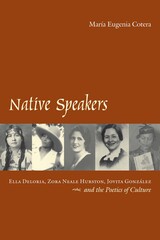 Native Speakers: Ella Deloria, Zora Neale Hurston, Jovita Gonzalez, and the Poetics of Culture
By María Eugenia Cotera
University of Texas Press, 2008 Gloria Anzaldua Book Prize, National Women's Studies Association, 2009 In the early twentieth century, three women of color helped shape a new world of ethnographic discovery. Ella Cara Deloria, a Sioux woman from South Dakota, Zora Neale Hurston, an African American woman from Florida, and Jovita González, a Mexican American woman from the Texas borderlands, achieved renown in the fields of folklore studies, anthropology, and ethnolinguistics during the 1920s and 1930s. While all three collaborated with leading male intellectuals in these disciplines to produce innovative ethnographic accounts of their own communities, they also turned away from ethnographic meaning making at key points in their careers and explored the realm of storytelling through vivid mixed-genre novels centered on the lives of women. In this book, Cotera offers an intellectual history situated in the "borderlands" between conventional accounts of anthropology, women's history, and African American, Mexican American and Native American intellectual genealogies. At its core is also a meditation on what it means to draw three women—from disparate though nevertheless interconnected histories of marginalization—into conversation with one another. Can such a conversation reveal a shared history that has been erased due to institutional racism, sexism, and simple neglect? Is there a mode of comparative reading that can explore their points of connection even as it remains attentive to their differences? These are the questions at the core of this book, which offers not only a corrective history centered on the lives of women of color intellectuals, but also a methodology for comparative analysis shaped by their visions of the world.
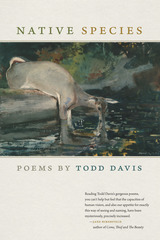 Native Species
Todd Davis
Michigan State University Press, 2019 In his sixth book of poetry, Todd Davis, who Harvard Review declares is “unflinchingly candid and enduringly compassionate,” confesses that “it’s hard to hide my love for the pleasures of the earth.” In poems both achingly real and stunningly new, he ushers the reader into a consideration of the green world and our uncertain place in it. As he writes in “Dead Letter to James Wright,” “You said / you’d wasted your life. / I’m still not sure / what species I am.” To that end, Native Species explores what happens to us—to all of us, bear, deer, mink, trout, moose, girl, boy, woman, man—when we die, and what happens to the soul as it faces extinction—if it “migrates into the lives of other creatures, becomes a fox or frog, an ant in a colony serving a queen, a red salamander entering a pond before it freezes.” He wonders, too, “How many new beginnings are we granted?” It’s a beautiful question, and it freights, simultaneously, possibility and pain. These are the verses of a poet maturing into a new level of thinking, full of tenderness and love for the home that carries us all.
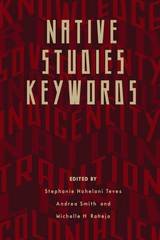 Native Studies Keywords
Edited by Stephanie Nohelani Teves, Andrea Smith, and Michelle Raheja
University of Arizona Press, 2015 Native Studies Keywords explores selected concepts in Native studies and the words commonly used to describe them, words whose meanings have been insufficiently examined. This edited volume focuses on the following eight concepts: sovereignty, land, indigeneity, nation, blood, tradition, colonialism, and indigenous knowledge. Each section includes three or four essays and provides definitions, meanings, and significance to the concept, lending a historical, social, and political context.
Take sovereignty, for example. The word has served as the battle cry for social justice in Indian Country. But what is the meaning of sovereignty? Native peoples with diverse political beliefs all might say they support sovereignty—without understanding fully the meaning and implications packed in the word.
The field of Native studies is filled with many such words whose meanings are presumed, rather than articulated or debated. Consequently, the foundational terms within Native studies always have multiple and conflicting meanings. These terms carry the colonial baggage that has accrued from centuries of contested words.
Native Studies Keywords is a genealogical project that looks at the history of words that claim to have no history. It is the first book to examine the foundational concepts of Native American studies, offering multiple perspectives and opening a critical new conversation.
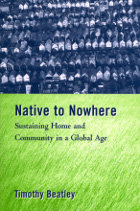 Native to Nowhere: Sustaining Home And Community In A Global Age
Timothy Beatley
Island Press, 2005 Meaningful places offer a vital counterbalance to the forces of globalization and sameness that are overtaking our world, and are an essential element in the search for solutions to current sustainability challenges. In Native to Nowhere, author Tim Beatley draws on extensive research and travel to communities across North America and Europe to offer a practical examination of the concepts of place and place-building in contemporary life. Beatley reviews the many current challenges to place, considers trends and factors that have undermined place and place commitments, and discusses in detail a number of innovative ideas and compelling visions for strengthening place. Native to Nowhere brings together a wide range of new ideas and insights about sustainability and community, and introduces readers to a host of innovative projects and initiatives. Native to Nowhere is a compelling source of information and ideas for anyone seeking to resist place homogenization and build upon the unique qualities of their local environment and community.
 Native To The Nation: Disciplining Landscapes And Bodies In Australia
Allaine Cerwonka
University of Minnesota Press, 2004 In a world increasingly marked by migration and dislocation, the question of displacement, and of establishing a sense of belonging, has become ever more common and ever more urgent. But what of those who stay in place? How do people who remain in their place of origin or ancestral homeland rearticulate a sense of connection, of belonging, when ownership of the territory they occupy is contested? Focusing on Australia, Allaine Cerwonka examines the physical and narrative spatial practices by which people reclaim territory in the wake of postcolonial claims to land by indigenous people and new immigration of “foreigners.” As a multicultural, postcolonial nation whose claims to land until recently were premised on the notion of the continent as “empty” (terra nullius), Australia offers an especially rich lens for understanding the reterritorialization of the nation-state in an era of globalization. To this end, Native to the Nation provides a multisited ethnography of two communities in Melbourne, the Fitzroy Police Station and the East Melbourne Garden Club, allowing us to see how bodies are managed and nations physically constructed in everyday confrontations and cultivations. Allaine Cerwonka is assistant professor of women’s studies and political science at Georgia State University.
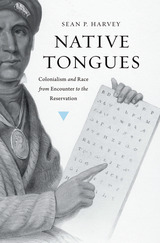 Native Tongues: Colonialism and Race from Encounter to the Reservation
Sean P. Harvey
Harvard University Press, 2015 Sean Harvey explores the morally entangled territory of language and race in this intellectual history of encounters between whites and Native Americans in the eighteenth and nineteenth centuries. Misunderstandings about the differences between European and indigenous American languages strongly influenced whites’ beliefs about the descent and capabilities of Native Americans, he shows. These beliefs would play an important role in the subjugation of Native peoples as the United States pursued its “manifest destiny” of westward expansion.
Over time, the attempts of whites to communicate with Indians gave rise to theories linking language and race. Scholars maintained that language was a key marker of racial ancestry, inspiring conjectures about the structure of Native American vocal organs and the grammatical organization and inheritability of their languages. A racially inflected discourse of “savage languages” entered the American mainstream and shaped attitudes toward Native Americans, fatefully so when it came to questions of Indian sovereignty and justifications of their forcible removal and confinement to reservations.
By the mid-nineteenth century, scientific efforts were under way to record the sounds and translate the concepts of Native American languages and to classify them into families. New discoveries by ethnologists and philologists revealed a degree of cultural divergence among speakers of related languages that was incompatible with prevailing notions of race. It became clear that language and race were not essentially connected. Yet theories of a linguistically shaped “Indian mind” continued to inform the U.S. government’s efforts to extinguish Native languages for years to come.
Native Traditions in the Postconquest World: A Symposium at Dumbarton Oaks, 2nd through 4th October 1992
Elizabeth Hill Boone
Harvard University Press, 1998 This volume consists of papers from the 1992 Dumbarton Oaks conference marking the quincentennial of Columbus’s landing in the Americas. By directing their attention toward the indigenous response to the Spanish intrusion, to the cultural adjustments and negotiations it required, the editors and authors of this volume hope that a better understanding can be achieved of the cultural features that made native societies so resilient.
 Native Voices: Indigenous American Poetry, Craft, and Conversations
Edited by CMarie Fuhrman and Dean Rader
Tupelo Press, 2019 “I write from a continuous space of erasure. Poetry was the one way that I was able to hold onto…my history, geography, and language.” — Craig Santos Perez, contributor
In this groundbreaking anthology of Indigenous poetry and prose, Native poems, stories, and essays are informed with a knowledge of both what has been lost and what is being restored. It offers a diverse collection of stories told by Indigenous writers about themselves, their histories, and their present. It is a celebration of culture and the possibilities of language.
Featuring forty-four poets, including Ishmael Hope, Bojan Louis, Ruby Murray, Simon Ortiz, Leslie Marmon Silko, Luci Tapahonso, Joy Harjo, dg okpik, Sherwin Bitsui, Heid E. Erdrich, Layli Long Soldier, and Orlando White.
Original influence essays by Diane Glancy on Lorca, Chrystos on Audre Lorde, Louise Erdrich on Elizabeth Bishop, LeAnne Howe on W. D. Snodgrass, Allison Hedge Coke on Delmore Schwartz, Suzanne Rancourt on Ai, and M. L. Smoker on Richard Hugo, among others.
And, a selection of resonant work chosen from previous generations of Native artists.
“There really is no better anthology out there that collects indigenous poets publishing from 1960 to the present.” — Dean Rader, co-editor
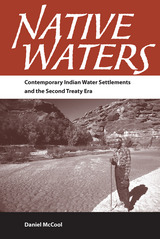 Native Waters: Contemporary Indian Water Settlements and the Second Treaty Era
Daniel McCool
University of Arizona Press, 2002 Since the beginning of the reservation era, the bitter conflict between Indians and non-Indians over water rights was largely confined to the courtroom. But in the 1980s the federal government began to emphasize negotiated settlements over lawsuits, and the settlements are changing water rights in fundamental ways—not only for tribes but also for non-Indian communities that share scarce water resources with Indians.In Native Waters, Daniel McCool describes the dramatic impact these settlements are having both on Indian country and on the American West as a whole. Viewing the settlements as a second treaty era, he considers whether they will guarantee the water future of reservations—or, like treaties of old, will require tribes to surrender vast resources in order to retain a small part of their traditional homelands. As one tribal official observed, "It's like your neighbors have been stealing your horses for many years, and now we have to sit down and decide how many of those horses they get to keep."Unlike technical studies of water policy, McCool's book is a readable account that shows us real people attempting to end real disputes that have been going on for decades. He discusses specific water settlements using a combination of approaches—from personal testimony to traditional social science methodology—to capture the richness, complexity, and human texture of the water rights conflict. By explaining the processes and outcomes in plain language and grounding his presentation in relevant explanations of Indian culture, he conveys the complexity of the settlements for readers from a wide range of disciplines.Native Waters illustrates how America is coming to grips with an issue that has long been characterized by injustice and conflict, seeking to enhance our understanding of the settlements in the hope that this understanding will lead to better settlements for all parties. As one of the first assessments of a policy that will have a pervasive impact for centuries to come, it shows that how we resolve Indian water claims tells us a great deal about who we are as a nation and how we confront difficult issues involving race, culture, and the environment.
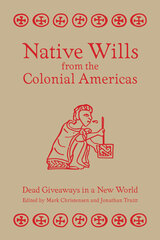 Native Wills from the Colonial Americas: Dead Giveaways in a New World
Mark Z. Christensen and Jonathan Truitt
University of Utah Press, 2015 Native Wills from the Colonial Americas showcases new testamentary sources from the sixteenth to the eighteenth centuries. It provides readers with translations and analyses of wills written in Spanish, Nahuatl, Yucatec Maya, K’iche’ Maya, Mixtec, and Wampanoag. Divided into three thematic sections, the book provides insights and details that further our understanding of indigenous life in the Americas under colonial rule. Part One employs testaments to highlight the women of Native America and the ways their lives frequently challenged prescribed gender roles and statuses. Part Two uses testaments to illustrate the strategies of the elite in both negotiating and maintaining their power in a colonial, Spanish world. Part Three contributes to our understanding of the individual and collective nature of death by extracting from wills the importance of conversion, kinship, and societal ties in the colonial Americas. Capturing individual voices during dramatic periods of change, the documents presented here help us understand how cultures both adapt and persist.
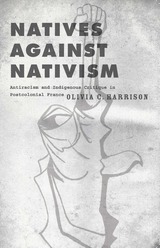 Natives against Nativism: Antiracism and Indigenous Critique in Postcolonial France
Olivia C. Harrison
University of Minnesota Press, 2023 Examining the intersection of Palestine solidarity movements and antiracist activism in France from the 1970s to the present
For the pasty fifty years, the Palestinian question has served as a rallying cry in the struggle for migrant rights in postcolonial France, from the immigrant labor associations of the 1970s and Beur movements of the 1980s to the militant decolonial groups of the 2000s. In Natives against Nativism, Olivia C. Harrison explores the intersection of anticolonial solidarity and antiracist activism from the 1970s to the present. Natives against Nativism analyzes a wide range of texts—novels, memoirs, plays, films, and militant archives—that mobilize the twin figures of the Palestinian and the American Indian in a crossed critique of Eurocolonial modernity. Harrison argues that anticolonial solidarity with Palestinians and Indigenous Americans has been instrumental in developing a sophisticated critique of racism across imperial formations—in this case, France, the United States, and Israel. Serving as the first relational study of antiracism in France, Natives against Nativism observes how claims to indigeneity have been deployed in multiple directions, both in the ongoing struggle for migrant rights and racial justice, and in white nativist claims in France today.
 Natives and Newcomers: The Ordering of Opportunity in Mid-Nineteenth-Century Poughkeepsie
Clyde Griffen and Sally Griffen
Harvard University Press, 1978 This important contribution to the literature on mobility in nineteenth-century America examines with a fine microscope the world of work in Poughkeepsie, New York. The careers of all workers in each occupation--the entire labor force in this city with an 1870 population of 20,000--are traced over three decades. The book clarifies for the first time in any mobility study the meaning of shifts in employment through detailed examination of individual occupations. It shows concretely how industrialization altered the structure of opportunity; it specifies how the change affected the occupational niches and paths of mobility found by Irish, German, and British newcomers compared to white and black natives. By reassessing the significance of achieving particular occupations such as clerking and craft proprietorships, the book poses important questions for historical interpretations of gross indices of mobility such as shift from blue-collar to white-collar status.
The authors favor comparability in their general analysis of mobility from federal census rolls and city directories, but they refine it through a broad research base, including tax rolls, local newspapers, and voluntary association records. Their study is one of the first to make systematic use of the credit reports on every business in one city from the R. G. Dun & Co. manuscripts. It also provides the first full description of the employment of women, permitting comparison with the opportunities for men. Other distinctive aspects include treatment of the crucial dimension of wealth and income, close attention to shifts in occupations produced by transformations in technology, marketing, and finance, and some disentangling of the influence of religion and nationality upon achievement.
The fine lens of this microscopic study has enabled Clyde Griffen and Sally Griffen to describe geographic, occupational, and property mobility in a small city with statistical precision, to illuminate the larger social processes which shaped that mobility, and, simultaneously, to vivify the working lives of anonymous American men and women.
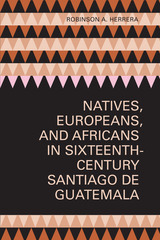 Natives, Europeans, and Africans in Sixteenth-Century Santiago de Guatemala
By Robinson A. Herrera
University of Texas Press, 2003 The first century of Spanish colonization in Latin America witnessed the birth of cities that, while secondary to great metropolitan centers such as Mexico City and Lima, became important hubs for regional commerce. Santiago de Guatemala, the colonial capital of Central America, was one of these. A multiethnic and multicultural city from its beginning, Santiago grew into a vigorous trading center for agrarian goods such as cacao and cattle hides. With the wealth this commerce generated, Spaniards, natives, and African slaves built a city that any European of the period would have found familiar. This book provides a more complete picture of society, culture, and economy in sixteenth-century Santiago de Guatemala than has ever before been drawn. Robinson Herrera uses previously unstudied primary sources, including testaments, promissory notes, and work contracts, to recreate the lives and economic activities of the non-elite sectors of society, including natives, African slaves, economically marginal Europeans, and people of mixed descent. His focus on these groups sheds light on the functioning of the economy at the lower levels and reveals how people of different ethnic groups formed alliances to create a vibrant local and regional economy based on credit. This portrait of Santiago also increases our understanding of how secondary Spanish American cities contributed vitally to the growth of the colonies.
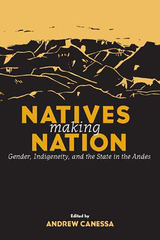 Natives Making Nation: Gender, Indigeneity, and the State in the Andes
Andrew Canessa
University of Arizona Press, 2005 In Bolivia today, the ability to speak an indigenous language is highly valued among educated urbanites as a useful job skill, but a rural person who speaks a native language is branded with lower social status. Likewise, chewing coca in the countryside spells “inferior indian,” but in La Paz jazz bars it’s decidedly cool. In the Andes and elsewhere, the commodification of indianness has impacted urban lifestyles as people co-opt indigenous cultures for qualities that emphasize the uniqueness of their national culture.
This volume looks at how metropolitan ideas of nation employed by politicians, the media and education are produced, reproduced, and contested by people of the rural Andes—people who have long been regarded as ethnically and racially distinct from more culturally European urban citizens. Yet these peripheral “natives” are shown to be actively engaged with the idea of the nation in their own communities, forcing us to re-think the ways in which indigeneity is defined by its marginality.
The contributors examine the ways in which numerous identities—racial, generational, ethnic, regional, national, gender, and sexual—are both mutually informing and contradictory among subaltern Andean people who are more likely now to claim an allegiance to a nation than ever before. Although indians are less often confronted with crude assimilationist policies, they continue to face racism and discrimination as they struggle to assert an identity that is more than a mere refraction of the dominant culture. Yet despite the language of multiculturalism employed even in constitutional reform, any assertion of indian identity is likely to be resisted. By exploring topics as varied as nation-building in the 1930s or the chuqila dance, these authors expose a paradox in the relation between indians and the nation: that the nation can be claimed as a source of power and distinct identity while simultaneously making some types of national imaginings unattainable.
Whether dancing together or simply talking to one another, the people described in these essays are shown creating identity through processes that are inherently social and interactive. To sing, to eat, to weave . . . In the performance of these simple acts, bodies move in particular spaces and contexts and do so within certain understandings of gender, race and nation. Through its presentation of this rich variety of ethnographic and historical contexts, Natives Making Nation provides a finely nuanced view of contemporary Andean life.
Natives of My Person
George Lamming
University of Michigan Press, 1992 A compelling novel of slavery and colonialism
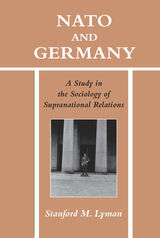 NATO and Germany: A Study in the Sociology of Supranational Relations
Stanford Lyman
University of Arkansas Press, 1995 Focusing on the Cold War years, thismonograph examines the processes, problems, and policies through which the Federal Republic of Germany was formed and admitted into the North Atlantic Treaty Organization (NATO). The author compares the situation of Weimar Germany during its short-lived postwar decade with that of the Federal Republic by applying geopolitical concepts and theory, illustrating Germany’s territorial uniqueness and how that special aspect of its place on the European continent in?uenced the nation’s diplomacy in both eras. During the late 1940s and the 1950s, the problem presented by Germany to the other NATO allies was how to secure and maintain the Federal Republic’s allegiance to the anticommunist alliance without eliminating the country’s desire to be reunited with its Soviet-dominated eastern section. How both NATO and Germany managed to maintain themselves in a state of dynamic equilibrium throughout the era of the Cold War illustrates the concept of international organization called “cooptation,” which Lyman helped to de?ne and expand. The epilogue explores the larger issues that the case study illuminates: global space, national territorialization, collective identity, and ethnocentrism. Considering the current con?ict in the Balkans as it relates to the new Germany and the role of NATO, this far-reaching book is especially relevant with its suggestions for a basic supranational sociology.
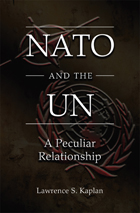 NATO and the UN: A Peculiar Relationship
Lawrence S. Kaplan
University of Missouri Press, 2010 When the North Atlantic Treaty Organization was formed just four years after the United Nations, it provided its members with a measure of security in the face of the Soviet Union’s veto power in the senior organization’s Security Council, as well as a means of coping with Communist expansion. Ever since then, the two institutions have been competitors in maintaining peace in the postwar world. Occasionally they have cooperated; more often they have not.
In NATO and the UN, Lawrence Kaplan, one of the leading experts on NATO, examines the intimate and often contentious relations between the two and describes how this relationship has changed over the course of two generations. Kaplan documents the many interactions between them throughout their interconnected history, focusing on the major flashpoints where either NATO clashed with UN leadership, the United States and the Soviet Union confronted each other directly, or fissures within the Atlantic alliance were dramatized in UN sessions. He draws on the organizations’ records as well as unpublished files from the National Archives and its counterparts in Britain, France, and Germany to provide the best account yet of working relations between the two organizations. By examining their complex connection with regard to such conflicts as the Balkan wars, Kaplan enhances our understanding of both institutions.
Crisis management has been a source of conflict between the two in the past but has also served as an incentive for collaboration, and Kaplan shows how this peculiar but persistent relationship has functioned. Although the Cold War years are gone, the UN remains the setting where NATO problems have played out, as they have in Iraq during recent decades. And it is to NATO that the UN has turned for military power to face crises in the Balkans, Middle East, and South Asia.
Kaplan stresses the importance of both organizations in the twenty-first century, recognizing their potential to advance global peace and security while showing how their tangled history explains the obstacles that stand in the way. His work offers significant findings that will especially impact our understanding of NATO while filling a sizable gap in our understanding of post-World War II diplomacy.
 NATO in Search of a Vision
Gülnur Aybet and Rebecca R. Moore, Editors. Foreword by Lawrence Freedman
Georgetown University Press, 2010 As the NATO Alliance enters its seventh decade, it finds itself involved in an array of military missions ranging from Afghanistan to Kosovo to Sudan. It also stands at the center of a host of regional and global partnerships. Yet, NATO has still to articulate a grand strategic vision designed to determine how, when, and where its capabilities should be used, the values underpinning its new missions, and its relationship to other international actors such as the European Union and the United Nations. The drafting of a new strategic concept, begun during NATO’s 60th anniversary summit, presents an opportunity to shape a new transatlantic vision that is anchored in the liberal democratic principles so crucial to NATO’s successes during its Cold War years. Furthermore, that vision should be focused on equipping the Alliance to anticipate and address the increasingly global and less predictable threats of the post-9/11 world. This volume brings together scholars and policy experts from both sides of the Atlantic to examine the key issues that NATO must address in formulating a new strategic vision. With thoughtful and reasoned analysis, it offers both an assessment of NATO’s recent evolution and an analysis of where the Alliance must go if it is to remain relevant in the twenty-first century.
 NATO's Return to Europe: Engaging Ukraine, Russia, and Beyond
Rebecca R. Moore and Damon Coletta, Editors. Foreword by Nicholas Burns
Georgetown University Press NATO’s 2010 Strategic Concept officially broadened the alliance’s mission beyond collective defense, reflecting a peaceful Europe and changes in alliance activities. NATO had become an international security facilitator, a crisis-manager even outside Europe, and a liberal democratic club as much as a mutual-defense organization. However, Russia’s re-entry into great power politics has changed NATO’s strategic calculus. Russia’s aggressive annexation of Crimea in 2014 and its ongoing military support for Ukrainian separatists dramatically altered the strategic environment and called into question the liberal European security order. States bordering Russia, many of which are now NATO members, are worried, and the alliance is divided over assessments of Russia’s behavior. Against the backdrop of Russia’s new assertiveness, an international group of scholars examines a broad range of issues in the interest of not only explaining recent alliance developments but also making recommendations about critical choices confronting the NATO allies. While a renewed emphasis on collective defense is clearly a priority, this volume’s contributors caution against an overcorrection, which would leave the alliance too inwardly focused, play into Russia’s hand, and exacerbate regional fault lines always just below the surface at NATO. This volume places rapid-fire events in theoretical perspective and will be useful to foreign policy students, scholars, and practitioners alike.
 Natura: Environmental Aesthetics After Landscape
Edited by Jens Andermann, Lisa Blackmore, and Dayron Carrillo Morell
Diaphanes, 2018 For poets, artists, philosophers, and even environmental activists and historians, the landscape has long constituted a surface onto which to project visions of utopia beyond modernity and capitalism. Yet amid fracking, deep sea drilling, biopiracy, and all the other environmental ravages of late capitalism, we are brought to re-examine the terms of landscape formations. In what ways might artistic, scholarly, and scientific work on nature push our thinking past seeing the world as something we act on, and instead give agency to the landscape itself?
Natura takes up this challenge, exploring how recent activist practices and eco-artistic turns in Latin America can help us to reconfigure the categories of nature and the human. Moving from botanical explorations of early modernity, through the legacies of mid-twentieth-century landscape design, up to present struggles for the rights of nature and speculative post-human creations, the critical essays and visual contributions in this anthology use interdisciplinary encounters to reimagine the landscape and how we inhabit it.
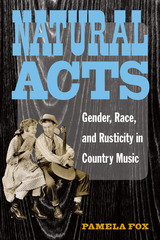 Natural Acts: Gender, Race, and Rusticity in Country Music
Pamela Fox
University of Michigan Press, 2009 Whether found in country barn dances, the plaintive twang of Hank Williams, the glitzy glamour of Dolly Parton, or the country-pop sound of Faith Hill, country music has always maintained an allegiance to its own authenticity. Its specific sounds and images have changed over the past century, but country music has consistently been associated with rusticity, a notion connected to the working class and rooted in ideals like unspoiled rural life and values and humble origins. The music suggests not only uncomplicated musical arrangements and old-time instruments such as the banjo and fiddle, but performers who identify with their everyday fans. Natural Acts explores the ways that country musicians -- particularly women artists -- have established a "natural" country identity. Pamela Fox focuses on five revealing moments in country performance: blackface comedy during country music's "Golden Age" of pre-1945 radio and stage programming; the minstrel's "rube" or hillbilly equivalent in the same period; postwar honky-tonk music and culture; the country star memoir or autobiography of the '80s and '90s; and the recent roots phenomenon known as alt.country. "'All I gotta do is act naturally,' Buck Owens sang, and Pamela Fox knows where the acting comes in. From early hillbilly acts to alt.country, Natural Acts lays bare, with wide-ranging scholarship and incisive analysis, the ideologies of authenticity on which country music rests. As engrossing and useful as any book I know on country music." ---Eric Lott, author of Love and Theft: Blackface Minstrelsy and the American Working Class "The first completely mature book of country music historical criticism. It is a deep investigation of country music's power to articulate the displaced pleasures and anxieties of a society wracked by structural change. Historically rigorous, Fox uncovers documents that demonstrate the ongoing power of minstrelsy in barn dance programs across the country past World War II; musically and lyrically astute, she shows how the best honky-tonk music simultaneously critiques the dangers of that setting while seductively luring listeners to those sawdust and alcohol drenched environments; with her ear attuned to the formal complexities of autobiography, Fox directs our attention to the contradictory performance of identity that characterizes the life stories of Reba McEntire, Naomi Judd, Dolly Parton, and others. Natural Acts is provocative, stunning, and engagingly written. Country music studies has come of age." ---Barry Shank, The Ohio State University
Natural Allies: Women's Associations in American History
Anne Firor Scott
University of Illinois Press, 1991 America's female benevolent societies took root in the 1790s. Initially founded on notions of Christian duty and hope of heavenly reward, these groups produced volunteers dedicated to providing aid to unfortunates in general and women and children in particular. Anne Frior Scott explores the history of these aid societies and how they allowed women to influence America's social agenda and make inroads into politics long before they could vote. Scott reveals how women from all corners of society took part; examines their changing role in the midst of tumultuous times and during the rise of the welfare state; assesses the overlooked accomplishment of black women's organizations from the early days of the republic; and looks at the kinds of enduring community institutions women's organizations founded and maintained.
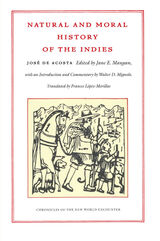 Natural and Moral History of the Indies
José de Acosta
Duke University Press, 2002 The Natural and Moral History of the Indies, the classic work of New World history originally published by José de Acosta in 1590, is now available in the first new English translation to appear in several hundred years. A Spanish Jesuit, Acosta produced this account by drawing on his own observations as a missionary in Peru and Mexico, as well as from the writings of other missionaries, naturalists, and soldiers who explored the region during the sixteenth century. One of the first comprehensive investigations of the New World, Acosta’s study is strikingly broad in scope. He describes the region’s natural resources, flora and fauna, and terrain. He also writes in detail about the Amerindians and their religious and political practices.
A significant contribution to Renaissance Europe's thinking about the New World, Acosta's Natural and Moral History of the Indies reveals an effort to incorporate new information into a Christian, Renaissance worldview. He attempted to confirm for his European readers that a "new" continent did indeed exist and that human beings could and did live in equatorial climates. A keen observer and prescient thinker, Acosta hypothesized that Latin America's indigenous peoples migrated to the region from Asia, an idea put forth more than a century before Europeans learned of the Bering Strait. Acosta's work established a hierarchical classification of Amerindian peoples and thus contributed to what today is understood as the colonial difference in Renaissance European thinking.
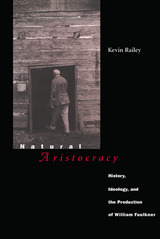 Natural Aristocracy: History, Ideology, and the Production of William Faulkner
Kevin Railey
University of Alabama Press, 1999 Kevin Railey uses a materialist critical approach--which envisions literature as a discourse necessarily interactive with other forces in the world--to identify and historicize Faulkner’s authorial identity. Working from the assumption that Faulkner was deeply affected by the sociohistorical forces that surrounded his life, Railey explores the interrelationships between American history and Faulkner’s fiction, between southern history and Faulkner’s subjectivity. Railey argues that Faulkner’s obsession with history and his struggle with specific ideologies affecting southern society and his family guided his development as an artist, influencing and overdetermining characterizations and narrative structures as well as the social vision manifest in his work. By seeing Faulkner the artist and Faulkner the man as one and the same, Railey concludes that the celebrated author wrote himself into history in a way that satisfied the image he had of himself as a natural, artistic aristocrat, based on the notion of natural aristocracy. After examining two prevailing and opposing ideologies in the South of Faulkner’s lifetime--paternalism and liberalism--Railey shows how Faulkner’s working-through of his identifications with these forces helped develop his values and perceptions as an artist and individual. Railey reads Faulkner’s fiction as exploring social concerns about the demise of paternalism, questions of leadership within liberalism, and doubts about both an aristocracy of heritage and one of wealth. This reading of The Sound and the Fury, As I Lay Dying, Sanctuary, Light in August, Absalom, Absalom!, the Snopes trilogy and The Reivers details Faulkner’s explorations of various manifestations of paternalism and liberalism and the intense conflict between them, as well as his attempts to resolve that conflict. Providing new insights into the full range of Faulkner’s fiction, Natural Aristocracy is the first systematic materialist critique of the author and his world.
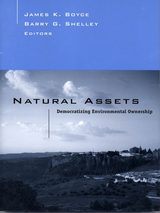 Natural Assets: Democratizing Ownership Of Nature
Edited by James K. Boyce and Barry G. Shelley
Island Press, 2003 Low-income communities frequently suffer from a lack of access to, or lack of control over, the natural resources that surround them. In many cases, their local environment has been degraded by years of resource extraction and pollution by distant corporations or government agencies. In such settings, initiatives that build natural assets in the hands of the poor can play an important role in poverty-fighting efforts. Natural Assets explores a range of strategies for expanding the quantity and enhancing the quality of natural assets in the hands of low-income individuals and communities. The book: • examines the social construction of rights to natural resources and the environment
• describes efforts to curtail pollution of the air, land, and water and to reclaim resources that have been appropriated and abused by polluters
• considers sustainable agricultural practices that not only maintain but actually increase the stock of natural capital
• explores strategies to promote sustainable forest management while reducing rural poverty
• examines the prospects for building natural assets in urban areas Drawing on evidence from across the United States, the authors demonstrate that safeguarding the environment and improving the well-being of the poor can be mutually reinforcing goals.
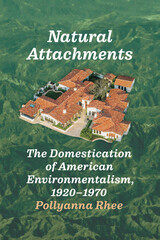 Natural Attachments: The Domestication of American Environmentalism, 1920–1970
Pollyanna Rhee
University of Chicago Press, 2025 A nuanced analysis takes a California oil spill as its point of departure to show how affluent homeowners pushed for an environmentalism that would protect not only the earth but also property and community norms.
A massive oil spill in the Pacific Ocean near Santa Barbara, California, in 1969 quickly became a landmark in the history of American environmentalism, helping to inspire the creation of both the Environmental Protection Agency and Earth Day. But what role did the history of Santa Barbara itself play in this? As Pollyanna Rhee shows, the city’s past and demographics were essential to the portrayal of the oil spill as momentous. Moreover, well-off and influential Santa Barbarans were positioned to “domesticate” the larger environmental movement by embodying the argument that individual homes and families—not society as a whole—needed protection from environmental abuses. This soon would put environmental rhetoric and power to fundamentally conservative—not radical—ends.
 Natural Attachments: The Domestication of American Environmentalism, 1920–1970
Pollyanna Rhee
University of Chicago Press, 2025 This is an auto-narrated audiobook version of this book.
A nuanced analysis takes a California oil spill as its point of departure to show how affluent homeowners pushed for an environmentalism that would protect not only the earth but also property and community norms.
A massive oil spill in the Pacific Ocean near Santa Barbara, California, in 1969 quickly became a landmark in the history of American environmentalism, helping to inspire the creation of both the Environmental Protection Agency and Earth Day. But what role did the history of Santa Barbara itself play in this? As Pollyanna Rhee shows, the city’s past and demographics were essential to the portrayal of the oil spill as momentous. Moreover, well-off and influential Santa Barbarans were positioned to “domesticate” the larger environmental movement by embodying the argument that individual homes and families—not society as a whole—needed protection from environmental abuses. This soon would put environmental rhetoric and power to fundamentally conservative—not radical—ends.
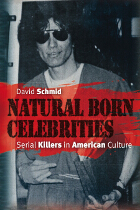 Natural Born Celebrities: Serial Killers in American Culture
David Schmid
University of Chicago Press, 2005 Jeffrey Dahmer. Ted Bundy. John Wayne Gacy. Over the past thirty years, serial killers have become iconic figures in America, the subject of made-for-TV movies and mass-market paperbacks alike. But why do we find such luridly transgressive and horrific individuals so fascinating? What compels us to look more closely at these figures when we really want to look away? Natural Born Celebrities considers how serial killers have become lionized in American culture and explores the consequences of their fame. David Schmid provides a historical account of how serial killers became famous and how that fame has been used in popular media and the corridors of the FBI alike. Ranging from H. H. Holmes, whose killing spree during the 1893 Chicago World's Fair inspired The Devil in the White City, right up to Aileen Wuornos, the lesbian prostitute whose vicious murder of seven men would serve as the basis for the hit film Monster, Schmid unveils a new understanding of serial killers by emphasizing both the social dimensions of their crimes and their susceptibility to multiple interpretations and uses. He also explores why serial killers have become endemic in popular culture, from their depiction in The Silence of the Lambs and The X-Files to their becoming the stuff of trading cards and even Web sites where you can buy their hair and nail clippings. Bringing his fascinating history right up to the present, Schmid ultimately argues that America needs the perversely familiar figure of the serial killer now more than ever to manage the fear posed by Osama bin Laden since September 11. "This is a persuasively argued, meticulously researched, and compelling examination of the media phenomenon of the 'celebrity criminal' in American culture. It is highly readable as well."—Joyce Carol Oates
Natural Causes: Poems
Mark Cox
University of Pittsburgh Press, 2004 Death haunts the pages of Natural Causes, but so does compassion and love. There is little darkness here, and less despair, despite the abundance of cemeteries, loss, and ghosts—both real and imagined.
Mark Cox’s youthful bravado has given way in these poems to an assured sense of understatement. The weight of fatherhood, the loss of a grandmother, the fear of loneliness—these are the details around which Cox plumbs the depths of mortality and memory.
Fully comfortable with the domestic tableau from which he writes, this is a poet never complacent. The penchants for metaphor and the resonant turn of phrase that informed Cox’s earlier work remain as vibrant as ever, indeed are heightened, as he masterfully affirms and celebrates the range of familial complexity and human connectedness.
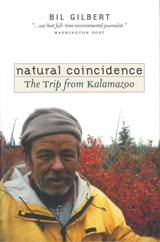 Natural Coincidence: The Trip from Kalamazoo
Bil Gilbert
University of Michigan Press, 2004 Bil Gilbert is one of America's most preeminent and popular essayists and nature writers. If you've ever opened a copy of Smithsonian, Audubon, or Sports Illustrated magazines, you've likely come across an article by Gilbert. In the past four decades, more than 350 of his articles and essays have appeared in places ranging from Esquire to the New York Times.
Natural Coincidence collects some of Bil Gilbert's finest writing, covering a diverse range of subjects that include investigations of the biology of Tasmanian devils, the lives and loves of snapping turtles, and an appreciation of the intelligence of crows. Perfectly suiting this eclectic choice of angles is Gilbert's unique writing style, a blend of unprepossessing erudition, wit, and honesty that has been compared to Aldo Leopold's Sand County Almanac.
The collection opens with a memoir of a childhood Christmas in western Michigan, before Gilbert's fascination with the natural world drew him to more exotic locales like Tasmania, Alaska, Nova Scotia, and Manhattan to write about such topics as the javelina, bigfoot, buffalo, and ringtails.
"More than 50 years ago," writes Gilbert, "without a clear notion about why or where I was going, I set off on a trip from Kalamazoo, Michigan. I am still traveling toward an unknown destination. But along the way, much more for reasons of good luck than thoughtful planning, I have met many wonderful beings and happenings. The essays appearing in Natural Coincidence represent an attempt to describe some of these wonders. I like to think, or at least pretend, that the inspiration for and theme of this book is gratitude."
Natural Communities
Lee R. Dice
University of Michigan Press, 1952 Lee R. Dice has devoted many years to the study of ecology and its relation to other branches of biology. In Natural Communities he describes the more important methods and concepts of the subject in order to give the reader a better understanding of the importance of ecologic communities to the world of life.
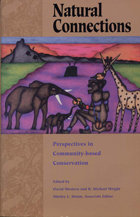 Natural Connections: Perspectives In Community-Based Conservation
Edited by David Western and R. Michael Wright; Associate Editor Shirley Strum
Island Press, 1994 Both realism and justice demand that efforts to conserve biological diversity address human needs as well. The most promising hope of accomplishing such a goal lies in locally based conservation efforts -- an approach that seeks ways to make local communities the beneficiaries and custodians of conservation efforts. Natural Connections focuses on rural societies and the conservation of biodiversity in rural areas. It represents the first systematic analysis of locally based efforts, and includes a comprehensive examination of cases from around the world where the community-based approach is used. The book provides: - an overview of community-based conservation in the context of the debate over sustainable development, poverty, and environmental decline
- case studies from the developed and developing worlds -- Indonesia, Peru, Australia, Zimbabwe, Costa Rica, the United Kingdom -- that present detailed examples of the locally based approach to conservation
- a review of the principal issues arising from community-based programs
- an agenda for future action
Natural Consequences: A Novel
Elia Barceló
Vanderbilt University Press, 2021 The Xhroll, an alien humanoid race whose infertility is bringing them near extinction, come into contact with a crew of fertile human astronauts. Their encounter on a remote space station will have significant consequences for both species when a human male winds up impregnated.
Author Elia Barceló's setup is funny and feminist, and it raises questions of what it means to be "male" or "female"—prescient, considering this novel was first published twenty-five years ago. The anniversary is being celebrated now with the first English-language edition, translated by veteran sci-fi translators Yolanda Molina-Gavilán and Andrea Bell, who also provide a critical introduction.
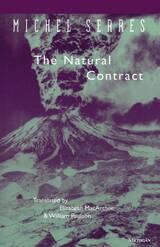 The Natural Contract
Michel Serres
University of Michigan Press, 1995 Global environmental change, argues Michel Serres, has forced us to reconsider our relationship to nature. In this translation of his influential 1990 book Le Contrat Naturel, Serres calls for a natural contract to be negotiated between Earth and its inhabitants.
World history is often referred to as the story of human conflict. Those struggles that are seen as our history must now include the uncontrolled violence that humanity perpetrates upon the earth, and the uncontrollable menace to human life posed by the earth in reaction to this violence. Just as a social contract once brought order to human relations, Serres believes that we must now sign a "natural contract" with the earth to bring balance and reciprocity to our relations with the planet that gives us life. Our survival depends on the extent to which humans join together and act globally, on an earth now conceived as an entity.
Tracing the ancient beginnings of modernity, Serres examines the origins and possibilities of a natural contract through an extended meditation on the contractual foundations of law and science. By invoking a nonhuman, physical world, Serres asserts, science frees us from the oppressive confines of a purely social existence, but threatens to become a totalitarian order in its own right. The new legislator of the natural contract must bring science and law into balance.
Serres ends his meditation by retelling the story of the natural contract as a series of parables. He sees humanity as a spacecraft that with the help of science and technology has cast off from familiar moorings. In place of the ties that modernity and analytic reason have severed, we find a network of relations both stranger and stronger than any we once knew, binding us to one another and to the world. The philosopher's harrowing and joyous task, Serres tells us, is that of comprehending and experiencing the bonds of violence and love that unite us in our spacewalk to the spaceship Mother Earth.
"Wise, rich and poetic . . . not simply a philosophical study of the Environment, or an ecological questioning of Philosophy . . . Nature is acknowledged as an inside force which breaks [the philosopher's] discourse, and opens it up to a vigilant poetic meditation."--Substance: A Review of Theory and Literary Criticism
 Natural Defense: Enlisting Bugs and Germs to Protect Our Food and Health
Emily Monosson
Island Press, 2017 For more than a century, we have relied on chemical cures to keep our bodies free from disease and our farms free from bugs and weeds. We rarely consider human and agricultural health together, but both are based on the same ecology, and both are being threatened by organisms that have evolved to resist our antibiotics and pesticides. Patients suffer from C.diff, a painful, potentially lethal gut infection associated with multiple rounds of antibiotics; orange groves rot from insect-borne bacteria; and the blight responsible for the Irish potato famine outmaneuvers fungicides. Our chemicals are failing us.
Fortunately, scientists are finding new solutions that work with, rather than against, nature. Emily Monosson explores science’s most innovative strategies, from high-tech gene editing to the ancient practice of fecal transplants. There are viruses that infect and bust apart bacteria; vaccines engineered to better provoke our natural defenses; and insect pheromones that throw crop-destroying moths into a misguided sexual frenzy. Some technologies will ultimately fizzle; others may hold the key to abundant food and unprecedented health. Each represents a growing understanding of how to employ ecology for our own protection.
Monosson gives readers a peek into the fascinating and hopeful world of natural defenses. Her book is full of optimism, not simply for particular cures, but for a sustainable approach to human welfare that will benefit generations to come.
The Natural Depth in Man
WILSON VAN DUSEN
Swedenborg Foundation Publishers, 1972 Psychologist Wilson Van Dusen explores the secret spaces of our inner world with clues drawn from his own personal experience, his work with psychiatric patients, and his study of Eastern and Western philosophy. Drawing from the insights of Swedish visionary Emanuel Swedenborg, Van Dusen discusses self-reflection, dreams, hallucinations, and the mystical experience.
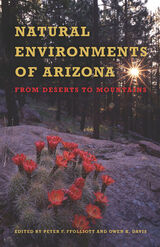 Natural Environments of Arizona: From Desert to Mountains
Edited by Peter F. Ffolliott and Owen K. Davis
University of Arizona Press, 2008 Best known for its cactus-studded deserts and the awe-inspiring Grand Canyon, Arizona boasts even more natural features that surprise visitors and continue to amaze longtime residents. Using C. H. Merriam’s turn-of-the-twentieth-century descriptions of Arizona’s life zones, Charles Lowe first defined those biotic communities in his 1964 book Arizona’s Natural Environment. Now ten experts on Arizona’s natural setting build on that classic to reflect our increased knowledge of basic physical and biological processes and the impact of both natural and man-made disturbances on these environments.
Natural Environments of Arizona bridges the gap between coffee-table volumes and scientific literature, offering a nontechnical, single-volume overview that introduces readers to a myriad of topics and provides pointers toward deeper reading. It’s all here: climate, geology, soil and water resources, an amazing variety of flora and fauna—and of course human impacts on the state’s fragile ecosystems.
These chapters show the extent to which Arizona’s natural environments have changed since Lowe first set the stage for their study. They consider changes in forests and grasslands, the effects of soil erosion, questions about water quality, and the evolving status of rivers and wildlife communities. And while the common thread of environments makes the book a complete introduction to the subject, each chapter stands alone as an authoritative synopsis of its particular topic.
Ranging widely over the impacts of drought, floods, and wildfires, this practical guide clearly shows that nature is more than picturesque landscapes, vegetation, and wildlife. For anyone with a dog-eared copy of Lowe, this book will serve as the new standard on the subject—a valuable tool for resource managers, students, and general readers alike.
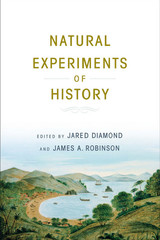 Natural Experiments of History
Jared Diamond
Harvard University Press, 2010 Some central questions in the natural and social sciences can't be answered by controlled laboratory experiments, often considered to be the hallmark of the scientific method. This impossibility holds for any science concerned with the past. In addition, many manipulative experiments, while possible, would be considered immoral or illegal. One has to devise other methods of observing, describing, and explaining the world.
In the historical disciplines, a fruitful approach has been to use natural experiments or the comparative method. This book consists of eight comparative studies drawn from history, archeology, economics, economic history, geography, and political science. The studies cover a spectrum of approaches, ranging from a non-quantitative narrative style in the early chapters to quantitative statistical analyses in the later chapters. The studies range from a simple two-way comparison of Haiti and the Dominican Republic, which share the island of Hispaniola, to comparisons of 81 Pacific islands and 233 areas of India. The societies discussed are contemporary ones, literate societies of recent centuries, and non-literate past societies. Geographically, they include the United States, Mexico, Brazil, western Europe, tropical Africa, India, Siberia, Australia, New Zealand, and other Pacific islands.
In an Afterword, the editors discuss how to cope with methodological problems common to these and other natural experiments of history.
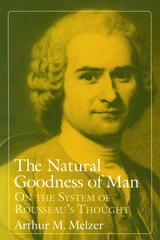 The Natural Goodness of Man: On the System of Rousseau's Thought
Arthur M. Melzer
University of Chicago Press, 1990 The true key to all the perplexities of the human condition, Rousseau boldly claims, is the “natural goodness of man.” It is also the key to his own notoriously contradictory writings, which, he insists, are actually the disassembled parts of a rigorous philosophical system rooted in that fundamental principle. What if this problematic claim—so often repeated, but as often dismissed—were resolutely followed and explored?
Arthur M. Melzer adopts this approach in The Natural Goodness of Man. The first two parts of the book restore the original, revolutionary significance of this now time-worn principle and examine the arguments Rousseau offers in proof of it. The final section unfolds and explains Rousseau’s programmatic thought, especially the Social Contract, as a precise solution to the human problem as redefined by the principle of natural goodness.
The result is a systematic reconstruction of Rousseau’s philosophy that discloses with unparalleled clarity both the complex weave of his argument and the majestic unity of his vision. Melzer persuasively resolves one after another of the famous Rousseauian paradoxes–enlarging, in the process, our understanding of modern philosophy and politics. Engagingly and lucidly written, The Natural Goodness of Man will be of interest to general as well as scholarly readers.
 Natural Hazard Mitigation: Recasting Disaster Policy And Planning
David Godschalk, Timothy Beatley, Philip Berke, David Brower, and Edward J. Kaiser
Island Press, 1999 The first half of the 1990s saw the largest and most costly floods, hurricanes, and earthquakes in the history of the United States. While natural hazards cannot be prevented, their human impacts can be greatly reduced through advance action that mitigates risks and reduces vulnerability.
Natural Hazard Mitigation describes and analyzes the way that hazard mitigation has been carried out in the U.S. under our national disaster law, the Robert T. Stafford Disaster Relief and Emergency Assistance Act. It is the first systematic study of the complete intergovernmental system for natural hazard mitigation, including its major elements and the linkages among them.
The book: - analyzes the effectiveness of the Stafford Act and investigates what is contained in state hazard mitigation plans required by the Act
- studies how federal hazard mitigation funds have been spent
- explores what goes into decision making following a major disaster
- looks at how government mitigation officials rate the effectiveness of the mitigation system
- suggests changes that could help solve the widely recognized problems with current methods of coping with disasters
Damages from natural disasters are reaching catastrophic proportions, making natural hazard mitigation an important national policy issue. The findings and recommendations presented in this volume should help to strengthen natural hazard mitigation policy and practice, thereby serving to reduce drains on the federal treasury that pay for preventable recovery and relief costs, and to spare residents in areas hit by natural disasters undue suffering and expense. It is an informative and eye-opening study for planners, policymakers, students of planning and geography, and professionals working for government agencies that deal with natural hazards.
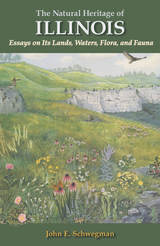 The Natural Heritage of Illinois: Essays on Its Lands, Waters, Flora, and Fauna
John E. Schwegman
Southern Illinois University Press, 2016 The Natural Heritage of Illinois is an engaging collection of ninety-three essays on the lands, waters, plants, and animals found in Illinois. Written in lively, accessible prose, the book discusses how wind, water, glaciers, earthquakes, fire, and people have shaped Illinois’ landforms, natural habitats, rivers and streams, and the ways in which native plants and animals, from individual species to entire ecosystems, have thrived, survived, or died out.
Author John E. Schwegman looks at the state’s early natural history, including its prehistoric vegetation and wildlife. He describes surviving remnants of formerly widespread species, such as biting horseflies so abundant they could kill a horse and flights of passenger pigeons dense enough to block the sun. The book addresses issues of species decline, the ways animals adapt to climate change and dwindling habitats, and the problem of invasive exotic species. Ecosystem preservation is discussed, and readers will witness prescribed burning techniques and volunteers aiding in natural land management.
Animal and plant conservation in Illinois is illustrated by essays that examine the efforts to save our dwindling Prairie Chicken population and to reintroduce river otters, the return of nesting bald eagles and cormorants to the state, the discovery of armadillos in southern Illinois, the pros and cons of feeding birds, and the biological significance of frog calls. Essays on Illinois’ native plants cover a wide range of topics, from defensive strategies to poisonous and edible species, prairie’s dependence on fire, how to recognize our wild roses, orchids, prairie grasses, and more. Full of fascinating information and expert knowledge, this book will prove invaluable to scholars, students, teachers, and casual nature lovers.
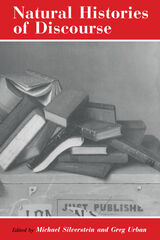 Natural Histories of Discourse
Edited by Michael Silverstein and Greg Urban
University of Chicago Press, 1996 Is culture simply a more or less set text we can learn to read? Since the early 1970s, the notion of culture-as-text has animated anthropologists and other analysts of culture. Michael Silverstein and Greg Urban present this stunning collection of cutting-edge ethnographies arguing that the divide between fleeting discursive practice and formed text is a constructed one, and that the constructional process reveals "culture" to those who can interpret it.
Eleven original essays of "natural history" range in focus from nuptial poetry of insult among Wolof griots to case-based teaching methods in first-year law-school classrooms. Stage by stage, they give an idea of the cultural processes of "entextualization" and "contextualization" of discourse that they so richly illustrate. The contributors' varied backgrounds include anthropology, psychiatry, education, literary criticism, and law, making this collection invaluable not only to anthropologists and linguists, but to all analysts of culture.
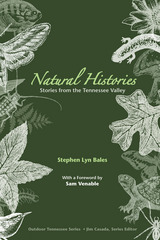 Natural Histories: Stories from the Tennessee Valley
Stephen Lyn Bales
University of Tennessee Press, 2007 In sixteen thoroughly engaging essays, naturalist Stephen Lyn Bales ventures far and wide among the richly diverse flora and fauna of his native Tennessee Valley. Whether describing the nocturnal habits of the elusive whip-poor-will, the pivotal role the hedge plant Osage orange played in a key Civil War battle, or the political firestorm that attended the discovery of a tiny fish dubbed the snail darter, Bales illuminates in surprising ways the complicated and often vexed relationships between humans and their neighbors in the natural world.
Accompanied by the author's striking line drawings, each chapter in Natural Histories showcases a particular animal or plant and each narrative begins or ends in, or passes through the Tennessee Valley. Along the way, historical episodes both familiar and obscure-the de Soto explorations, the saga of the Lost State of Franklin, the devastation of the Trail of Tears, and the planting of a “Moon Tree” at Sycamore Shoals in Elizabethton-are brought vividly to life. Bales also highlights the work of present-day environmentalists and scientists such as the dedicated staffers of the Tennessee-based American Eagle Foundation, whose efforts have helped save the endangered raptors and reintroduce them to the wild.
Arranged according to the seasonal cycles of the valley, Bales's essays reveal the balance that nature has achieved over millions of years, contrasting it with the messier business of human endeavor, especially the desire to turn nature into a commodity, something to be subdued and harvested. Filled with delightful twists and turns, Natural Histories is also a book brimming with important lessons for us all.
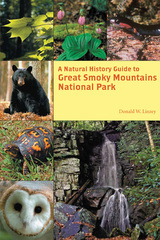 A Natural History Guide to Great Smoky Mountains National Park
Donald W. Linzey
University of Tennessee Press, 2008 The Great Smoky Mountains National Park is one of America’s most beautiful and popular national parks. Located in the southern Appalachian Mountains of Tennessee and North Carolina, it is home to more than 100,000 species of plants and animals.
The grandeur and sheer scale of the park has been captured in Donald W. Linzey’s A Natural History Guide to the Great Smoky Mountains National Park, which was already the most extensive volume available on the park’s natural history. In this second edition, Linzey updates the wildlife story of the park after the recent reintroduction of red wolves and new introduction of reptiles, amphibians, and arachnids to the bioregion, and discusses persisting habitat concerns related to aggressive, non-native species.
Written from the perspective of a naturalist who has spent over fifty years conducting research in the park, this volume not only discusses the park’s plant and animal life but also explores the impact that civilization has played in altering the area’s landscape.
Linzey draws from a deep reservoir of research, including the All Taxa Biodiversity Inventory, a concentrated effort to determine all species within a given area within a short time frame. His book provides a thorough overview of everything a visitor to the park would need to know, without complex jargon. Both casual readers and those more interested in the ecology of the Great Smoky Mountains will find this book an enlightening and educational guide.
 The Natural History of Alcoholism Revisited
George E. Vaillant
Harvard University Press, 1995 When The Natural History of Alcoholism was first published in 1983, it was acclaimed in the press as the single most important contribution to the literature on alcoholism since the first edition of Alcoholic Anonymous’s Big Book. George Vaillant took on the crucial questions of whether alcoholism is a symptom or a disease, whether it is progressive, whether alcoholics differ from others before the onset of their alcoholism, and whether alcoholics can safely drink. Based on an evaluation of more than 600 individuals followed for over forty years, Vaillant’s monumental study offered new and authoritative answers to all of these questions.
In this updated version of his classic book, Vaillant returns to the same subjects with the perspective gained from fifteen years of further follow-up. Alcoholics who had been studied to age 50 in the earlier book have now reached age 65 and beyond, and Vaillant reassesses what we know about alcoholism in light of both their experiences and the many new studies of the disease by other researchers. The result is a sharper focus on the nature and course of this devastating disorder as well as a sounder foundation for the assessment of various treatments.
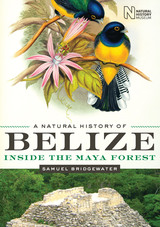 A Natural History of Belize: Inside the Maya Forest
By Samuel Bridgewater
University of Texas Press, 2012 Belize's Chiquibul Forest is one of the largest remaining expanses of tropical moist forest in Central America. It forms part of what is popularly known as the Maya Forest. Battered by hurricanes over millions of years, occupied by the Maya for thousands of years, and logged for hundreds of years, this ecosystem has demonstrated its remarkable ecological resilience through its continued existence into the twenty-first century. Despite its history of disturbance, or maybe in part because of it, the Maya Forest is ranked as an important regional biodiversity hot spot and provides some of the last regional habitats for endangered species such as the jaguar, the scarlet macaw, Baird's tapir, and Morelet's crocodile. A Natural History of Belize presents for the first time a detailed portrait of the habitats, biodiversity, and ecology of the Maya Forest, and Belize more broadly, in a format accessible to a popular audience. It is based in part on the research findings of scientists studying at Las Cuevas Research Station in the Chiquibul Forest. The book is unique in demystifying many of the big scientific debates related to rainforests. These include "Why are tropical forests so diverse?"; "How do flora and fauna evolve?"; and "How do species interact?" By focusing on the ecotourism paradise of Belize, this book illustrates how science has solved some of the riddles that once perplexed the likes of Charles Darwin, and also shows how it can assist us in managing our planet and forest resources wisely in the future.
 The Natural History of H. G. Wells
John Robert Reed
Ohio University Press, 1982 This new study offers a general reassessment of H. G. Wells as a writer and thinker. It concentrates upon the close relationship between Wells’ developing philosophy and his literary techniques. The early chapters examine Wells’ treatment of such subjects as confinement and escape, sex, the nature of human identity, the relationship of individual to race, human progress, and the importance of education. At the same time, the describe the emotional topography that Wells created as a mean of vivifying his ideas, a topography constructed from image complexes largely based upon the analogy between individual and racial evolution. The major contribution of the book comes in its later chapters, which deal with Wells’ metaphysical assumptions and his approach to his craft. His views on free will and strength of will were intimately related to his methods of literary composition. The important later chapters detail this relationship, while describing some of Wells’ characteristic literary devices, such as the intentional violations of certain novelistic conventions or the sly borrowing from and alluding to contemporary works of literature in what amounted to a covert polemic. On the whole, this study argues for a coherent and consistent, though developing, philosophy operating throughout Wells’ career and manifested in experimental literary works which, while not always successful, were consistently inventive and intelligently crafted in the service of Wells’ principle aim, the education of the human species to a command of its own destiny.
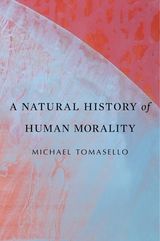 A Natural History of Human Morality
Michael Tomasello
Harvard University Press, 2016 Winner of the Eleanor Maccoby Book Award in Developmental Psychology, American Psychological Association
Winner of a PROSE Award, Association of American Publishers
Shortlist, Cognitive Development Society Book Award
A Choice Outstanding Academic Title of the Year
A Natural History of Human Morality offers the most detailed account to date of the evolution of human moral psychology. Based on extensive experimental data comparing great apes and human children, Michael Tomasello reconstructs how early humans gradually became an ultra-cooperative and, eventually, a moral species.
“Tomasello is convincing, above all, because he has run many of the relevant studies (on chimps, bonobos and children) himself. He concludes by emphasizing the powerful influence of broad cultural groups on modern humans… Tomasello also makes an endearing guide, appearing happily amazed that morality exists at all.”
—Michael Bond, New Scientist
“Most evolutionary theories picture humans as amoral ‘monads’ motivated by self-interest. Tomasello presents an innovative and well-researched, hypothesized natural history of two key evolutionary steps leading to full-blown morality.”
—S. A. Mason, Choice
 A Natural History of Human Thinking
Michael Tomasello
Harvard University Press, 2014 A Wall Street Journal Favorite Read of the Year
A Guardian Top Science Book of the Year
Tool-making or culture, language or religious belief: ever since Darwin, thinkers have struggled to identify what fundamentally differentiates human beings from other animals. In this much-anticipated book, Michael Tomasello weaves his twenty years of comparative studies of humans and great apes into a compelling argument that cooperative social interaction is the key to our cognitive uniqueness. Once our ancestors learned to put their heads together with others to pursue shared goals, humankind was on an evolutionary path all its own.
“Michael Tomasello is one of the few psychologists to have conducted intensive research on both human children and chimpanzees, and A Natural History of Human Thinking reflects not only the insights enabled by such cross-species comparisons but also the wisdom of a researcher who appreciates the need for asking questions whose answers generate biological insight. His book helps us to understand the differences, as well as the similarities, between human brains and other brains.”
—David P. Barash, Wall Street Journal
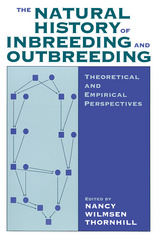 The Natural History of Inbreeding and Outbreeding: Theoretical and Empirical Perspectives
Edited by Nancy Wilmsen Thornhill
University of Chicago Press, 1993 Inbreeding, the mating of close kin, and outbreeding, the mating of distant relatives or unrelated organisms, have long been important subjects to evolutionary biologists. Inbreeding reduces genetic diversity in a population, increasing the likelihood that genetic defects will become widespread and deprive a population of the diversity it may need to cope with its environment. Most plants and animals have evolved behavioral and morphological mechanisms to avoid inbreeding. However, today many endangered species exist only in small, very isolated populations where inbreeding is unavoidable, so it has become a concern for conservationists. In this volume, twenty-six experts in evolution, behavior, and genetics examine the causes and consequences of inbreeding.
The authors ask whether inbreeding is as problematic as biologists have thought, under what ecological conditions inbreeding occurs, and whether organisms that inbreed have mechanisms to dampen the anticipated problems of reduced genetic variation. The studies, including theoretical and empirical work on wild and captive populations, demonstrate that many plants and animals inbreed to a greater extent than biologists have thought, with variable effects on individual fitness. Graduate students and researchers in evolutionary biology, animal behavior, ecology, and conservation biology will welcome this wide-ranging collection.
The Natural History of Lewis and Clark Expedition
Raymond Darwin Burroughs
Michigan State University Press, 1995 First published in 1961, The Natural History of the Lewis and Clark Expedition was the first work to discuss in detail the contributions to America's natural history made by the Corps of Discovery (1804-1806), or the Lewis and Clark Expedition, as it is popularly known. Raymond Darwin Burroughs tallied the quantity of game killed and consumed during the course of the expedition.
This paperback edition of Burroughs' work contains the entire original text, as well as a new introduction by Lewis and Clark scholar Robert Carriker. The major contribution of The Natural History of the Lewis and Clark Expedition was to organize and catalog the disparate discussions of animal and plant life that are scattered throughout the original journals by expedition members. These observations are presented in the explorers' words along with Burroughs's expert commentary.
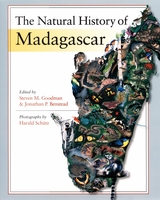 The Natural History of Madagascar
Edited by Steven M. Goodman and Jonathan P. Benstead
University of Chicago Press, 2003 Separated from the mainland of Africa for 160 million years, Madagascar has evolved an incredible wealth of biodiversity, with thousands of species that can be found nowhere else on earth. For instance, of its estimated 12,000 plant species, nearly 10,000 are unique to Madagascar. Malagasy animals are just as spectacular, from its almost forty currently recognized species of lemurs—a primate group found only here—to the numerous species of tiny dwarf chameleons. With astounding frequency scientists discover a previously unknown species in Madagascar—and at almost the same rate another natural area of habitat is degraded or destroyed, a combination that recently led conservation organizations to name Madagascar one of the most important and threatened conservation priorities on the planet.
The Natural History of Madagascar provides the most comprehensive, up-to-date synthesis available of this island nation's priceless biological treasures. Contributions by nearly three hundred world-renowned experts cover the history of scientific exploration in Madagascar, its geology and soils, climate, forest ecology, human ecology, marine and coastal ecosystems, plants, invertebrates, fishes, amphibians, reptiles, birds, and mammals. Detailed discussions of conservation efforts in Madagascar highlight several successful park reserve programs that could serve as models for other areas. Beautifully illustrated throughout, the book includes over one hundred color illustrations, with fifty color photos by nature photographer Harald Schütz, as well as more than three hundred black-and-white photographs and line drawings.
The Natural History of Madagascar will be the invaluable reference for anyone interested in the Malagasy environment, from biologists and conservationists to policymakers and ecotourists.
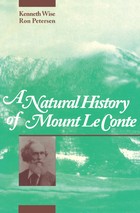 A Natural History of Mount Le Conte
Kenneth Wise
University of Tennessee Press, 1998 Widely regarded as the crown jewel of the Great Smoky Mountains, Mount Le Conte harbors the greatest concentration of notable geological features in all of the Smokies. This unique book tells the history of the mountain, offering visitors a greater appreciation of its scenic splendor.
Kenneth Wise and Ron Petersen combine their intimate knowledge of Le Conte with a wealth of scientific and historical information. Following introductory coverage of the mountain's geologic history and human exploration, they follow the six main trails up the mountain—Alum Cave, Bullhead, Rainbow Falls, Trillium Gap, Brushy Mountain, and Boulevard—and reveal each one to be not merely a path but a rich source of historical and personal testimony. A final chapter covers the distinguishing features of the summit itself.
Along each route, the authors explain how the trail was developed and provide historic background for well-known landmarks, from Inspiration Point to Huggins Hell. They offer informative descriptions of the plants and wildlife indigenous to Mount Le Conte as well as observations on the effects of environmental changes on the landscape.
The book is illustrated with dozens of photographs, many of historic interest. Also included is a fold-out vista map of ten panoramas visible along the way, indicating the notable features that can be seen from each vantage point. Whether you're viewing LeConte from the Lodge or hiking its slopes, this book will enhance your enjoyment of this crown jewel of the Smokies. A Natural History of Mount LeConte is unlike any other book available on this magnificent mountain. It shows that history and natural history are two sides of the same coin and will make visiting or hiking the peak a more rewarding experience.
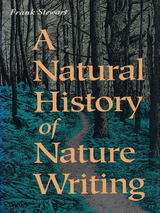 A Natural History of Nature Writing
Frank Stewart
Island Press, 1995 A Natural History of Nature Writing is a penetrating overview of the origins and development of a uniquely American literature. Essayist and poet Frank Stewart describes in rich and compelling prose the lives and works of the most prominent American nature writers of the19th and 20th centuries, including: - Henry D. Thoreau, the father of American nature writing.
- John Burroughs, a schoolteacher and failed businessman who found his calling as a writer and elevated the nature essay to a loved and respected literary form.
- John Muir, founder of Sierra Club, who celebrated the wilderness of the Far West as few before him had.
- Aldo Leopold, a Forest Service employee and scholar who extended our moral responsibility to include all animals and plants.
- Rachel Carson, a scientist who raised the consciousness of the nation by revealing the catastrophic effects of human intervention on the Earth's living systems.
- Edward Abbey, an outspoken activist who charted the boundaries of ecological responsibility and pushed these boundaries to political extremes.
Stewart highlights the controversies ignited by the powerful and eloquent prose of these and other writers with their expansive – and often strongly political – points of view. Combining a deeply-felt sense of wonder at the beauty surrounding us with a rare ability to capture and explain the meaning of that beauty, nature writers have had a profound effect on American culture and politics. A Natural History of Nature Writing is an insightful examination of an important body of American literature.
A Natural History of Negation
Laurence R. Horn
CSLI, 1989 This book offers a unique synthesis of past and current work on the structure, meaning, and use of negation and negative expressions, a topic that has engaged thinkers from Aristotle and the Buddha to Freud and Chomsky. Horn's masterful study melds a review of scholarship in philosophy, psychology, and linguistics with original research, providing a full picture of negation in natural language and thought; this new edition adds a comprehensive preface and bibliography, surveying research since the book's original publication.
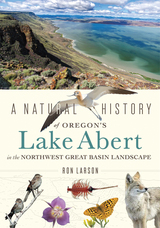 A Natural History of Oregon's Lake Abert in the Northwest Great Basin Landscape
Ron Larson
University of Nevada Press, 2023 A beautifully detailed exploration of flora and fauna.
Author Ron Larson offers a natural history of a Great Basin landscape that focuses on the northern region including Lake Abert and Abert Rim, and the adjacent area in southcentral Oregon. Although the jewel of this landscape is a lake, the real story is the many plants and animals—from the very primitive, reddish, bacteria-like archaea that thrive only in its high-salinity waters to the Golden Eagles and ravens that soar above the desert. The untold species in and around the lake are part of an ecosystem shaped by ageless processes from massive lava flows, repeated drought, and blinding snowstorms. It is an environment rich with biotic and physical interconnections going back millions of years. The Great Basin, and in particular the Lake Abert region, is special and needs our attention to ensure it remains that way. We must recognize the importance of water for Great Basin ecosystems and the need to manage it better, and we must acknowledge how rich the Great Basin is in natural history. Salt lakes, wherever they occur, are valuable and provide critically important habitat for migratory water birds, which are unfortunately under threat from upstream water diversions and climate change. Larson’s book will help people understand that the Great Basin is unique and that wise stewardship is necessary to keep it unspoiled. The book is an essential reference source, drawing together a wide range of materials that will appeal to general readers and researchers alike.
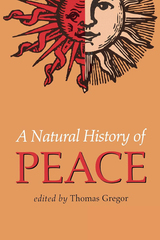 A Natural History of Peace
Thomas A. Gregor
Vanderbilt University Press, 1996 A stimulating and innovative consideration of the concept, causes, and practice of peace in societies both ancient and modern, human and primate.<.) We know a great deal about aggression, conflict, and war, but relatively little about peace, partially because it has been such a scarce phenomenon throughout history and in our own times. Peace is more than the absence of war. Peace requires special relationships, structures, and attitudes to promote and protect it.
A Natural History of Peace provides the first broadly interdisciplinary examination of peace as viewed from the perspectives of social anthropology, primatology, archeology, psychology, political science, and economics. Among other notable features, this volume offers:
a major theory concerning the evolution of peace and violence through human history;
an in-depth comparative study of peaceful cultures with the goal of discovering what it is that makes them peaceful;
one of the earliest reports of a new theory of the organization and collapse of ancient Maya civilization;
a comparative examination of peace from the perspective of change, including the transition of one of the world's most violent societies to a relatively peaceful culture, and the decision-making process of terrorists who abandon violence;
and a theory of political change that sees the conclusion of wars as uniquely creative periods in the evolution of peace among modern nations.
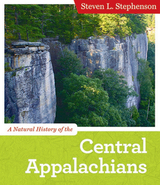 A Natural History of the Central Appalachians
Steven L. Stephenson
West Virginia University Press, 2013 Central Appalachia is the system of linear ridges, intervening valleys, and deeply dissected plateaus that make up the rugged terrain found in western and southwestern Virginia, eastern and central West Virginia, western Maryland, and a portion of south central and southwestern Pennsylvania. Through its concise and accessible approach, A Natural History of the Central Appalachians thoroughly examines the biology and ecology of the plants, animals, and other organisms of this region of eastern North America. With over 120 images, this text provides an overview of the landscape of this region, including the major changes that have taken place over the past 300 million years; describes the different types of forests and other plant communities currently present in Central Appalachia; and examines living systems ranging from microorganisms and fungi to birds and mammals. Through a consideration of the history of humans in the region, beginning with the arrival of the first Native Americans, A Natural History of the Central Appalachians also discusses the past, present, and future influences of human activity upon this geographic area.
A Natural History of the Chicago Region
Joel Greenberg
University of Chicago Press, 2002 In A Natural History of the Chicago Region, Joel Greenberg takes readers on a journey that begins in 1673 with Father Jacques Marquette and Louis Joliet—the first Europeans known to have visited the Chicago region—and that we're still on today. This is a fascinating story, told with humor and passion, of forests battling prairies for dominance; of grasslands plowed, wetlands drained, and species driven to extinction in the settlement of the Midwest; and of caring conservationists fighting to preserve and restore the native plants and animals. Intermingling historical anecdotes and episodes straight from the words of early settlers and naturalists with current scientific information, Greenberg places the natural history of the region in a human context, showing how it affects our everyday existence in even the most urbanized landscape of Chicago.
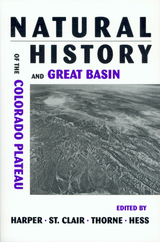 A Natural History of the Colorado Plateau
Kimball T. Harper
University Press of Colorado, 1998 The remote Colorado Plateau and Great Basin portions of the Intermountain West are areas of spectacular natural beauty and diversity. Due to inaccessibility, however, scientific study of many aspects of the region's natural history has lagged. Natural History of the Colorado Plateau and Great Basin provides an up-to-date summary of the region's geology, climates, and biology, including thorough treatments of the area's insects, fish, and reptiles. Also discussed are the ecology and distribution of prehistoric human cultures in the region; how modern humans have used (and abused) resources in the Intermountain West; and the impact of post-Pleistocene environmental changes on genetics of disjunct populations of conifer trees. Written by a diverse group of acknowledged experts, Natural History of the Colorado Plateau and Great Basin offers invaluable background information for all students and resource managers who want to work in or visit the Intermountain West.
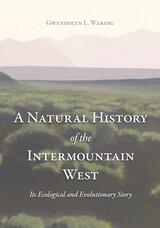 A Natural History of the Intermountain West: Its Ecological and Evolutionary Story
Gwendolyn L Waring
University of Utah Press, 2010 A Natural History of the Intermountain West was written to inform people about the wild world around us, with the idea that we all crave a connection to the natural world to ground us and give us a sense of place. It is also a book about change. While species are described throughout the chapters, the text is focused more on the profound processes that have shaped western ecosystems, based on a belief that understanding those processes is more meaningful than a list of names. The ways and the rapidity with which enormous ecosystems replace one another and sometimes even return as climates change are a magnificent testament to the tenacity of life.
The first book of its kind for this region, A Natural History of the Intermountain West takes a fresh look at the natural history of the southern Rockies and the Intermountain Region based on cutting-edge research, interviews with numerous scientists, and the author’s personal experience. Drawing together many disparate fields, the book integrates the evolution of western ecosystems with the geological and climatic history of the region. It is a passionate, humanistic, and scientific treatment of this area’s ecosystems, how they function, and how they came to be through time; it is a wonderful guide for the general public and scientists alike.
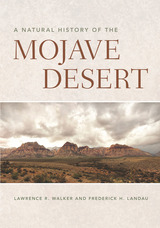 A Natural History of the Mojave Desert
Lawrence R. Walker and Frederick H. Landau
University of Arizona Press, 2018 The Mojave Desert has a rich natural history. Despite being sandwiched between the larger Great Basin and Sonoran Deserts, it has enough mountains, valleys, canyons, and playas for any eager explorer. Ancient and current waterways carve the bajadas and valley bottoms. This diverse topography gives rise to a multitude of habitats for plants and animals, many of which are found nowhere else in the world.
A Natural History of the Mojave Desert explores how a combination of complex geology, varied geography, and changing climate has given rise to intriguing flora and fauna—including almost 3,000 plant species and about 380 terrestrial vertebrate animal species. Of these, one quarter of the plants and one sixth of the animals are endemic.
The authors, who, combined, have spent more than six decades living in and observing the Mojave Desert, offer a scientifically insightful and personally observed understanding of the desert. They invite readers to understand how the Mojave Desert looks, sounds, feels, tastes, and smells. They prompt us to understand how humans have lived in this desert where scant vegetation and water have challenged humans, past and present.
A Natural History of the Mojave Desert provides a lively and informed guide to understanding how life has adapted to the hidden riverbeds, huge salt flats, tiny wetlands, and windswept hills that characterize this iconic desert.
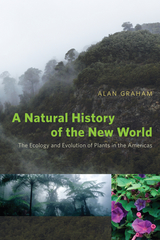 A Natural History of the New World: The Ecology and Evolution of Plants in the Americas
Alan Graham
University of Chicago Press, 2010 The paleoecological history of the Americas is as complex as the region is broad: stretching from the Arctic Circle to Tierra del Fuego, the New World features some of the most extraordinary vegetation on the planet. But until now it has lacked a complete natural history. Alan Graham remedies that with A Natural History of the New World. With plants as his scientific muse, Graham traces the evolution of ecosystems, beginning in the Late Cretaceous period (about 100 million years ago) and ending in the present, charting their responses to changes in geology and climate. By highlighting plant communities’ roles in the environmental history of the Americas, Graham offers an overdue balance to natural histories that focus exclusively on animals. Plants are important in evolution’s splendid drama. Not only are they conspicuous and conveniently stationary components of the Earth’s ecosystems, but their extensive fossil record allows for a thorough reconstruction of the planet’s paleoenvironments. What’s more, plants provide oxygen, function as food and fuel, and provide habitat and shelter; in short, theirs is a history that can speak to many other areas of evolution. A Natural History of the New World is an ambitious and unprecedented synthesis written by one of the world’s leading scholars of botany and geology.
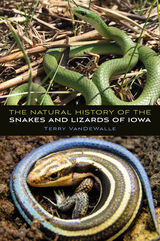 The Natural History of the Snakes and Lizards of Iowa
Terry VanDeWalle
University of Iowa Press, 2022 This book is an in-depth look at the natural history of each snake and lizard species/subspecies found in Iowa. Each of the thirty-three species accounts includes a sampling of the common names the species has been known by in the past, the first specimens collected in the state, and a brief history of the early Iowa literature related to the species, along with a complete description and a discussion of similar species, distribution in the state, habitat, behavior, threats, foods and feeding, and reproduction.
While readers will be able to identify Iowa’s snakes and lizards through its species accounts, identification keys, and beautiful photographs and illustrations, this book is intended to be more than a field guide. What makes it truly unique is the comparison of historic data collected by Iowa herpetologists in the 1930s and 1940s with data collected by the author, along with James L. Christiansen and others, since 1960. Custom maps show the reader how species’ distributions have changed over time.
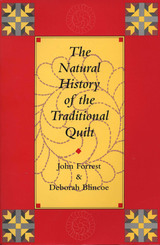 The Natural History of the Traditional Quilt
By John Forrest and Deborah Blincoe
University of Texas Press, 1995 Traditional quilts serve many purposes over the course of a useful life. Beginning as a beautiful bed covering, a quilt may later function as a ground cover at picnics until years of wear relegate it to someone's ragbag for scrap uses. Observing this life cycle led authors John Forrest and Deborah Blincoe to the idea that quilts, like living things, have a natural history that can be studied scientifically. They explore that natural history through an examination of the taxonomy, morphology, behavior, and ecology of quilts in their native environment—the homes of humans who make, use, keep, and bestow them. The taxonomy proposed by Forrest and Blincoe is rooted in the mechanics of replicating quilts so that it can be used to understand evolutionary and genetic relationships between quilt types. The morphology section anatomizes normal and abnormal physical features of quilts, while the section on conception and birth in the life cycle discusses how the underlying processes of replication intersect with environmental factors to produce tangible objects. This methodology is applicable to many kinds of crafts and will be of wide interest to students of folklore, anthropology, and art history. Case studies of traditional quilts and their makers in the Catskills and Appalachia add a warm, human dimension to the book.
 The Natural History of the Turtles of Iowa
Terry VanDeWalle
University of Iowa Press, 2024 This book is an in-depth look at the natural history of every turtle species found in Iowa. Each of the thirteen species accounts include a sampling of the common names the species has been known by in the past, the first specimens collected in the state, and a brief history of the early Iowa literature related to the species, along with a complete description and a discussion of similar species, distribution in the state, habitat, behavior, threats, foods and feeding, and reproduction.
While readers will be able to identify Iowa’s turtles through its species accounts, identification keys, and beautiful photographs and illustrations, this book is intended to be more than a field guide. What makes it truly unique is the comparison of historic data collected by Iowa herpetologists in the 1930s and 1940s with data collected by the authors, along with James L. Christiansen and others, since 1960. Custom maps show the reader how species’ distributions have changed over time. This book contains Iowa-specific data found nowhere else and is essential to all who study turtles in the Midwest.
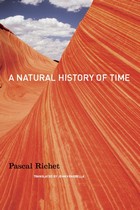 A Natural History of Time
Pascal Richet
University of Chicago Press, 2007 The quest to pinpoint the age of the Earth is nearly as old as humanity itself. For most of history, people trusted mythology or religion to provide the answer, even though nature abounds with clues to the past of the Earth and the stars. In A Natural History of Time, geophysicist Pascal Richet tells the fascinating story of how scientists and philosophers examined those clues and from them built a chronological scale that has made it possible to reconstruct the history of nature itself.
Richet begins his story with mythological traditions, which were heavily influenced by the seasons and almost uniformly viewed time cyclically. The linear history promulgated by Judaism, with its story of creation, was an exception, and it was that tradition that drove early Christian attempts to date the Earth. For instance, in 169 CE, the bishop of Antioch, for instance declared that the world had been in existence for “5,698 years and the odd months and days.”
Until the mid-eighteenth century, such natural timescales derived from biblical chronologies prevailed, but, Richet demonstrates, with the Scientific Revolution geological and astronomical evidence for much longer timescales began to accumulate. Fossils and the developing science of geology provided compelling evidence for periods of millions and millions of years—a scale that even scientists had difficulty grasping. By the end of the twentieth century, new tools such as radiometric dating had demonstrated that the solar system is four and a half billion years old, and the universe itself about twice that, though controversial questions remain.
The quest for time is a story of ingenuity and determination, and like a geologist, Pascal Richet carefully peels back the strata of that history, giving us a chance to marvel at each layer and truly appreciate how far our knowledge—and our planet—have come.
Natural History Societies and Civic Culture in Victorian Scotland
Diarmid Finnegan
University of Pittsburgh Press, 2009 Winner of the Frank Watson Prize in Scottish History, 2011
The relationship between science and civil society is essential to our understanding of cultural change during the Victorian era. Science was frequently packaged as an appropriate form of civic culture, inculcating virtues necessary for civic progress. In turn, civic culture was presented as an appropriate context for enabling and supporting scientific progress. Finnegan's study looks at the shifting nature of this process during the nineteenth century, using Scotland as the focus for his argument. Considerations of class, religion and gender are explored, illuminating changing social identities as public interest in science was allowed—even encouraged—beyond the environs of universities and elite metropolitan societies.
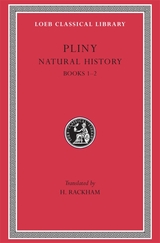 Natural History, Volume I: Books 1–2
Pliny
Harvard University Press An unrivaled compendium of ancient Roman knowledge.
Pliny the Elder, Gaius Plinius Secundus (AD 23–79), a Roman of equestrian rank of Transpadane Gaul (N. Italy), was uncle of Pliny the letter writer. He pursued a career partly military in Germany, partly administrative in Gaul and Spain under the emperor Vespasian, and became prefect of the fleet at Misenum. He died in the eruption of Vesuvius when he went to get a closer view and to rescue friends. Tireless worker, reader, and writer, he was author of works now lost; but his great Natural History in thirty-seven books with its vast collection of facts (and alleged facts) survives—a mine of information despite its uncritical character.
The contents of the books are as follows. Book 1: table of contents of the others and of authorities; 2: mathematical and metrological survey of the universe; 3–6: geography and ethnography of the known world; 7: anthropology and the physiology of man; 8–11: zoology; 12–19: botany, agriculture, and horticulture; 20–27: plant products as used in medicine; 28–32: medical zoology; 33–37: minerals (and medicine), the fine arts, and gemstones.
The Loeb Classical Library edition of Natural History is in ten volumes.
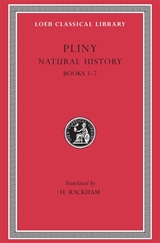 Natural History, Volume II: Books 3–7
Pliny
Harvard University Press An unrivaled compendium of ancient Roman knowledge.
Pliny the Elder, Gaius Plinius Secundus (AD 23–79), a Roman of equestrian rank of Transpadane Gaul (N. Italy), was uncle of Pliny the letter writer. He pursued a career partly military in Germany, partly administrative in Gaul and Spain under the emperor Vespasian, and became prefect of the fleet at Misenum. He died in the eruption of Vesuvius when he went to get a closer view and to rescue friends. Tireless worker, reader, and writer, he was author of works now lost; but his great Natural History in thirty-seven books with its vast collection of facts (and alleged facts) survives—a mine of information despite its uncritical character.
The contents of the books are as follows. Book 1: table of contents of the others and of authorities; 2: mathematical and metrological survey of the universe; 3–6: geography and ethnography of the known world; 7: anthropology and the physiology of man; 8–11: zoology; 12–19: botany, agriculture, and horticulture; 20–27: plant products as used in medicine; 28–32: medical zoology; 33–37: minerals (and medicine), the fine arts, and gemstones.
The Loeb Classical Library edition of Natural History is in ten volumes.
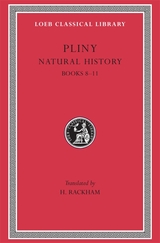 Natural History, Volume III: Books 8–11
Pliny
Harvard University Press An unrivaled compendium of ancient Roman knowledge.
Pliny the Elder, Gaius Plinius Secundus (AD 23–79), a Roman of equestrian rank of Transpadane Gaul (N. Italy), was uncle of Pliny the letter writer. He pursued a career partly military in Germany, partly administrative in Gaul and Spain under the emperor Vespasian, and became prefect of the fleet at Misenum. He died in the eruption of Vesuvius when he went to get a closer view and to rescue friends. Tireless worker, reader, and writer, he was author of works now lost; but his great Natural History in thirty-seven books with its vast collection of facts (and alleged facts) survives—a mine of information despite its uncritical character.
The contents of the books are as follows. Book 1: table of contents of the others and of authorities; 2: mathematical and metrological survey of the universe; 3–6: geography and ethnography of the known world; 7: anthropology and the physiology of man; 8–11: zoology; 12–19: botany, agriculture, and horticulture; 20–27: plant products as used in medicine; 28–32: medical zoology; 33–37: minerals (and medicine), the fine arts, and gemstones.
The Loeb Classical Library edition of Natural History is in ten volumes.
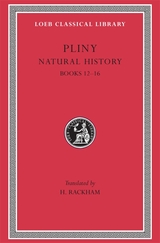 Natural History, Volume IV: Books 12–16
Pliny
Harvard University Press An unrivaled compendium of ancient Roman knowledge.
Pliny the Elder, Gaius Plinius Secundus (AD 23–79), a Roman of equestrian rank of Transpadane Gaul (N. Italy), was uncle of Pliny the letter writer. He pursued a career partly military in Germany, partly administrative in Gaul and Spain under the emperor Vespasian, and became prefect of the fleet at Misenum. He died in the eruption of Vesuvius when he went to get a closer view and to rescue friends. Tireless worker, reader, and writer, he was author of works now lost; but his great Natural History in thirty-seven books with its vast collection of facts (and alleged facts) survives—a mine of information despite its uncritical character.
The contents of the books are as follows. Book 1: table of contents of the others and of authorities; 2: mathematical and metrological survey of the universe; 3–6: geography and ethnography of the known world; 7: anthropology and the physiology of man; 8–11: zoology; 12–19: botany, agriculture, and horticulture; 20–27: plant products as used in medicine; 28–32: medical zoology; 33–37: minerals (and medicine), the fine arts, and gemstones.
The Loeb Classical Library edition of Natural History is in ten volumes.
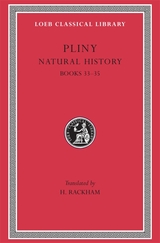 Natural History, Volume IX: Books 33–35
Pliny
Harvard University Press An unrivaled compendium of ancient Roman knowledge.
Pliny the Elder, Gaius Plinius Secundus (AD 23–79), a Roman of equestrian rank of Transpadane Gaul (N. Italy), was uncle of Pliny the letter writer. He pursued a career partly military in Germany, partly administrative in Gaul and Spain under the emperor Vespasian, and became prefect of the fleet at Misenum. He died in the eruption of Vesuvius when he went to get a closer view and to rescue friends. Tireless worker, reader, and writer, he was author of works now lost; but his great Natural History in thirty-seven books with its vast collection of facts (and alleged facts) survives—a mine of information despite its uncritical character.
The contents of the books are as follows. Book 1: table of contents of the others and of authorities; 2: mathematical and metrological survey of the universe; 3–6: geography and ethnography of the known world; 7: anthropology and the physiology of man; 8–11: zoology; 12–19: botany, agriculture, and horticulture; 20–27: plant products as used in medicine; 28–32: medical zoology; 33–37: minerals (and medicine), the fine arts, and gemstones.
The Loeb Classical Library edition of Natural History is in ten volumes.
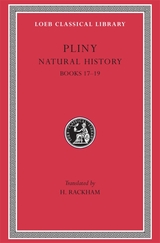 Natural History, Volume V: Books 17–19
Pliny
Harvard University Press An unrivaled compendium of ancient Roman knowledge.
Pliny the Elder, Gaius Plinius Secundus (AD 23–79), a Roman of equestrian rank of Transpadane Gaul (N. Italy), was uncle of Pliny the letter writer. He pursued a career partly military in Germany, partly administrative in Gaul and Spain under the emperor Vespasian, and became prefect of the fleet at Misenum. He died in the eruption of Vesuvius when he went to get a closer view and to rescue friends. Tireless worker, reader, and writer, he was author of works now lost; but his great Natural History in thirty-seven books with its vast collection of facts (and alleged facts) survives—a mine of information despite its uncritical character.
The contents of the books are as follows. Book 1: table of contents of the others and of authorities; 2: mathematical and metrological survey of the universe; 3–6: geography and ethnography of the known world; 7: anthropology and the physiology of man; 8–11: zoology; 12–19: botany, agriculture, and horticulture; 20–27: plant products as used in medicine; 28–32: medical zoology; 33–37: minerals (and medicine), the fine arts, and gemstones.
The Loeb Classical Library edition of Natural History is in ten volumes.
 Natural History, Volume VI: Books 20–23
Pliny
Harvard University Press An unrivaled compendium of ancient Roman knowledge.
Pliny the Elder, Gaius Plinius Secundus (AD 23–79), a Roman of equestrian rank of Transpadane Gaul (N. Italy), was uncle of Pliny the letter writer. He pursued a career partly military in Germany, partly administrative in Gaul and Spain under the emperor Vespasian, and became prefect of the fleet at Misenum. He died in the eruption of Vesuvius when he went to get a closer view and to rescue friends. Tireless worker, reader, and writer, he was author of works now lost; but his great Natural History in thirty-seven books with its vast collection of facts (and alleged facts) survives—a mine of information despite its uncritical character.
The contents of the books are as follows. Book 1: table of contents of the others and of authorities; 2: mathematical and metrological survey of the universe; 3–6: geography and ethnography of the known world; 7: anthropology and the physiology of man; 8–11: zoology; 12–19: botany, agriculture, and horticulture; 20–27: plant products as used in medicine; 28–32: medical zoology; 33–37: minerals (and medicine), the fine arts, and gemstones.
The Loeb Classical Library edition of Natural History is in ten volumes.
 Natural History, Volume VII: Books 24–27
Pliny
Harvard University Press An unrivaled compendium of ancient Roman knowledge.
Pliny the Elder, Gaius Plinius Secundus (AD 23–79), a Roman of equestrian rank of Transpadane Gaul (N. Italy), was uncle of Pliny the letter writer. He pursued a career partly military in Germany, partly administrative in Gaul and Spain under the emperor Vespasian, and became prefect of the fleet at Misenum. He died in the eruption of Vesuvius when he went to get a closer view and to rescue friends. Tireless worker, reader, and writer, he was author of works now lost; but his great Natural History in thirty-seven books with its vast collection of facts (and alleged facts) survives—a mine of information despite its uncritical character.
The contents of the books are as follows. Book 1: table of contents of the others and of authorities; 2: mathematical and metrological survey of the universe; 3–6: geography and ethnography of the known world; 7: anthropology and the physiology of man; 8–11: zoology; 12–19: botany, agriculture, and horticulture; 20–27: plant products as used in medicine; 28–32: medical zoology; 33–37: minerals (and medicine), the fine arts, and gemstones.
The Loeb Classical Library edition of Natural History is in ten volumes.
 Natural History, Volume VIII: Books 28–32
Pliny
Harvard University Press An unrivaled compendium of ancient Roman knowledge.
Pliny the Elder, Gaius Plinius Secundus (AD 23–79), a Roman of equestrian rank of Transpadane Gaul (N. Italy), was uncle of Pliny the letter writer. He pursued a career partly military in Germany, partly administrative in Gaul and Spain under the emperor Vespasian, and became prefect of the fleet at Misenum. He died in the eruption of Vesuvius when he went to get a closer view and to rescue friends. Tireless worker, reader, and writer, he was author of works now lost; but his great Natural History in thirty-seven books with its vast collection of facts (and alleged facts) survives—a mine of information despite its uncritical character.
The contents of the books are as follows. Book 1: table of contents of the others and of authorities; 2: mathematical and metrological survey of the universe; 3–6: geography and ethnography of the known world; 7: anthropology and the physiology of man; 8–11: zoology; 12–19: botany, agriculture, and horticulture; 20–27: plant products as used in medicine; 28–32: medical zoology; 33–37: minerals (and medicine), the fine arts, and gemstones.
The Loeb Classical Library edition of Natural History is in ten volumes.
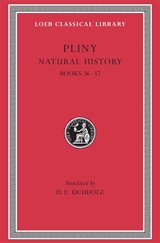 Natural History, Volume X: Books 36–37
Pliny
Harvard University Press An unrivaled compendium of ancient Roman knowledge.
Pliny the Elder, Gaius Plinius Secundus (AD 23–79), a Roman of equestrian rank of Transpadane Gaul (N. Italy), was uncle of Pliny the letter writer. He pursued a career partly military in Germany, partly administrative in Gaul and Spain under the emperor Vespasian, and became prefect of the fleet at Misenum. He died in the eruption of Vesuvius when he went to get a closer view and to rescue friends. Tireless worker, reader, and writer, he was author of works now lost; but his great Natural History in thirty-seven books with its vast collection of facts (and alleged facts) survives—a mine of information despite its uncritical character.
The contents of the books are as follows. Book 1: table of contents of the others and of authorities; 2: mathematical and metrological survey of the universe; 3–6: geography and ethnography of the known world; 7: anthropology and the physiology of man; 8–11: zoology; 12–19: botany, agriculture, and horticulture; 20–27: plant products as used in medicine; 28–32: medical zoology; 33–37: minerals (and medicine), the fine arts, and gemstones.
The Loeb Classical Library edition of Natural History is in ten volumes.
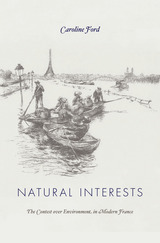 Natural Interests: The Contest over Environment in Modern France
Caroline Ford
Harvard University Press, 2016 Challenging the conventional wisdom that French environmentalism can be dated only to the post-1945 period, Caroline Ford argues that a broadly shared environmental consciousness emerged in France much earlier. Natural Interests unearths the distinctive features of French environmentalism, in which a large and varied cast of social actors played a role. Besides scientific advances and colonial expansion, nostalgia for a vanishing pastoral countryside and anxiety over the pressing dangers of environmental degradation were important factors in the success of this movement.
Over the nineteenth and twentieth centuries, war, political upheaval, and natural disasters—especially the devastating floods of 1856 and 1910 in Paris—caused growing worry over the damage wrought by deforestation, urbanization, and industrialization. The natural world took on new value for France’s urban bourgeoisie, as both a site of aesthetic longing and a destination for tourism. Not only naturalists and scientists but politicians, engineers, writers, and painters took up environmental causes.
Imperialism and international dialogue were also instrumental in shaping environmental consciousness, as the unfamiliar climates of France’s overseas possessions changed perceptions of the natural world and influenced conservationist policies. By the early twentieth century, France had adopted innovative environmental legislation, created national and urban parks and nature reserves, and called for international cooperation on environmental questions.
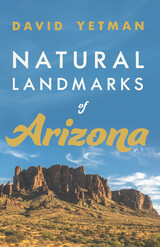 Natural Landmarks of Arizona
David Yetman
University of Arizona Press, 2021 Natural Landmarks of Arizona celebrates the vast geological past of Arizona’s natural monuments through the eyes of a celebrated storyteller who has called Arizona home for most of his life. David Yetman shows us how Arizona’s most iconic landmarks were formed millions of years ago and sheds light on the more recent histories of these landmarks as well. These peaks and ranges offer striking intrusions into the Arizona horizon, giving our southwestern state some of the most memorable views, hikes, climbs, and bike rides anywhere in the world. They orient us, they locate us, and they are steadfast through generations.
Whether you have climbed these peaks many times, enjoy seeing them from your car window, or simply want to learn more about southwestern geology and history, reading Natural Landmarks of Arizona is a fascinating way to learn about the ancient and recent history of beloved places such as Cathedral Rock, Granite Dells, Kitt Peak, and many others. With Yetman as your guide, you can tuck this book into your glove box and hit the road with profound new knowledge about the towering natural monuments that define our beautiful Arizona landscapes.
 The Natural Law: A Beginner's Thomistic Guide
Steven J. Jensen
Catholic University of America Press, 2025 Drawing upon the timeless wisdom of Thomas Aquinas, The Natural Law offers clear insights into perplexing ethical dilemmas. The compelling conclusions of Aquinas emerge through a critical examination of contemporary ethical frameworks including moral relativism, utilitarianism, and Machiavellian politics. In part one, which elucidates the core principles of natural law ethics, the reader will discover fundamental truths underpinning the concepts of right and wrong, which are rooted in the very fabric of our humanity. Part two navigates the ethics of harm, grappling with contentious issues such as capital punishment, just war, and self-defense, while at the same time addressing moral quandaries like sacrificing one life in order to save another. This section also resolves thorny practical questions surrounding human actions. How can we tell the difference between an action and its consequences? How do we determine exactly what it means to kill another person? Part three ventures into the intricacies of human societies. The reader will explore the importance of authority and rules in guiding social interactions, from the nurturing bonds of the family to the shifting complexities of political society. The principles examined will shed light upon controversial topics within sexual ethics, such as transgenderism, faithful spousal intimacy, and cloning. The Natural Law invites readers on an engaging journey of critical inquiry. By challenging prevailing assumptions and provoking self-reflection, it will reshape your understanding of ethics and human nature, ultimately revealing your role and purpose within the universe.
Natural Law and Contemporary Public Policy
David Forte, Editor
Georgetown University Press, 1998 Rooted in Western classical and medieval philosophies, the natural law movement of the last few decades seeks to rediscover fundamental moral truths. In this book, prominent thinkers demonstrate how natural law can be used to resolve a wide range of complex social, political, and constitutional issues by addressing controversial subjects that include the family, taxation, war, racial discrimination, medical technology, and sexuality. This volume will be of value to those working in philosophy, political science, and legal theory, as well as to policy analysts, legislators, and judges.
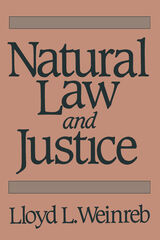 Natural Law and Justice
Lloyd Weinreb
Harvard University Press, 1987 “Human beings are a part of nature and apart from it.” The argument of Natural Law and Justice is that the philosophy of natural law and contemporary theories about the nature of justice are both efforts to make sense of the fundamental paradox of human experience: individual freedom and responsibility in a causally determined universe.
Lloyd Weinreb restores the original understanding of natural law as a philosophy about the place of humankind in nature. He traces the natural law tradition from its origins in Greek speculation through its classic Christian statement by Thomas Aquinas. He goes on to show how the social contract theorists adapted the idea of natural law to provide for political obligation in civil society and how the idea was transformed in Kant’s account of human freedom. He brings the historical narrative down to the present with a discussion of the contemporary debate between natural law and legal positivism, including particularly the natural law theories of Finnis, Richards, and Dworkin.
Weinreb then adopts the approach of modern political philosophy to develop the idea of justice as a union of the distinct ideas of desert and entitlement. He shows liberty and equality to be the political analogues of desert and entitlement and both pairs to be the normative equivalents of freedom and cause. In this part of the book, Weinreb considers the theories of justice of Rawls and Nozick as well as the communitarian theory of Maclntyre and Sandel.
The conclusion brings the debates about natural law and justice together, as parallel efforts to understand the human condition. This original contribution to legal philosophy will be especially appreciated by scholars, teachers, and students in the fields of political philosophy, legal philosophy, and the law generally.
 Natural Law and Moral Inquiry: Ethics, Metaphysics, and Politics in the Thought of Germain Grisez
Robert P. George
Georgetown University Press, 1998 Germain Grisez has been a leading voice in moral philosophy and theology since the Second Vatican Council. In this book, such major thinkers as John Finnis, Ralph McInerny, and William E. May consider issues in ethics, metaphysics, and politics that have been central to Grisez's work. Grisez's reconsideration of the philosophical foundations of Christian moral teaching, seeking to eliminate both legalistic interpretation and theological dissent, has won the support of a number of leading Catholic moralists. In the past decade, moreover, many philosophers outside of Catholicism have weighed carefully Grisez's alternatives to theories that have long dominated secular moral philosophy. This book presents a broad spectrum of viewpoints on subjects ranging from contraception to capital punishment and considers such controversies as the scriptural basis of Grisez's work his interpretations of Aquinas, and his new natural law theory. The collection includes not only contributions from Grisez's supporters but also from critics of his thought, from proportionalist Edward Collins Vacek, SJ, to the neo-Thomist Ralph McInerny. A reply by Grisez, written with Joseph M. Boyle Jr., addresses the issues and viewpoints expressed, while an afterword by Russell Shaw reviews Grisez's pioneering work and conveys a vivid sense of the philosopher's personality. As Grisez's influence grows, this volume will serve as an important touchstone on his contributions to moral and political philosophy and theology.
 Natural Law and Public Reason
Robert P. George and Christopher Wolfe, Editors
Georgetown University Press, 2000 "Public reason" is one of the central concepts in modern liberal political theory. As articulated by John Rawls, it presents a way to overcome the difficulties created by intractable differences among citizens' religious and moral beliefs by strictly confining the place of such convictions in the public sphere. Identifying this conception as a key point of conflict, this book presents a debate among contemporary natural law and liberal political theorists on the definition and validity of the idea of public reason. Its distinguished contributors examine the consequences of interpreting public reason more broadly as "right reason," according to natural law theory, versus understanding it in the narrower sense in which Rawls intended. They test public reason by examining its implications for current issues, confronting the questions of abortion and slavery and matters relating to citizenship. This energetic exchange advances our understanding of both Rawls's contribution to political philosophy and the lasting relevance of natural law. It provides new insights into crucial issues facing society today as it points to new ways of thinking about political theory and practice.
 Natural Law and Thomistic Juridical Realism: Prospects for a Dialogue with Contemporary Legal Theory
Petar Popovic
Catholic University of America Press, 2022 This book proposes a rather novel legal-philosophical approach to understanding the intersection between law and morality. It does so by analyzing the conditions for the existence of a juridical domain of natural law from the perspective of the tradition of Thomistic juridical realism. In order to highlight the need to reconnect with this tradition in the context of contemporary legal philosophy, the book presents various other recent jurisprudential positions regarding the overlap between law and morality. While most authors either exclude a conceptual necessity for the inclusion of moral principles in the nature of law or refer to the purely moral status of natural law at the foundations of the legal phenomenon, the book seeks to elucidate the essential properties of the juridical status of natural law. In order to establish the juridicity of natural law, the book explores the relevant arguments of Thomas Aquinas and some of his main commentators on this issue, above all Michel Villey and Javier Hervada. It establishes that Thomistic juridical realism observes the juridical phenomenon not only from the perspective of legal norms or subjective individual rights, but also from the perspective of the primary meaning of the concept of right (ius), namely, the just thing itself as the object of justice. In this perspective, natural rights already possess a fully juridical status and can be described as natural juridical goods. In addition, from the viewpoint of Thomistic juridical realism, we can identify certain natural norms or principles of justice as the juridical title of these rights or goods. The book includes an assessment of the prospective points of dialogue with the other trends in Thomistic legal philosophy as well as with various accounts of the nature of law in contemporary legal theory.
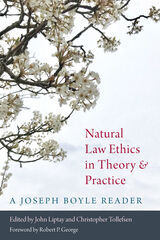 Natural Law Ethics in Theory and Practic: A Joseph Boyle Reader
Joseph Boyle
Catholic University of America Press, 2020 Natural Law Ethics in Theory and Practice brings together a selection of essays of the late Joseph Boyle. Boyle was, with Germain Grisez and John Finnis, a founder and developer of the New Classical Natural Law Theory, arguably the most important development in Catholic moral philosophy of the twentieth century. While this theory is indebted to the work of St. Thomas Aquinas, it incorporates an understanding and assessment of that work that is different from that found in other statements of natural law. Boyle made crucial contributions to a wide variety of aspects of this theory, and the volume is divided into two parts.
Part One: Articulating a Theory of Natural Law contains three sections in which Boyle defends the reality of free choice and the view that the basic reasons for action, or first principles of natural law, are incommensurable in goodness. Boyle identifies the basic moral standard for choice and action, and develops an account of human action that elucidates the important role played by intention and double effect in their moral evaluation.
The essays in Part Two: Natural Law Theory and Contemporary Moral Problems demonstrate the strength and scope of Boyle’s natural law account, as he brings it to bear upon just war theory, property and welfare rights, and issues in bioethics. The essays in bioethics address the difficult question of whether it is appropriate to tube-feed patients in persistent vegetative state, and include an unpublished essay, “Against Assisted Death,” which he delivered as the Anscombe Lecture at The Anscombe Bioethics Centre in Oxford about a year before he died.
This volume also includes a Foreword by Princeton’s Robert P. George; an Introduction by the editors that highlights Boyle’s contribution to the development of the new classical natural law theory; and a bibliography of Boyle’s publications.
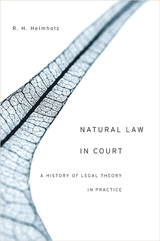 Natural Law in Court: A History of Legal Theory in Practice
R. H. Helmholz
Harvard University Press, 2015 The theory of natural law grounds human laws in the universal truths of God’s creation. Until very recently, lawyers in the Western tradition studied natural law as part of their training, and the task of the judicial system was to put its tenets into concrete form, building an edifice of positive law on natural law’s foundations. Although much has been written about natural law in theory, surprisingly little has been said about how it has shaped legal practice. Natural Law in Court asks how lawyers and judges made and interpreted natural law arguments in England, Europe, and the United States, from the beginning of the sixteenth century to the American Civil War.
R. H. Helmholz sees a remarkable consistency in how English, Continental, and early American jurisprudence understood and applied natural law in cases ranging from family law and inheritance to criminal and commercial law. Despite differences in their judicial systems, natural law was treated across the board as the source of positive law, not its rival. The idea that no person should be condemned without a day in court, or that penalties should be proportional to the crime committed, or that self-preservation confers the right to protect oneself against attacks are valuable legal rules that originate in natural law. From a historical perspective, Helmholz concludes, natural law has advanced the cause of justice.
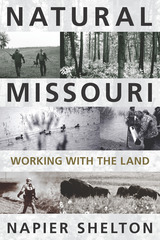 Natural Missouri: Working with the Land
Napier Shelton
University of Missouri Press, 2005 In Natural Missouri: Working with the Land, Napier Shelton offers a tour of notable natural sites in Missouri through the eyes of the people who work with them. Over a period of three years, he roamed all over the state, visiting such different places as Wilson’s Creek National Battlefield, Pomme de Terre Lake, Mark Twain National Forest, the Ozark National Scenic Riverways, Roaring River State Park, Prairie State Park, Ted Shanks Conservation Area, and Mingo National Wildlife Refuge. Along the way he interviewed professional resource managers and naturalists, biologists, interpreters, conservation agents, engineers, farmers, hunters, fishermen, writers, and many others in an effort to gain a perspective that only people who work with the land—for business or for pleasure—can have. Shelton describes a range of land-management philosophies and techniques, from largely hands-off, as in state parks, to largely hands-on, as in farming. He also addresses the questions that surround some of the more controversial practices, such as the use of fire for land management and the introduction of nonnative species. With his relaxed writing style, Shelton invites the reader along on his journeys to experience the places and people as he did. Natural Missouri captures the essence of Missouri and gives readers a greater appreciation for the natural resources of the state and the people who work so hard to manage and protect them.
Natural Moral Law in Contemporary Society
Holger Zaborowski
Catholic University of America Press, 2010 The essays of this volume examine natural moral law, different natural law theories, and the role that natural law can and should play in our contemporary society
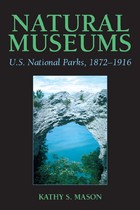 Natural Museums: U.S. National Parks, 1872-1916
Kathy S. Mason
Michigan State University Press, 2004 In 1872, the world’s first national park was founded at Yellowstone. Although ideas of nature conservation were not embraced generally by the American public, five more parks were created before the turn of the century. By 1916, the year that the National Park Service was born, the country could boast of fourteen national parks, including such celebrated areas as Yosemite and Sequoia. Kathy Mason demonstrates that Congress, park superintendents, and the American public were forming general, often tacit notions of the parks’ purpose before the new bureau was established.
Although the Park Service recently has placed some emphasis on protecting samples of North America’s ecosystems, the earliest national parks were viewed as natural museums—monuments to national grandeur that would edify visitors. Not only were these early parks to preserve monumental and unique natural attractions, but they also had to be of no use to mining, lumbering, agriculture, and other “productive” industries. Natural Museums examines the notions of park monumentalism, “worthlessness,” and national significance, as well as the parks’ roles as wilderness preserves and recreational centers.
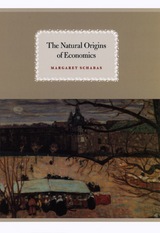 The Natural Origins of Economics
Margaret Schabas
University of Chicago Press, 2005 References to the economy are ubiquitous in modern life, and virtually every facet of human activity has capitulated to market mechanisms. In the early modern period, however, there was no common perception of the economy, and discourses on money, trade, and commerce treated economic phenomena as properties of physical nature. Only in the early nineteenth century did economists begin to posit and identify the economy as a distinct object, divorcing it from natural processes and attaching it exclusively to human laws and agency.
In The Natural Origins of Economics, Margaret Schabas traces the emergence and transformation of economics in the eighteenth and nineteenth centuries from a natural to a social science. Focusing on the works of several prominent economists—David Hume, Adam Smith, Thomas Malthus, David Ricardo, and John Stuart Mill—Schabas examines their conceptual debt to natural science and thus locates the evolution of economic ideas within the history of science. An ambitious study, The Natural Origins of Economics will be of interest to economists, historians, and philosophers alike.
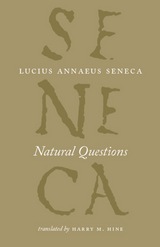 Natural Questions
Lucius Annaeus Seneca
University of Chicago Press, 2010 Lucius Annaeus Seneca (4 BCE–65 CE) was a Roman Stoic philosopher, dramatist, statesman, and adviser to the emperor Nero, all during the Silver Age of Latin literature. The Complete Works of Lucius Annaeus Seneca is a fresh and compelling series of new English-language translations of his works in seven accessible volumes. Edited by world-renowned classicists Elizabeth Asmis, Shadi Bartsch, and Martha C. Nussbaum, this engaging collection restores Seneca—whose works have been highly praised by modern authors from Desiderius Erasmus to Ralph Waldo Emerson—to his rightful place among the classical writers most widely studied in the humanities. Written near the end of Seneca’s life, Natural Questions is a work in which Seneca expounds and comments on the natural sciences of his day—rivers and earthquakes, wind and snow, meteors and comets—offering us a valuable look at the ancient scientific mind at work. The modern reader will find fascinating insights into ancient philosophical and scientific approaches to the physical world and also vivid evocations of the grandeur, beauty, and terror of nature.
 Natural Questions, Volume I: Books 1–3
Seneca
Harvard University Press, 1971 Following nature in pursuit of ethics.
Seneca, Lucius Annaeus, born at Corduba (Cordova) ca. 4 BC, of a prominent and wealthy family, spent an ailing childhood and youth at Rome in an aunt’s care. He became famous in rhetoric, philosophy, money-making, and imperial service. After some disgrace during Claudius’ reign he became tutor and then, in AD 54, advising minister to Nero, some of whose worst misdeeds he did not prevent. Involved (innocently?) in a conspiracy, he killed himself by order in 65. Wealthy, he preached indifference to wealth; evader of pain and death, he preached scorn of both; and there were other contrasts between practice and principle.
We have Seneca’s philosophical or moral essays (ten of them traditionally called Dialogues)—on providence, steadfastness, the happy life, anger, leisure, tranquility, the brevity of life, gift-giving, forgiveness—and treatises on natural phenomena. Also extant are 124 epistles, in which he writes in a relaxed style about moral and ethical questions, relating them to personal experiences; a skit on the official deification of Claudius, Apocolocyntosis (in LCL 15); and nine rhetorical tragedies on ancient Greek themes. Many epistles and all his speeches are lost.
The treatises on natural phenomena, Naturales Quaestiones, are collected in Volumes VII and X of the Loeb Classical Library’s ten-volume edition of Seneca.
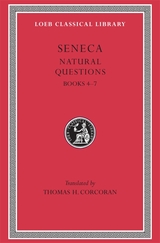 Natural Questions, Volume II: Books 4–7
Seneca
Harvard University Press Following nature in pursuit of ethics.
Seneca, Lucius Annaeus, born at Corduba (Cordova) ca. 4 BC, of a prominent and wealthy family, spent an ailing childhood and youth at Rome in an aunt’s care. He became famous in rhetoric, philosophy, money-making, and imperial service. After some disgrace during Claudius’ reign he became tutor and then, in AD 54, advising minister to Nero, some of whose worst misdeeds he did not prevent. Involved (innocently?) in a conspiracy, he killed himself by order in 65. Wealthy, he preached indifference to wealth; evader of pain and death, he preached scorn of both; and there were other contrasts between practice and principle.
We have Seneca’s philosophical or moral essays (ten of them traditionally called Dialogues)—on providence, steadfastness, the happy life, anger, leisure, tranquility, the brevity of life, gift-giving, forgiveness—and treatises on natural phenomena. Also extant are 124 epistles, in which he writes in a relaxed style about moral and ethical questions, relating them to personal experiences; a skit on the official deification of Claudius, Apocolocyntosis (in LCL 15); and nine rhetorical tragedies on ancient Greek themes. Many epistles and all his speeches are lost.
The treatises on natural phenomena, Naturales Quaestiones, are collected in Volumes VII and X of the Loeb Classical Library’s ten-volume edition of Seneca.
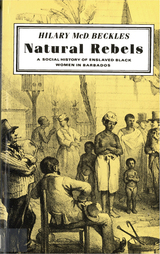 Natural Rebels: A Social History of Enslaved Women in Barbados
Hilary McD Beckles
Rutgers University Press, 2012 Although we are learning a lot from historians about the lives of slaves in the United States, we still know little about slavery in the Caribbean. Hilary Beckles's book on the social, economic, and labor history of slave women in Barbados, from the mid-seventeenth to the mid-nineteenth century, is a major addition to this literature. Drawing on contemporary documents and records, newspapers, and personal correspondence, Beckles reveals how slave women were central to the plantation economy of Barbados. They had two kinds of value for sugar planters: they could work just as hard as men, and they could literally reproduce the slave class.
Beckles details the daily lives of slave women in conditions of extreme exploitation. They suffered from harsh conditions, cruel punishments, malnutrition, disease, high mortality, and fear of abandonment when they were too old to work. He described the various categories and responsibilities of slaves, and the roles of children in the slave economy. Beckles looks at family structures and the complexities of interracial unions. He also shows how female slaves regularly resisted slavery, using both violent and nonviolent means. They never accommodated themselves to the system; as natural rebels, they fought in any way they could for survival.
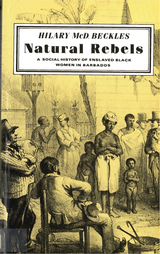 Natural Rebels: A Social History of Enslaved Women in Barbados
Beckles, Hilary
Rutgers University Press, 1990 Although we are learning a lot from historians about the lives of slaves in the United States, we still know little about slavery in the Caribbean. Hilary Beckles's book on the social, economic, and labor history of slave women in Barbados, from the mid-seventeenth to the mid-nineteenth century, is a major addition to this literature. Drawing on contemporary documents and records, newspapers, and personal correspondence, Beckles reveals how slave women were central to the plantation economy of Barbados. They had two kinds of value for sugar planters: they could work just as hard as men, and they could literally reproduce the slave class.
Beckles details the daily lives of slave women in conditions of extreme exploitation. They suffered from harsh conditions, cruel punishments, malnutrition, disease, high mortality, and fear of abandonment when they were too old to work. He described the various categories and responsibilities of slaves, and the roles of children in the slave economy. Beckles looks at family structures and the complexities of interracial unions. He also shows how female slaves regularly resisted slavery, using both violent and nonviolent means. They never accommodated themselves to the system; as natural rebels, they fought in any way they could for survival.
Natural Resource Development and Human Rights in Latin America: State and non-state actors in the promotion of and opposition to extractivism
Edited by Malayna Raftopoulos and Radoslaw Poweska
University of London Press, 2017 Contemporary development debates in Latin America are marked by the pursuit of economic growth, technological improvement and poverty reduction, and are overshadowed by growing concerns about the preservation of the environment and human rights. This collection’s multidisciplinary perspective links local, national, regional and transnational levels of inquiry into the interaction of state and non-state actors involved in promoting or opposing natural resource development. Taking this approach allows the book to contemplate the complex panorama of competing visions, concepts and interests grounded in the mutual influences and interdependencies which shape the contemporary arena of social-environmental conflicts in the region.
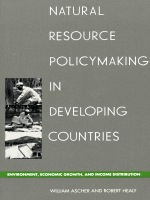 Natural Resource Policymaking in Developing Countries: Environment, Economic Growth, and Income Distribution
William L. Ascher and Robert Healy
Duke University Press, 1990 Drawing on case studies developed over a two-year period, 1987–1989, by Fellows in the Program in International Development Policy at Duke University, including experienced representatives from developing countries, the World Bank, and scholars, the authors integrate the growing interest in environmental protection and resource conservation into the existing body of knowledge about the political economy of developing countries.
This book is about the links that tie resource use, environmental quality, and economic development, and the way in which those links are affected by the distribution of income and resource ownership. The links may be relatively simple, as in the case of peasant farmers too poor to conserve resources for the future and with nothing to gain from sound environmental practices. Or they may be very complex—as the authors find when they demonstrate how achievement of higher incomes by the rich can increase environmentally destructive behavior by the poor. Many of the links in some way involve rural land use, whether for agriculture or forestry. Natural Resource Policymaking in Developing Countries argues that the policies that matter are not merely those dealing with resources and the environment, but a much broader set that includes income distribution and asset ownership.
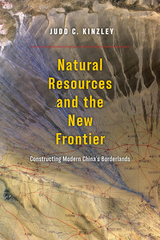 Natural Resources and the New Frontier: Constructing Modern China's Borderlands
Judd C. Kinzley
University of Chicago Press, 2018 China’s westernmost province of Xinjiang has experienced escalating cycles of violence, interethnic strife, and state repression since the 1990s. In their search for the roots of these growing tensions, scholars have tended to focus on ethnic clashes and political disputes. In Natural Resources and the New Frontier, historian Judd C. Kinzley takes a different approach—one that works from the ground up to explore the infrastructural and material foundation of state power in the region.
As Kinzley argues, Xinjiang’s role in producing various natural resources for regional powers has been an important but largely overlooked factor in fueling unrest. He carefully traces the buildup to this unstable situation over the course of the twentieth century by focusing on the shifting priorities of Chinese, Soviet, and provincial officials regarding the production of various resources, including gold, furs, and oil among others. Through his archival work, Kinzley offers a new way of viewing Xinjiang that will shape the conversation about this important region and offer a model for understanding the development of other frontier zones in China as well as across the global south.
Natural Resources for the 21st Century
Edited by Neil Sampson and Dwight Hair; American Forestry Association
Island Press, 1990 Natural Resources for the 21st Century is an in-depth assessment by natural resource experts that offers a reliable status report on water, croplands, soil, forests, wetlands, rangelands, fisheries, wildlife, and wilderness.
Natural Right and History
Leo Strauss
University of Chicago Press, 1965 In this classic work, Leo Strauss examines the problem of natural right and argues that there is a firm foundation in reality for the distinction between right and wrong in ethics and politics. On the centenary of Strauss's birth, and the fiftieth anniversary of the Walgreen Lectures which spawned the work, Natural Right and History remains as controversial and essential as ever.
"Strauss . . . makes a significant contribution towards an understanding of the intellectual crisis in which we find ourselves . . . [and] brings to his task an admirable scholarship and a brilliant, incisive mind."—John H. Hallowell, American Political Science Review
Leo Strauss (1899-1973) was the Robert Maynard Hutchins Distinguished Service Professor Emeritus in Political Science at the University of Chicago.
The Natural Rights Republic: Studies in the Foundation of the American Political Tradition
Michael P. Zuckert
University of Notre Dame Press, 1996 In The Natural Rights Republic, renowned political theorist Michael P. Zuckert examines the natural rights philosophy as expressed in sources like the Declaration of Independence and aims to counter contemporary confusion by offering an insightful study of the concept that dominated the mindset of the founding generation of the United States.
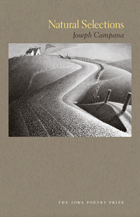 Natural Selections
Joseph Campana
University of Iowa Press, 2012 Whether wandering the paths of the imagination, driving through sparsely populated countryside, or listening for the voices of animals, Joseph Campana’s poemsattend to the ways we are indelibly marked by habitat. Shot full of accidental attachments and reluctant transience, Natural Selectionsproduces from vibrant contradiction potent song. In poems both lyric and expansive, Natural Selections finds in the simplicity and strangeness of middle America a complex metaphysics of place and an uncanny perspective reminiscent of the landscapes of Grant Wood. Birds and beasts, frequent storms, country roads, a fraught election, and some of Ohio’s literary guardian angels (James Wright, Hart Crane, and Sherwood Anderson) haunt the poems. Whether enigmatically refracted or brutally direct, these poems attend to the way life is beautifully, violently, and unexpectedly marked by place. With a boldness of vision that might overwhelm a lesser talent, Joseph Campana gives us a collection guided by a focused intelligence and yet containing wonderment and awe at its heart. By turns ferocious and charming, contemporary and mythic, grief-stricken and funny, the poet’s voice is always original, direct, and pitch-perfect. The poems in this book are a wonder.
Natural Shocks
Richard Stern
Northwestern University Press, 2004 Written by one of America's finest contemporary novelists, Natural Shocks is a witty, wonderfully intelligent novel about a successful journalist who suddenly finds himself jolted by the "natural shocks" of his private life. A new foreword by James Schiffer relates the novel to our time and describes the mastery which in 1985 won Stern the Medal of Merit for the Novel given by the American Academy of Arts and Letters.
One reader writes, "I read Natural Shocks as a student, and this novel has stayed with me over the years. I recall the poignant pain-pleasure I experienced in reading of the approaching death of an 18-year old woman from melanoma, and the protagonist's unaccountable love and grief...rereading the novel, I am better able to place this moment within the book's deeper themes about writing, responsibility, accountability, betrayal, and love."
A Natural State: Essays on Texas
By Stephen Harrigan
University of Texas Press, 1994 In this remarkable collection of essays, Stephen Harrigan explores, with an unfailing depth of feeling, the human longing to feel at home in the world of nature. In vivid and convincing prose, he evokes the landscape of his home territory, Texas, and his own reactions, sometimes droll, sometimes haunted, to the extraordinary power of place that Texas projects.
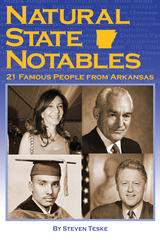 Natural State Notables: Twenty-One Famous People from Arkansas
Steven Teske
Butler Center for Arkansas Studies, 2014 How many famous people from Arkansas can you name? You might think of a few quickly, such as former U.S. president Bill Clinton and Walmart creator Sam Walton. But you may be surprised to find out how many other famous and fascinating people come from Arkansas (or have strong ties to the state). Natural State Notables profiles twenty-one famous and fascinating people from Arkansas, including musicians, athletes, business leaders, and public servants. Among others, readers will learn about a famous surgeon who was a pioneer in kidney transplantation, a woman who kept a hospital open during the Depression, and a teacher who wrote a famous song to match a history lesson. Featured are poor people who worked hard to become successful and a rich man who moved to Arkansas, fell in love with the state, and worked hard to make it better. All of these people are "Natural State Notables," some of the many who have made Arkansas what it is today.
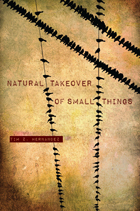 Natural Takeover of Small Things
Tim Z. Hernandez
University of Arizona Press, 2013 Natural Takeover of Small Things is a collection of poetry that offers an unflinching view of “California’s Heartland,” the San Joaquin Valley. In his distinctive, lyrical, pull-no-punches style, Tim Z. Hernandez offers a glimpse of the people, the landscape, the rhythm, and the detritus of the rural West. As Hernandez peels back the façade of the place, he reveals that home is not always where the heart is.
The book opens with an image of Fresno as “the inexhaustible nerve/in the twitching leg of a dog/three hours after being smashed/beneath the retread wheel/of a tomato truck en route to/a packing house that was raided/by the feds just days before the harvest.” It ends with “Adios, Fresno,” an astringent farewell to the city: “You can keep your fields,/the sun will follow me./I won’t reconsider./I’ve overstayed my welcome/by three generations.” By then, we have toured the breadth of the San Joaquin Valley, have tasted Fuyu persimmons and lengua, have witnessed a home crumbling to foreclosure, and listened to the last words of a dying campesino. We’re made aware that this is an atmosphere scented by an entirely organic stew—a melding of culture, objects, and forms. This is a place where rubble mirrors the refuse of lives. But garbage is also compost. And if we squint, we can see through the wreckage a few small patches where love could be taking root and hope might actually be sprouting.
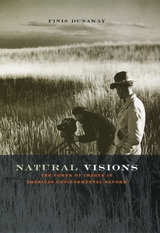 Natural Visions: The Power of Images in American Environmental Reform
Finis Dunaway
University of Chicago Press, 2005 Walden Pond. The Grand Canyon.Yosemite National Park. Throughout the twentieth century, photographers and filmmakers created unforgettable images of these and other American natural treasures. Many of these images, including the work of Ansel Adams, continue to occupy a prominent place in the American imagination. Making these representations, though, was more than a purely aesthetic project. In fact, portraying majestic scenes and threatened places galvanized concern for the environment and its protection. Natural Visions documents through images the history of environmental reform from the Progressive era to the first Earth Day celebration in 1970, showing the crucial role the camera played in the development of the conservation movement.
In Natural Visions, Finis Dunaway tells the story of how visual imagery—such as wilderness photographs, New Deal documentary films, and Sierra Club coffee-table books—shaped modern perceptions of the natural world. By examining the relationship between the camera and environmental politics through detailed studies of key artists and activists, Dunaway captures the emotional and spiritual meaning that became associated with the American landscape. Throughout the book, he reveals how photographers and filmmakers adapted longstanding traditions in American culture—the Puritan jeremiad, the romantic sublime, and the frontier myth—to literally picture nature as a place of grace for the individual and the nation.
Beautifully illustrated with photographs by Ansel Adams, Eliot Porter, and a host of other artists, Natural Visions will appeal to a wide range of readers interested in American cultural history, the visual arts, and environmentalism.
 Natural Wonders: A Novel
Angela Woodward, Foreword by Stacey Levine
University of Alabama Press, 2016 Winner of the FC2 Catherine Doctorow Innovative Fiction Prize
Natural Wonders is a novel in the form of a series of lectures about the earth and its prehistory. In it, a grieving widow assembles an idiosyncratic history of the earth’s history based on her understanding and impressions of her deceased husband’s papers.
In Natural Wonders, Jenny is given the task of assembling a memorial edition of her recently deceased husband Jonathan’s lecture series about the physical history of the earth. With little knowledge of his work or of Jonathan himself, Jenny constructs from his fragmentary and disorganized notes her own version of our planet’s past.
Presented as a series of lectures, Jenny’s earth history is an amalgam of stories from science and about scientists—a Serbian mathematician and his theory of the ice ages, a Swiss doctor camped on a glacier, the mysterious materia pinguis thought to have drifted down from stars to form fossils. Into these stories she interweaves scenes from their marriage as well as material she finds on Jonathan’s shelves. In her history, an explanation of continental drift becomes enmeshed with a schoolboy’s erotic encounter with an older woman. Icebergs in an Andean lake launch a woman’s jealous affair with a third-rate actor, and H. G. Wells’s Island of Dr. Moreau is dramatically recounted in new form.
Natural Wonders mixes mythology, popular fiction, and a misfired romance with the story of the earth hurtling around the sun. From intimately human to geologic to cosmic, it explores change, love, and loss.
The Natural Work of Art: The Experience of Romance in Shakespeare’s Winter’s Tale
John Anthony Williams
Harvard University Press Viewing Shakespearean romance as a poetic response to the metaphysical problems of “mutability” and man's place in nature, the author has selected The Winter's Tale to illustrate his hypothesis. His critical study—from a perspective gained through comparative references to a large number of works by other Elizabethan and Jacobean playwrights—rejects the traditional notion that Shakespeare deliberately created a fantasy world in which the happy ending signified an escape from reality and interprets the tone of the romance in terms of an all-encompassing vision in which time and change are accepted as life-fulfilling forces.
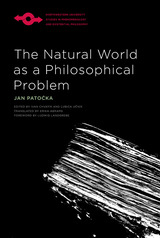 The Natural World as a Philosophical Problem
Jan Patocka, edited by Ivan Chvatík and Lubica Ucnik, translated by Erika Abrams, foreword by Ludwig Landgrebe
Northwestern University Press, 2016 The first text to critically discuss Edmund Husserl’s concept of the "life-world," The Natural World as a Philosophical Problem reflects Jan Patocka's youthful conversations with the founder of phenomenology and two of his closest disciples, Eugen Fink and Ludwig Landgrebe. Now available in English for the first time, this translation includes an introduction by Landgrebe and two self-critical afterwords added by Patocka in the 1970s. Unique in its extremely broad range of references, the work addresses the views of Russell, Wittgenstein, and Carnap alongside Husserl and Heidegger, in a spirit that considerably broadens the understanding of phenomenology in relation to other twentieth-century trends in philosophy. Even eighty years after first appearing, it is of great value as a general introduction to philosophy, and it is essential reading for students of the history of phenomenology as well as for those desiring a full understanding of Patocka’s contribution to contemporary thought.
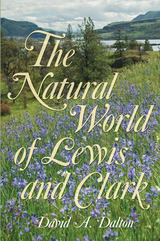 The Natural World of Lewis and Clark
David A. Dalton
University of Missouri Press, 2007 On their journey westward, Lewis and Clark demonstrated an amazing ability to identify the new plants and animals they encountered, and their observations enriched science’s understanding of the trans-Mississippi West. Others have written about their discoveries and have faithfully cataloged their findings; now a twenty-first-century biologist reexamines some of those discoveries in the light of modern science to show for the first time their lasting biological significance. The Natural World of Lewis and Clark interprets the expedition’s findings from a modern perspective to show how advances such as DNA research, modern understanding of proteins, and the latest laboratory methods shed new light on them. David Dalton recounts the expedition’s observations and, in clear, readily accessible terms, relates them to principles of ecology, genetics, physiology, and even animal behavior. Writing in informal language with a bit of wry humor, Dalton invites readers to imagine the West that Lewis and Clark found, revealing the dynamic features of nature and the dramatic changes that earlier peoples brought about. He explains surprising facts, ranging from why Indians used cottonwood bark as winter feed for horses to why the explorers experienced gastric distress with some foods, and even why the Expedition’s dog would have been well-advised to avoid a diet of salmon. Dalton introduces the tools and techniques of today’s science in a way that won’t intimidate nonspecialist readers. Throughout the book he expertly balances botanical and zoological information, with coverage ranging from the extinction of large animals in North America a few thousand years ago to the expected effects of invasive species and climate change in the coming centuries. Enhanced with unusual and informative illustrations—not only nature photography but also historical images—this book will fascinate any reader with an interest in the natural history of the American West as well as broader issues in conservation and ecology. The Natural World of Lewis and Clark tells the story behind the story of this remarkable expedition and shows that its legacy extended not only across a continent but also into our own time.
Natural-Born Proud: A Revery
S.R. Martin Jr.
Utah State University Press, 2010 A young man from Monterey and his younger brother go on their first deer hunt with their minister father and his friends. The setting is 1950s northern California, in country where, from the right height, one can see Mt. Shasta in one direction, Mt. Lassen in the other. It is a region of small, insular towns, and although it is a familiar hunting ground for the Reverend and his buddies, not everyone there welcomes black hunters. Father and son both shoulder their pride, and a racial confrontation seems inevitable.
Among the lessons young Satch learns is the sometime advantage of wit and spine. During their days in the wilderness, the brothers are initiated to the right practice of the hunt and camp and to the ribald talk, needling banter, camp tales, and occasional aggravation of sundry friends. Hunting has a primal nature, but as Satch sees, so may the variable interactions of men.
 Naturalism in Question
Mario De Caro
Harvard University Press, 2008 Today the majority of philosophers in the English-speaking world adhere to the "naturalist" credos that philosophy is continuous with science, and that the natural sciences provide a complete account of all that exists--whether human or nonhuman. The new faith says science, not man, is the measure of all things. However, there is a growing skepticism about the adequacy of this complacent orthodoxy. This volume presents a group of leading thinkers who criticize scientific naturalism not in the name of some form of supernaturalism, but in order to defend a more inclusive or liberal naturalism.
The many prominent Anglo-American philosophers appearing in this book--Akeel Bilgrami, Stanley Cavell, Donald Davidson, John Dupré, Jennifer Hornsby, Erin Kelly, John McDowell, Huw Price, Hilary Putnam, Carol Rovane, Barry Stroud, and Stephen White--do not march in lockstep, yet their contributions demonstrate mutual affinities and various unifying themes. Instead of attempting to force human nature into a restricted scientific image of the world, these papers represent an attempt to place human nature at the center of renewed--but still scientifically respectful--conceptions of philosophy and nature.
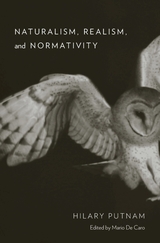 Naturalism, Realism, and Normativity
Hilary Putnam
Harvard University Press, 2016 Hilary Putnam’s ever-evolving philosophical oeuvre has been called “the history of recent philosophy in outline”—an intellectual achievement, nearly seventy years in the making, that has shaped disciplinary fields from epistemology to ethics, metaphysics to the philosophy of physics, the philosophy of mathematics to the philosophy of mind. Naturalism, Realism, and Normativity offers new avenues into the thought of one of the most influential minds in contemporary analytic philosophy.
The essays collected here cover a range of interconnected topics including naturalism, commonsense and scientific realism, ethics, perception, language and linguistics, and skepticism. Aptly illustrating Putnam’s willingness to revisit and revise past arguments, they contain important new insights and freshly illuminate formulations that will be familiar to students of his work: his rejection of the idea that an absolute conception of the world is obtainable; his criticism of a nihilistic view of ethics that claims to be scientifically based; his pathbreaking distinction between sensations and apperceptions; and his use of externalist semantics to invalidate certain forms of skepticism. Above all, Naturalism, Realism, and Normativity reflects Putnam’s thinking on how to articulate a theory of naturalism which acknowledges that normative phenomena form an ineluctable part of human experience, thereby reconciling scientific and humanistic views of the world that have long appeared incompatible.
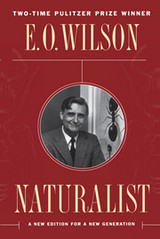 Naturalist
Edward O. Wilson
Island Press, 1994 Edward O. Wilson -- University Professor at Harvard, winner of two Pulitzer prizes, eloquent champion of biodiversity -- is arguably one of the most important thinkers of the twentieth century. His career represents both a blueprint and a challenge to those who seek to explore the frontiers of scientific understanding. Yet, until now, little has been told of his life and of the important events that have shaped his thought.In Naturalist, Wilson describes for the first time both his growth as a scientist and the evolution of the science he has helped define. He traces the trajectory of his life -- from a childhood spent exploring the Gulf Coast of Alabama and Florida to life as a tenured professor at Harvard -- detailing how his youthful fascination with nature blossomed into a lifelong calling. He recounts with drama and wit the adventures of his days as a student at the University of Alabama and his four decades at Harvard University, where he has achieved renown as both teacher and researcher.As the narrative of Wilson's life unfolds, the reader is treated to an inside look at the origin and development of ideas that guide today's biological research. Theories that are now widely accepted in the scientific world were once untested hypotheses emerging from one mans's broad-gauged studies. Throughout Naturalist, we see Wilson's mind and energies constantly striving to help establish many of the central principles of the field of evolutionary biology.The story of Wilson's life provides fascinating insights into the making of a scientist, and a valuable look at some of the most thought-provoking ideas of our time.
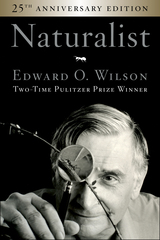 Naturalist 25th Anniversary Edition
Edward O. Wilson
Island Press, 2019 Edward O. Wilson—winner of two Pulitzer prizes, champion of biodiversity, and Faculty Emeritus at Harvard University—is arguably one of the most important thinkers of the twentieth century. Yet his celebrated career began not with an elite education but from an insatiable curiosity about the natural world and drive to explore its mysteries. Called “one of the finest scientific memoirs ever written” by the Los Angeles Times, Naturalist is a wise and personal account of Wilson’s growth as a scientist and the evolution of the fields he helped define.
This 25th Anniversary Edition celebrates Naturalist as a modern classic. Wilson traces the trajectory of his life—from a childhood spent exploring the Gulf Coast of Alabama and Florida to life as a tenured professor at Harvard—detailing how his youthful fascination with nature blossomed into a lifelong calling. With humor and insight, Wilson recounts his days as a student at the University of Alabama and decades at Harvard University, where he has achieved renown as both teacher and researcher.
As the narrative of Wilson's life unfolds, the reader is treated to an inside look at the origin and development of ideas that guide today's biological research. Theories that are now widely accepted in the scientific world were once untested hypotheses emerging from one man’s wide-ranging studies. At once practical and lyric, Naturalist provides fascinating insights into the making of a scientist, and a valuable look at some of the most thought-provoking ideas of our time.
As relevant today as when it was first published, Naturalist is a poignant reminder of the deeply human side of science and an inspiring call to celebrate the little things of the world
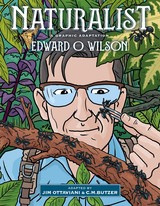 Naturalist: A Graphic Adaptation
Edward O. Wilson, Adapted by Jim Ottaviani, Illustrated by C.M. Butzer
Island Press, 2020 "Poised to inspire a new generation of naturalists." - Publishers Weekly A vibrant graphic adaptation of the classic science memoir
Regarded as one of the world’s preeminent biologists, Edward O. Wilson spent his boyhood exploring the forests and swamps of south Alabama and the Florida panhandle, collecting snakes, butterflies, and ants—the latter to become his lifelong specialty. His memoir Naturalist, called “one of the finest scientific memoirs ever written” by the Los Angeles Times, is an inspiring account of Wilson’s growth as a scientist and the evolution of the fields he helped define. This graphic edition, adapted by New York Times bestselling comics writer Jim Ottaviani and illustrated by C.M.Butzer, brings Wilson’s childhood and celebrated career to life through dynamic full-color illustrations and Wilson’s own lyric writing.
In this adaptation of Naturalist, vivid illustrations draw readers in to Wilson’s lifelong quest to explore and protect the natural world. His success began not with an elite education but an insatiable curiosity about Earth’s wild creatures, and this new edition of Naturalist makes Wilson’s work accessible for anyone who shares his passion. On every page, striking art adds immediacy and highlights the warmth and sense of humor that sets Wilson’s writing apart.
Naturalist was written as an invitation—a reminder that curiosity is vital and scientific exploration is open to all of us. Each dynamic frame of this graphic adaptation deepens Wilson’s message, renewing his call to discover and celebrate the little things of the world.
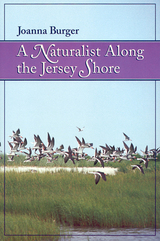 A Naturalist Along the Jersey Shore
Burger, Joanna
Rutgers University Press, 1996 Come for a journey along the Jersey shore with naturalist and ecologist Joanna Burger! In these deeply felt, closely observed personal essays, Burger invokes the intertwined lives of naturalist and wild creatures at the ever-changing edge of ocean and land. Discover with her the delicate mating dances of fiddler crabs, the dangers to piping plovers, the swarming of fish communities into the bays and estuaries, the trilling notes of Fowler's toads, and the subtle green-grays of salt marshes. Joanna Burger knows the shore through all its seasons--the first moment of spring when the herring gulls arrive on ice-gouged salt marshes, the end of spring when the great flocks of shorebirds come to feed on horseshoe crab eggs at Cape May, the summer when the peregrine hunts its prey, the fall when the migrations of hawks and monarch butterflies attract watchers from around the world, and the depths of winter when a lone snowy owl sweeps across snow-covered dunes and frozen bay.
This is a book that anyone who loves the Jersey shore will cherish! And because so many of these wonderful creatures live all along the Atlantic coast, it will be of equal interest to beach-lovers, naturalists, bird-watchers, fishermen, and coastal and marine scientists from North Carolina to Maine.
 A Naturalist amid Tropical Splendor
Alexander F. Skutch
University of Iowa Press, 1987 In this reflective account of life in the tropics, Alexander Skutch offers readers both his observations and his interpretations of what he has experienced. In the many chapters about birds and their behavior, he describes a dove that defends its nest with rare courage, castlebuilders who create elaborate nests of interlaced twigs, oropendolas that cluster long woven pouches in high treetops, and an exceptionally graceful hummingbird who fails to pay for its nectar by pollinating the flowers that yield it. Skutch also describes curious plants and their flowers, including a birthwort that holds its pollinating flies captive and fern fronds that twine high up trunks in the rain forest. With penetrating clarity, Skutch considers the significance of all this restless activity: he examines the origins of beauty and our ability to appreciate it, the foundations of tropical splendor, the factors that help us feel close to nature or alienated from it, and the possibility of consciousness and emotion in animals. He also addresses the quandary of the biologist contemplating painful experiments on animals rather than learning by direct observation, and he asserts that our capacity to care for the world around us is the truest criterion of our evolutionary advancement. Skutch brings a thoughtful, unequaled voice to the description of the world he has grown to know and understand, a world considered forbidding by most northerners and still largely unexplored.
A Naturalist in Alaska
Adolph Murie
University of Arizona Press, 1990 Winner of the John Burroughs Medal
"A fascinating study of the life cycles of the animals of Alaska and their inter-relationships. One venturing to capture something of the true beauty of Alaska and its fauna will probably find it in this book."—Journal of the West
"This book should be considerable aid to those who wish to preserve some of the great natural treasures still remaining in Alaska in the face of the inevitable pressures of a growing population. The writing is absolutely first rate. Highly recommended."—Library Journal
The Naturalist in Nicaragua
Thomas Belt
University of Chicago Press, 1985 "The best of all natural history journals which have ever been published."—Charles Darwin, 1874. Beautifully illustrated and a pleasure to read, this classic book describes the geography, geology, ecology, flora, fauna, and native inhabitants of Nicaragua in the nineteenth century. Many of Belt's detailed and accurate observations were not confirmed until decades later—for example, the fact that certain plants have "standing armies" of ants that defend them.
A Naturalist's Guide to the Arctic
E. C. Pielou
University of Chicago Press, 1994 This book is a practical, portable guide to all of the Arctic's natural history—sky, atmosphere, terrain, ice, the sea, plants, birds, mammals, fish, and insects—for those who will experience the Arctic firsthand and for armchair travelers who would just as soon read about its splendors and surprises. It is packed with answers to naturalists' questions and with questions—some of them answered—that naturalists may not even have thought of.
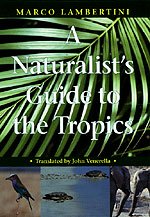 A Naturalist's Guide to the Tropics
Marco Lambertini
University of Chicago Press, 2000 Every year hundreds of thousands of travelers head for the Tropics to thrill to the raucous call of a howler monkey booming across the emerald cathedral of a rainforest, or to marvel at a brightly colored clown fish gliding fearlessly among the stinging tentacles of a sea anemone on a coral reef. Ranging from South and Central America to Africa, Southeast Asia, Oceania, and the Caribbean, A Naturalist's Guide to the Tropics provides engaging overviews of the geology, climate, soils, plants, animals, and major ecosystems of the Tropics. The book is beautifully illustrated throughout with color plates, photographs, and drawings.
Whether you're a first-time visitor or a veteran of many trips, this convenient guidebook can help you plan your vacation and serve as a knowledgeable companion to answer the many questions that may arise during the course of your journey. Why are tropical birds and fishes so colorful? What is an atoll, and how do they form? Why are tropical soils red and sterile, while rainforests are lush and green? Why does Madagascar have lemurs but not monkeys? Special features of the book include chapters on the conservation status of the Tropics and how to prepare with "caution without obsession" for tropical dangers such as infectious diseases and charging rhinoceroses.
The first comprehensive introduction to the natural history of the Tropics worldwide, A Naturalist's Guide to the Tropics has been completely revised and updated by the author and the translator to reflect the most current information available.
* first field guide in English to cover all the world's tropics, not just specific regions or countries
* more than 350 illustrations, many in color
* sturdy flexibound cover and compact size ideal for travelers
* boxes in text define scientific terms or explore side topics in more detail, such as "What Is Biodiversity?" and "Why Is Tropical Fauna So Colorful?"
* discusses tropical dangers and precautions to cope with them, such as vaccinations to obtain and foods to avoid
 Naturalizing Inequality: Water, Race, and Biopolitics in South Africa
Michela Marcatelli
University of Arizona Press, 2021 More than twenty-five years after the end of apartheid, water access remains a striking reminder of racial inequality in South Africa. This book compellingly argues that in the post-apartheid period inequality has not only been continuously reproduced but also legitimized.
Michela Marcatelli unravels this inequality paradox through an ethnography of water in a rural region of the country. The Waterberg Plateau is a space where agriculture, conservation, and extraction coexist and intersect. Marcatelli examines the connections between neoliberalism, race, and the environment by showing that racialized property relations around water and land are still recognized and protected by the post-apartheid state to sustain green growth. She argues that the government depicts growth as the best, if not only, solution to inequality. While white landowners maintain access to water, however, black ex-farmworkers are dispossessed once again of this essential-to-life resource.
If the promise of growth serves to normalize inequality, the call to save nature has the effect of naturalizing it even further.
 Naturalizing Mexican Immigrants: A Texas History
By Martha Menchaca
University of Texas Press, 2011 2013 — NACCS Book Award – National Association for Chicana and Chicano Studies During the nineteenth and early twentieth centuries, a majority of the Mexican immigrant population in the United States resided in Texas, making the state a flashpoint in debates over whether to deny naturalization rights. As Texas federal courts grappled with the issue, policies pertaining to Mexican immigrants came to reflect evolving political ideologies on both sides of the border. Drawing on unprecedented historical analysis of state archives, U.S. Congressional records, and other sources of overlooked data, Naturalizing Mexican Immigrants provides a rich understanding of the realities and rhetoric that have led to present-day immigration controversies. Martha Menchaca's groundbreaking research examines such facets as U.S.-Mexico relations following the U.S. Civil War and the schisms created by Mexican abolitionists; the anti-immigration stance that marked many suffragist appeals; the effects of the Spanish American War; distinctions made for mestizo, Afromexicano, and Native American populations; the erosion of means for U.S. citizens to legalize their relatives; and the ways in which U.S. corporations have caused the political conditions that stimulated emigration from Mexico. The first historical study of its kind, Naturalizing Mexican Immigrants delivers a clear-eyed view of provocative issues.
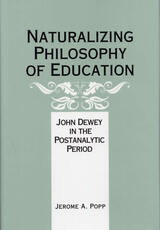 Naturalizing Philosophy of Education: John Dewey in the Postanalytic Period
Jerome A. Popp
Southern Illinois University Press, 1998 Jerome A. Popp examines the role of Dewey-based pragmatism in the past, present, and future of philosophy of education. He insists that even though Marx-ian utopian thought subjugated Dewey’s ideas during the 1970s, Dewey’s epistemological arguments are directly relevant to contemporary philosophy. He contends that not only are Dewey’s arguments related to how we think about philosophy of education; they actually improve the thinking reflected in the literature. Dewey’s arguments, he demonstrates, provide the basis for both a rejuvenated account of conceptual analysis and a criticism of the utopian relativism currently dominating the literature. Popp notes that empiricism, manifested in the philosophy of education as analytic philosophy, holds that scientific findings, especially from psychology, have no place in philosophy. But contemporary writers in the philosophy of science contend that to justify the methods of science we must consider what is known about intelligence and cognitive processes. These arguments are relevant to the ways in which we justify claims about proper education. Naturalizing epistemology (using the results of science in philosophic theories) leads to an enhanced account of Dewey’s instrumental approach to normative inquiry and strengthens attempts to justify educational practices. Dewey’s critique of utopian approaches to social theory is bolstered by contemporary arguments in epistemology and the philosophy of science. These arguments reject the attempt by some in philosophy of education to solve value questions through an appeal to utopian thinking. Popp agrees with Dewey’s view that the proper goals of education cannot be stated in these terms.
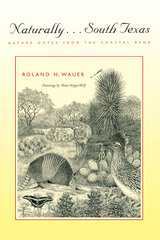 Naturally . . . South Texas: Nature Notes from the Coastal Bend
By Roland H. Wauer
University of Texas Press, 2001 The Golden Crescent of South Texas, a fifteen-county region along and inland from the middle Gulf Coast, is often called "the Crossroads" because of its natural diversity. Located in the heart of the Gulf Coast Prairie and Marshes, the area also encompasses the trailing edges of the South Texas Plains, Post Oak Savannah, and Blackland Prairie. This confluence of ecological zones makes it a wonderful place for birding and for observing the changing face of nature, especially during seasonal transitions. In this book, Ro Wauer describes a typical year in the natural life of South Texas. Using selected entries from his weekly column in the Victoria Advocate newspaper, he discusses numerous topics for each month, from the first appearance of butterflies in January, to alligators making a comeback in July, to the Christmas bird count in December. His observations are filled with intriguing natural history lore, from what sounds mockingbirds will imitate (almost any noise in their neighborhood) to how armadillos swim (by inflating themselves to increase their buoyancy).
 Naturally Healthy Mexican Cooking: Authentic Recipes for Dieters, Diabetics, and All Food Lovers
By Jim Peyton
University of Texas Press, 2014 Just about everyone loves Mexican food, but should you eat it if you want to manage your weight or diabetes? Yes, absolutely! There are literally hundreds of authentic Mexican dishes that are naturally healthy—moderate in calories, fat, and sugar—and completely delectable. In Naturally Healthy Mexican Cooking, Jim Peyton presents some two hundred recipes that have exceptional nutrition profiles, are easy to prepare, and, most important of all, taste delicious. Peyton starts from the premise that for any diet to work, you have to enjoy the food you’re eating. Substitutions that alter the taste and pleasure of food, such as nonfat yogurt for mayonnaise, have no place here. Instead, you’ll find tasty, highly nutritious, low-calorie dishes from the various schools of Mexican and Mexican American cooking in Texas, New Mexico, Arizona, and California. From traditional meat, seafood, and vegetarian entrees and antojitos mexicanos, including tacos, enchiladas, and tamales, to upscale alta cocina mexicana such as shrimp ceviche and mango salsa, these recipes are authentic, simple for home cooks to prepare with supermarket ingredients, flavorful, and fully satisfying in moderate portions. Every recipe includes nutritional analysis—calories, protein, carbs, fat, cholesterol, fiber, sugar, and sodium. In addition to the recipes, Peyton offers helpful information on diet and healthy eating, Mexican cooking and nutrition, ingredients, cooking techniques, and cooking equipment. Try the recipes in Naturally Healthy Mexican Cooking, and you’ll discover that comfort food can be both delicious and good for you. ¡Buen provecho!
 Natural:Mind
Vilém Flusser
University of Minnesota Press, 2013 In Natural:Mind, published for the first time in São Paulo, Brazil, in 1979, Vilém Flusser investigates the paradoxical connection between the concepts of nature and culture through a lively para-phenomenological analysis of natural and cultural phenomena. Can culture be considered natural and nature cultural? If culture is our natural habitat then do we not inhabit nature? These are only some of the questions that are raised in Natural:Mind in order to examine our continual redefinition of both terms and what that means for us existentially. Always applying his fluid and imagistic Husserlian style of phenomenology, Flusser explores different perspectives and relations of items from everyday life. The book is composed of a series of essays based on close observations of familiar objects such as paths, valleys, cows, meadows, trees, fingers, grass, the moon, and buttons. By focusing on things we mostly take for granted, he manages not only to reveal some aspects of their real and obscured nature but also to radically change how we look at them. The ordinary cow will never be seen in the same way again.
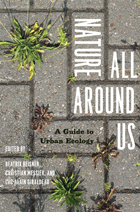 Nature All Around Us: A Guide to Urban Ecology
Edited by Beatrix Beisner, Christian Messier, and Luc-Alain Giraldeau
University of Chicago Press, 2012 It’s easy to stand in awe of a city’s impressive skyline, marveling at its buildings reaching for the clouds and its vast network of roadways and train lines crisscrossing in every direction. It can often seem like everything in a city is man-made, all concrete, steel, and glass. But even the asphalt jungle is not all asphalt—a sidewalk’s cracks are filled with nature, if we know where and how to look. To aid us in this quest is Nature All Around Us, which will help us to recognize (and look after) the natural world we traipse through in our daily lives.
Nature All Around Us uses the familiar—such as summer Sundays humming with lawn mowers, gray squirrels foraging in planters, and flocks of pigeons—in order to introduce basic ecological concepts. In twenty-five short chapters organized by scale, from the home to the neighborhood to the city at large, it offers a subtle and entertaining education in ecology sure to inspire appreciation and ultimately stewardship of the environment. Various ecological concepts that any urban dweller might encounter are approachably examined, from understanding why a squirrel might act aggressively towards its neighbor to how nutrients and energy contained within a discarded apple core are recycled back into the food chain. Streaming through the work is an introduction to basic ecology, including the dangers of invasive species and the crucial role played by plants and trees in maintaining air quality.
Taken as a whole, Nature All Around Us is an unprecedented field guide to the ecology of the urban environment that invites us to look at our towns, cities, and even our backyards through the eyes of an ecologist. It is an entertaining, educational, and inspiring glimpse into nature in seemingly unnatural settings, a reminder that we don’t have to trek into the wild to see nature—we just have to open our eyes.
 Nature and Antiquities: The Making of Archaeology in the Americas
Edited by Philip L. Kohl, Irina Podgorny, and Stefanie Gänger
University of Arizona Press, 2014 Nature and Antiquities examines the relation between the natural sciences, anthropology, and archaeology in the Americas in the nineteenth and early twentieth centuries. Taking the reader across the Americas from the Southern Cone to Canada, across the Andes, the Brazilian Amazon, Mesoamerica, and the United States, the book explores the early history of archaeology from a Pan-American perspective.
The volume breaks new ground by entreating archaeologists to acknowledge the importance of ways of knowing that resulted from the study of nature in the history of archaeology. Some of the contributions to this volume trace the part conventions, practices, and concepts from natural history and the natural sciences played in the history and making of the discipline. Others set out to uncover, reassemble, or adjust our vision of collections that research historians of archaeology have disregarded or misrepresented—because their nineteenth-century makers would refuse to comply with today’s disciplinary borders and study natural specimens and antiquities in conjunction, under the rubric of the territorial, the curious or the universal. Other contributions trace the sociopolitical implications of studying nature in conjunction with “indigenous peoples” in the Americas—inquiring into what it meant and entailed to comprehend the inhabitants of the American continent in and through a state of nature.
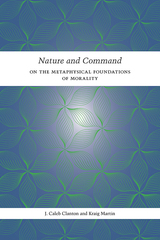 Nature and Command: On the Metaphysical Foundations of Morality
J. Caleb Clanton
University of Tennessee Press, 2022 Since at least the time of Plato, religious explanations of the metaphysical foundations of morality have typically fallen into one of two camps: natural law theory, according to which morality is fundamentally explained by facts about human nature—facts that God is responsible for—and divine command theory, which holds that moral obligations arise directly from God’s commands or some other prescriptive act of the divine will. J. Caleb Clanton and Kraig Martin offer an accessible analysis of these traditional views, reconstruct the various arguments for and against them, and offer an extended consideration of the historical emergence of the divide between these positions within the Christian tradition. Nature and Command goes on to develop and defend a theory that combines these two views—a metaethical approach that has not yet received the scholarly attention it deserves.
Along the way, the authors make use of underexplored theological resources drawn from the Stone-Campbell movement, a nineteenth-century restoration movement that culminated in one of the largest Protestant groups in America by the dawn of the twentieth century. Nature and Command summons the resources of this particular Christian heritage—its first principles, call for unity, and ecumenism—to solve one of the great dilemmas of moral philosophy and theology dating back to Plato’s Euthyphro.
This historically aware, argumentatively rigorous, and highly readable volume will serve as a valuable resource for moral philosophy and ethics, as well as for mining the Stone-Campbell Restoration tradition for historical and theological insights.
Nature and Culture in the Iliad: The Tragedy of Hector
James M. Redfield
Duke University Press, 1994 By focusing on the story of Hector, James M. Redfield presents an imaginative perspective not only on the Iliad but also on the whole of Homeric culture. In an expansive discussion informed by a reinterpretation of Aristotle's Poetics and a reflection on the human meaning of narrative art, the analysis of Hector leads to an inquiry into the fundamental features of Homeric culture and of culture generally in its relation to nature. Through Hector, as the "true tragic hero of the poem," the events and themes of the Iliad are understood and the function of tragedy within culture is examined. Redfield's work represents a significant application of anthropological perspectives to Homeric poetry. Originally published in 1975 (University of Chicago Press), this revised edition includes a new preface and concluding chapter by the author.
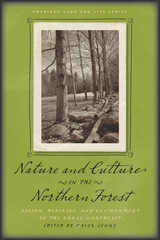 Nature and Culture in the Northern Forest: Region, Heritage, and Environment in the Rural Northeast
Pavel Cenkl
University of Iowa Press, 2010 Nearly 30 million acres of the Northern Forest stretch across New York, Vermont, New Hampshire, and Maine. Within this broad area live roughly a million residents whose lives are intimately associated with the forest ecosystem and whose individual stories are closely linked to the region’s cultural and environmental history. The fourteen engaging essays in Nature and Culture in the Northern Forest effectively explore the relationships among place, work, and community in this complex landscape. Together they serve as a stimulating introduction to the interdisciplinary study of this unique region.
Each of the four sections views through a different lens the interconnections between place and people. The essayists in “Encounters” have their hiking boots on as they focus on personal encounters with flora and fauna of the region. The energizing accounts in “Teaching and Learning” question our assumptions about education and scholarship by proposing invigorating collaborations between teachers and students in ways determined by the land itself, not by the abstractions of pedagogy. With the freshness of Thoreau’s irreverence, the authors in “Rethinking Place” look at key figures in the forest’s literary and cultural development to help us think about the affiliations between place and citizenship. In “Nature as Commodity,” three essayists consider the ways that writers from the nineteenth and early twentieth centuries thought about nature as a product and, thus, how their conclusions bear on the contemporary retailing of place.
The writers in Nature and Culture in the Northern Forest reveal the rich affinities between a specific place and the literature, thought, and other cultural expressions it has nurtured. Their insightful and stimulating connections exemplify adventurous bioregional thinking that encompasses both natural and cultural realities while staying rooted in the particular landscape of some of the Northeast’s wildest forests and oldest settlements.
The Nature and Function of Scientific Theories: Essays in Contemporary Science and Philosophy
Robert G. Colodny
University of Pittsburgh Press, 1971 The six essays in this volume discuss philosophical thought on scientific theory including: a call for a realist, rather than instrumentalist interpretation of science; a critique of one of the core ideas of positivism concerning the relation between observational and theoretical languages; using aerodynamics to discuss the representational aspect of scientific theories and their isomorphic qualities; the relationship between the reliability of common sense and the authenticity of the world view of science; removing long-held ambiguities on the theory of inductive logic; and the relationship between the actuality of conceptual revolutions in the history of science and traditional philosophical pictures of scientific theory-building.
 Nature and History in American Political Development: A Debate
James W. Ceaser
Harvard University Press, 2006 In this inaugural volume of the Alexis de Tocqueville Lectures, political scientist James Ceaser traces the way certain ideas, including nature, history, and religion—which he calls foundational ideas—have been understood and used by statesmen and public intellectuals over the course of American history, from the Puritans to the current day. Ceaser treats these ideas not as pure concepts of philosophy or theology, but rather as elements of political discourse that provide the ground or ultimate appeal for other political ideas, such as liberty or equality. At times, they have critically influenced the course of American political development, offering various opportunities and constraints for political leaders. Ceaser traces the histories of these ideas and their relation to other ideas, to practices, and to the fortunes of successive partisan regimes.Three critical commentators—historian Jack Rakove and political theorists Nancy Rosenblum and Rogers Smith—challenge Ceaser’s arguments in several ways. They suggest that other ideas may be considered foundational, and they prod him to clarify further how foundational ideas work politically. Ceaser responds with vigor, and the result is a spirited debate about large and enduring questions in American politics.
Nature and History in Modern Italy
Marco Armiero
Ohio University Press, 2010 Is Italy il bel paese—the beautiful country—where tourists spend their vacations looking for art, history, and scenery? Or is it a land whose beauty has been cursed by humanity’s greed and nature’s cruelty? The answer is largely a matter of narrative and the narrator’s vision of Italy. The fifteen essays in Nature and History in Modern Italy investigate that nation’s long experience in managing domesxadtixadcated rather than wild natures and offer insight into these conflicting visions. Italians shaped their land in the most literal sense, producing the landscape, sculpting its heritage, embedding memory in nature, and rendering the two different visions inseparxadable. The interplay of Italy’s rich human history and its dramatic natural diversity is a subject with broad appeal to a wide range of readers.
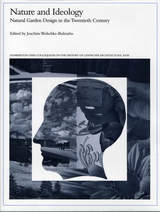 Nature and Ideology: Nature and Garden Design in the Twentieth Century
Joachim Wolschke-Bulmahn
Harvard University Press, 1997 This volume explores the broad range of ideas about nature reflected in twentieth-century concepts of natural gardens and their ideological implications. A possible definition—nature is ideology—suggests that nature can be seen as a systematic scheme of ideas held by particular social, political, and cultural groups, and that our definition of nature is a human intellectual construct. Historical and contemporary concepts of natural garden design provide evidence of these different concepts of nature. The desire to produce a natural garden design has fascinated many professional and amateur garden designers, and the essays in this volume investigate their use of earlier ideas of natural gardens and their relationship to the rich model that nature offers. The work of early twentieth-century natural garden advocates helped shape much of twentieth-century landscape architecture in both the United States and Europe, and the ideologies underlying the concepts of natural gardens show how political, economic, and social developments influenced design programs and decisions.
Nature and Motion in the Middle Ages
James A. Weisheipl
Catholic University of America Press, 2018 The essays contained in this volume illustrate the work of Fr. James A. Weisheipl, whose writing and teaching have resulted in important additions to our understanding of nature and motion.
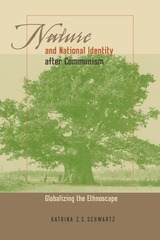 Nature and National Identity After Communism: Globalizing the Ethnoscape
Katrina Z. S. Schwartz
University of Pittsburgh Press, 2006
In this groundbreaking book, Katrina Schwartz examines the intersection of environmental politics, globalization, and national identity in a small East European country: modern-day Latvia. Based on extensive ethnographic research and lively discourse analysis, it explores that country’s post-Soviet responses to European assistance and political pressure in nature management, biodiversity conservation, and rural development. These responses were shaped by hotly contested notions of national identity articulated as contrasting visions of the “ideal” rural landscape.
The players in this story include Latvian farmers and other traditional rural dwellers, environmental advocates, and professionals with divided attitudes toward new European approaches to sustainable development. An entrenched set of forestry and land management practices, with roots in the Soviet and pre-Soviet eras, confront growing international pressures on a small country to conform to current (Western) notions of environmental responsibility—notions often perceived by Latvians to be at odds with local interests. While the case is that of Latvia, the dynamics Schwartz explores have wide applicability and speak powerfully to broader theoretical discussions about sustainable development, social constructions of nature, the sources of nationalism, and the impacts of globalization and regional integration on the traditional nation-state.
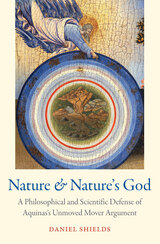 Nature and Nature's God: A Philosophical and Scientific Defense of Aquinas' Unmoved Mover Argument
Daniel Shields
Catholic University of America Press, 2023 Aquinas’ first proof for God’s existence is usually interpreted as a metaphysical argument immune to any objections coming from empirical science. Connections to Aquinas’ own historical understanding of physics and cosmology are ignored or downplayed. Nature and Nature's God proposes a natural philosophical interpretation of Aquinas’ argument more sensitive to the broader context of Aquinas’ work and yielding a more historically accurate account of the argument. Paradoxically, the book also shows that, on such an interpretation, Aquinas’ argument is not only consistent with modern science, but actually confirmed by the history of science, from classical mechanics through 19th century thermodynamics to contemporary cosmology.
The first part of the book considers Aquinas’ argument in its historical context, exploring the key principles that everything in motion is moved by something else and that an infinite regress of causes is impossible. The structure of the First Way is analyzed and the argument is connected both with Aquinas’ Third Way—a new interpretation of which is also proposed—and Aquinas’ second proof from motion in the Summa contra Gentiles. To complete the account of what natural philosophy—prior to metaphysics—can demonstrate about God, a chapter on Aquinas’ teleological argument (the Fifth Way) is also included.
The second part of the book tracks the history of modern science from Copernicus to today, showing how Aquinas’ argument fared at each major turn. The first chapter shows how Newton’s understanding of inertia and conservation of momentum supports the idea that motion cannot continue forever without God’s causality, and integrates a modern understanding of inertia and gravity with the principles of Thomistic natural philosophy. The second chapter considers the first and second laws of thermodynamics, showing how they too support Aquinas’ contention that motion cannot continue forever without God’s causality. This chapter also discusses statistical mechanics and contemporary cosmology, demonstrating that science continues to support Aquinas’ unmoved mover argument. The final chapter turns to modern biology as well as cosmological fine-tuning to show that modern science also continues to support Aquinas’ teleological argument. The result is not only a satisfying defense of Aquinas’ natural philosophical proofs for God’s existence, but a primer on the broader project of integrating Thomistic natural philosophy with modern science.
 The Nature and Nurture of Love: From Imprinting to Attachment in Cold War America
Marga Vicedo
University of Chicago Press, 2013 The notion that maternal care and love will determine a child’s emotional well-being and future personality has become ubiquitous. In countless stories and movies we find that the problems of the protagonists—anything from the fear of romantic commitment to serial killing—stem from their troubled relationships with their mothers during childhood. How did we come to hold these views about the determinant power of mother love over an individual’s emotional development? And what does this vision of mother love entail for children and mothers? In The Nature and Nurture of Love, Marga Vicedo examines scientific views about children’s emotional needs and mother love from World War II until the 1970s, paying particular attention to John Bowlby’s ethological theory of attachment behavior. Vicedo tracks the development of Bowlby’s work as well as the interdisciplinary research that he used to support his theory, including Konrad Lorenz’s studies of imprinting in geese, Harry Harlow’s experiments with monkeys, and Mary Ainsworth’s observations of children and mothers in Uganda and the United States. Vicedo’s historical analysis reveals that important psychoanalysts and animal researchers opposed the project of turning emotions into biological instincts. Despite those substantial criticisms, she argues that attachment theory was paramount in turning mother love into a biological need. This shift introduced a new justification for the prescriptive role of biology in human affairs and had profound—and negative—consequences for mothers and for the valuation of mother love.
Nature and Scientific Method
Daniel O. Dahlstrom
Catholic University of America Press, 2018 The present volume is a collection of systematic and historical studies addressing the terms of Aristotelian inference.
 Nature and Society in Central Brazil: The Suya Indians of Mato Grosso
Anthony Seeger
Harvard University Press, 1981 For the Suya, a Ge-speaking tribe of Central Brazil, nature and culture are perceived as fundamental opposites. Yet surprisingly few basic principles seem to underlie both Suya cosmology and society on their various levels—from the construction of villages and the classification of animals and humans to body ornamentation, dietary restrictions, myths, and curing chants.
In this integrated and far-reaching analysis, Anthony Seeger makes a significant contribution to the structural inquiry into lowland South American cosmologies begun by Levi-Strauss. He delineates various strata of the Suya world—perceptions of time and space, kinship, politics and medicine, groupings of animals, plants, and humans—and evolves a simple set of beliefs about nature and transformation that seems to govern all of them. His is an extremely rich and lucid account of the field methods, experiences, and observations that comprised the exploration into a hitherto unfamiliar tribe.
The Nature and Status of Ethnobotany, 2nd ed
Edited by Richard I. Ford with a new introduction by Richard I. Ford
University of Michigan Press, 1994 Nature and Status, published in 1978, is still a standard text of the discipline, with classic papers exploring theoretical issues, principles of plant utilization, prehistoric economics, and more. A reprint of this watershed volume includes all these classic papers, a new 30-page introduction by Ford, and pages of new references.
 The Nature and Tendency of Free Institutions
Frederick Grimke
Harvard University Press First published in 1848, Frederick Grimke's book, in the words of the editor, "deserves comparison with Tocqueville's justly famous work, Democracy in America, and is in certain ways superior. It is the single best book written by an American in the nineteenth century on the meaning of our political way of life." A second edition of Grimke's work was published in 1856, and a third edition appeared posthumously in 1871, but since then this classic in American thought has been almost completely lost to sight.
Grimke was born in South Carolina in 1791, and later moved to Ohio where he became a judge. He remained a bachelor, led a rich and cosmopolitan intellectual life, and accumulated an excellent library. His sisters Angelina (wife of the abolitionist Theodore Weld) and Sarah were both famous for deserting their South Carolina heritage and becoming active in the abolition and woman suffrage movements. In 1842 Grimke retired from the bench to devote the remainder of his life to study and writing, setting himself the task of educating his contemporaries in the nature of their society. His major achievement was The Nature and Tendency of Free Institutions.
Grimke's range of topics includes the right of the majority, the character and operation of elective governments, the function of political parties, the American contrasted with the English and French constitutions, and the separation of powers in the American political systems. He sees governmental institutions as the expression of the general structure of society which calls them into being. In his Introduction, John William Ward points to Grimke's thesis "that the separation of powers in the frame of the American constitution works not because power is distributed within the government but because all branches of the government are, directly or indirectly, responsible to the will of the majority of the people outside the doors of government." As a result of the party system, Grimke wrote, "we may vary the paraphernalia of government as much as we please, but it still obstinately persists in every one of its departments to be a government based upon the popular will."
Ward calls attention to Grimke's passionate belief that "freedom is its own justification" and that its ultimate value is that "it created the kind of character which made freedom possible." He held that "the only way to make a man fit for freedom is to give him freedom." Yet, unlike his sisters, he shared a view of race that was pervasive in his time and was unable to imagine the extension of freedom to the slave. In contradiction to his views of government and freedom, he upheld Negro slavery even to the extent of sanctioning secession to protect it. To him, "the open affirmation of the right of secession would serve to maintain the Union, not destroy it."
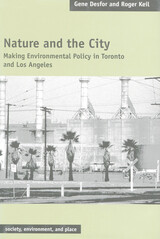 Nature and the City: Making Environmental Policy in Toronto and Los Angeles
Gene Desfor and Roger Keil
University of Arizona Press, 2004 Pollution of air, soil, and waterways has become a primary concern of urban environmental policy making, and over the past two decades there has emerged a new era of urban policy that links development with ecological issues, based on the notion that both nature and the economy can be enhanced through technological changes to production and consumption systems. This book takes a new look at this application of "ecological modernization" to contemporary urban political-ecological struggles. Considering policy processes around land-use in urban watersheds and pollution of air and soil in two disparate North American "global cities," it criticizes the dominant belief in the power of markets and experts to regulate environments to everyone’s benefit, arguing instead that civil political action by local constituencies can influence the establishment of beneficial policies.
The book emphasizes ‘subaltern’ environmental justice concerns as instrumental in shaping the policy process. Looking back to the 1990s—when ecological modernization began to emerge as a dominant approach to environmental policy and theory—Desfor and Keil examine four case studies: restoration of the Don River in Toronto, cleanup of contaminated soil in Toronto, regeneration of the Los Angeles River, and air pollution reduction in Los Angeles. In each case, they show that local constituencies can develop political strategies that create alternatives to ecological modernization. When environmental policies appear to have been produced through solely technical exercises, they warn, one must be suspicious about the removal of contention from the process.
In the face of economic and environmental processes that have been increasingly influenced by neo-liberalism and globalization, Desfor and Keil’s analysis posits that continuing modernization of industrial capitalist societies entails a measure of deliberate change to societal relationships with nature in cities. Their book shows that environmental policies are about much more than green capitalism or the technical mastery of problems; they are about how future urban generations live their lives with sustainability and justice.
Nature and the Iron Curtain: Environmental Policy and Social Movements in Communist and Capitalist Countries, 1945–1990
Astrid Kirchhof
University of Pittsburgh Press, 2019 In Nature and the Iron Curtain, the authors contrast communist and capitalist countries with respect to their environmental politics in the context of the Cold War. Its chapters draw from archives across Europe and the U.S. to present new perspectives on the origins and evolution of modern environmentalism on both sides of the Iron Curtain. The book explores similarities and differences among several nations with different economies and political systems, and highlights connections between environmental movements in Eastern and Western Europe.
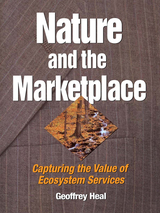 Nature and the Marketplace: Capturing The Value Of Ecosystem Services
Geoffrey Heal
Island Press, 2000 In recent years, scientists have begun to focus on the idea that healthy, functioning ecosystems provide essential services to human populations, ranging from water purification to food and medicine to climate regulation. Lacking a healthy environment, these services would have to be provided through mechanical means, at a tremendous economic and social cost. Nature and the Marketplace examines the controversial proposition that markets should be designed to capture the value of those services. Written by an economist with a background in business, it evaluates the real prospects for various of nature's marketable services to “turn profits” at levels that exceed the profits expected from alternative, ecologically destructive, business activities. The author: - describes the infrastructure that natural systems provide, how we depend on it, and how we are affecting it
- explains the market mechanism and how it can lead to more efficient resource use
- looks at key economic activities -- such as ecotourism, bioprospecting, and carbon sequestration -- where market forces can provide incentives for conservation
- examines policy options other than the market, such as pollution credits and mitigation banking
- considers the issue of sustainability and equity between generations
Nature and the Marketplace presents an accessible introduction to the concept of ecosystem services and the economics of the environment. It offers a clear assessment of how market approaches can be used to protect the environment, and illustrates that with a number of cases in which the value of ecosystems has actually been captured by markets. The book offers a straightforward business economic analysis of conservation issues, eschewing romantic notions about ecosystem preservation in favor of real-world economic solutions. It will be an eye-opening work for professionals, students, and scholars in conservation biology, ecology, environmental economics, environmental policy, and related fields.
Nature as Event: The Lure of the Possible
Didier Debaise
Duke University Press, 2017 We have entered a new era of nature. What remains of the frontiers of modern thought that divided the living from the inert, subjectivity from objectivity, the apparent from the real, value from fact, and the human from the nonhuman? Can the great oppositions that presided over the modern invention of nature still claim any cogency? In Nature as Event, Didier Debaise shows how new narratives and cosmologies are necessary to rearticulate that which until now had been separated. Following William James and Alfred North Whitehead, Debaise presents a pluralistic approach to nature. What would happen if we attributed subjectivity and potential to all beings, human and nonhuman? Why should we not consider aesthetics and affect as the fabric that binds all existence? And what if the senses of importance and value were no longer understood to be exclusively limited to the human?
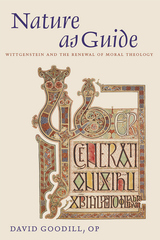 Nature as Guide: Wittgenstein and the Renewal of Moral Theology
David Goodill, OP
Catholic University of America Press, 2022 Wittgenstein influenced a generation of philosophers and theologians, with works such as Fergus Kerr’s Theology After Wittgenstein showing the relevance of Wittgenstein’s philosophy for contemporary questions in theology. Nature as Guide follows many of the insights of this earlier generation of Wittgenstein influenced scholars, to bring Wittgenstein into conversation with contemporary Catholic moral theology.
The first four chapters of the book provides a reading of key themes in Wittgenstein’s philosophy, and draw among others on G.E.M. Anscombe to situate Wittgenstein in relation to the Platonic tradition. Understanding the relationship between grammar, metaphysics and nature is central to this tradition and these themes are examined through an account of Wittgenstein’s philosophical development. These four chapters also provides a critical perspective on Wittgenstein’s thought, engaging with the criticisms of Wittgenstein offered by philosophers such as Rhees Rush and William Charlton.
Chapter five lays the groundwork for a dialogue between Wittgenstein and moral theology. Firstly, by examining how open Wittgenstein’s philosophy is to dialogue with theology, and secondly through proposing the use of Servais Pinckaers’ definition of moral theology to structure the conversation developed in subsequent chapters.
Pinckaers’ definition is based upon St Thomas Aquinas’ presentation of the principles of human acts in the Prima Secundae of the Summa Theologiae and the final three chapters focus on the question of human acts and their basis in human nature. The reading of Wittgenstein developed in the first part of the book is brought into dialogue with the tradition of Catholic moral theology represented by Pinckaers and other students of St Thomas, such as Anscombe, Josef Pieper, Herbert McCabe, Jean Porter and Alasdair MacIntyre. The book finishes with McCabe’s account of the transformation of human nature through God’s Word, showing how Wittgenstein’s understanding of human practices can shed light on the life of grace.
 Nature Contained: Environmental Histories of Singapore
Timothy P. Barnard
National University of Singapore Press, 2014 How has Singapore’s environment—and location in a zone of extraordinary biodiversity—influenced the economic, political, social, and intellectual history of the island since the early 19th century? What are the antecedents to Singapore’s image of itself as a City in a Garden? Grounding the story of Singapore within an understanding of its environment opens the way to an account of the past that is more than a story of trade, immigration, and nation-building. Each of the chapters in this volume—focusing on topics ranging from tigers and plantations to trade in exotic animals and the greening of the city, and written by botanists, historians, anthropologists, and naturalists—examines how humans have interacted with and understood the natural environment on a small island in Southeast Asia over the past 200 years, and conversely how this environment has influenced humans. Between the chapters are travelers' accounts and primary documents that provide eyewitness descriptions of the events examined in the text. In this regard, Nature Contained: Environmental Histories of Singapore provides new insights into the Singaporean past, and reflects much of the diversity, and dynamism, of environmental history globally.
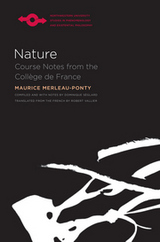 Nature: Course Notes from the College de France
Maurice Merleau-Ponty
Northwestern University Press, 2000 Collected here are the written traces of courses on the concept of nature given by Maurice Merleau-Ponty at the Collège de France in the 1950s-notes that provide a window on the thinking of one of the most influential philosophers of the twentieth century. In two courses distilled by a student and in a third composed of Merleau-Ponty's own notes, the ideas that animated the philosopher's lectures and that informed his later publications emerge in an early, fluid form in the process of being elaborated, negotiated, critiqued, and reconsidered.
Merleau-Ponty's project in these courses is an interrogation of nature, a task at the center of his investigation of perception, truth, and subjectivity. The first course, a survey of the historical elements in our concept of nature, examines first the Cartesian concept of nature and then historical and contemporary responses to Descartes, all with an eye toward developing a vision of nature more consistent with the findings of contemporary science.
In the second course, Merleau-Ponty takes up the problem of the relation of nature to ontology in general. Here, the key question is how the animal finds itself in its world. Because the human body is ultimately "an animal of movements and perceptions," humanity is intertwined with animality.
In the third course, "Nature and Logos: The Human Body," Merleau-Ponty assesses his previous findings and examines the emergence of the human body at the intersection of nature and Logos. This course, contemporaneous with the working notes for <i>The Visible and the Invisible<i>, allows us to observe the evolution of that work as well as to revisit the research he had begun in <i>Primacy of Perception</i>.
In these traces: a new reading of Descartes; a measured appreciation of Schelling; an assessment of recent developments in the sciences (both physical and biological) that leads to the notion of the body as a "system of equivalencies"; and an examination of the phenomenon of life. We have a wealth of material that allows us to reconsider Merleau-Ponty's thinking and to engage his philosophical project anew.
Before his death in 1961, Maurice Merleau-Ponty was chair in philosophy at the Collège de France.
Robert Vallier is completing his doctoral work on Merleau-Ponty and Schelling at DePaul University. He has also taught at the Universite de Paris-X (Nanterre) and at the College Internationale de Philosophie.
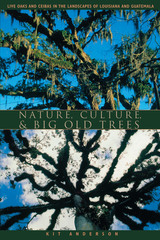 Nature, Culture, and Big Old Trees: Live Oaks and Ceibas in the Landscapes of Louisiana and Guatemala
By Kit Anderson
University of Texas Press, 2004 Big old trees inspire our respect and even affection. The poet Walt Whitman celebrated a Louisiana live oak that was solitary "in a wide flat space, / Uttering joyous leaves all its life without a friend a lover near." Groves and alleys of live oaks remain as distinctive landscape features on Louisiana's antebellum plantations, while massive individuals still cast their shade over churches, graveyards, parks, and roads. Cajuns have adopted the "Evangeline Oak" as one of their symbols. And the attachment that Louisianians feel for live oaks is equaled by that of Guatemalans for ceibas, the national tree of Guatemala. Long before Europeans came to the Americas, the ceiba, tallest of all native species, was the Mayan world tree, the center of the universe. Today, many ceibas remain as centers of Guatemalan towns, spreading their branches over the central plaza and marketplace. In this compelling book, Kit Anderson creates a vibrant portrait of the relationship between people and trees in Louisiana and Guatemala. Traveling in both regions, she examined and photographed many old live oaks and ceibas and collected the stories and symbolism that have grown up around them. She describes who planted the trees and why, how the trees have survived through many human generations, and the rich meanings they hold for people today. Anderson also recounts the natural history of live oaks and ceibas to show what human use of the landscape has meant for the trees. This broad perspective, blending cultural geography and natural history, adds a new dimension to our understanding of how big old trees and the places they help create become deeply meaningful, even sacred, for human beings.
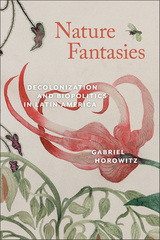 Nature Fantasies: Decolonization and Biopolitics in Latin America
Gabriel Horowitz
Bucknell University Press, 2024 In this original study, Gabriel Horowitz examines the work of select nineteenth- and twentieth-century Latin American writers through the lens of contemporary theoretical debates about nature, postcoloniality, and national identity. In the work of José Martí, Gertrudis Gómez de Avellaneda, Jorge Luis Borges, Augusto Roa Bastos, Cesar Aira, and others, he traces historical constructions of nature in regional intellectual traditions and texts as they inform political culture on the broader global stage. By investigating national literary discourses from Cuba, Argentina, and Paraguay, he identifies a common narrative thread that imagines the utopian wilderness of the New World as a symbolic site of independence from Spain. In these texts, Horowitz argues, an expressed desire to return to the nation’s foundational nature contributed to a movement away from political and social engagement and toward a “biopolitical state,” in which nature, traditionally seen as pre-political, conversely becomes its center.
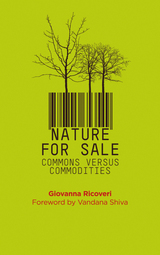 Nature for Sale: The Commons versus Commodities
Giovanna Ricoveri
Pluto Press, 2013 Nature for Sale uncovers the rich heritage of common ownership which existed before the dominance of capitalist property relations. Giovanna Ricoveri argues that the subsistence commons of the past can be reinvented today to provide an alternative to the current destructive economic order.
Ricoveri outlines the distinct features of common ownership as it has existed in history: cooperation, sustainable use of natural resources and decision-making through direct democracy. In doing so, she shows how it is possible to provide goods and services which are not commodities exchanged on the capitalistic market, something still demonstrated today in village communities across the global South.
Tracing the erosion of the commons from the European enclosures at the dawn of the Industrial Revolution to the new enclosures of modern capitalism, the book concludes by arguing that a new commons is needed today. It will be essential reading for activists as well as students and academics in history, politics, economics and development studies.
Nature From Within: Gustav Theodor Fechner And His Psychophysical Worldview
Michael Heidelberger
University of Pittsburgh Press, 2004 Gustav Theodor Fechner (1801-1887) was a German physicist, psychologist, and philosopher, best known to historians of science as the founder of psychophysics, the experimental study of the relation between mental and physical processes. Michael Heidelberger's exhaustive exploration of Fechner's writings, in relation to current issues in the field, successfully reestablishes Fechner's place in the history and philosophy of science.
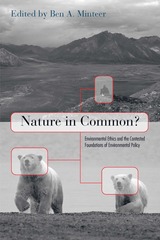 Nature in Common?: Environmental Ethics and the Contested Foundations of Environmental Policy
Ben A. Minteer
Temple University Press, 2009 This important book brings together leading environmental thinkers to debate a central conflict within environmental philosophy: Should we appreciate nature mainly for its ability to advance our interests or should we respect it as having a good of its own, apart from any contribution to human well being? Specifically, the fourteen essays collected here discuss the "convergence hypothesis" put forth by Bryan Norton—a controversial thesis in environmental ethics about the policy implications of moral arguments for environmental protection. Historically influential essays are joined with newly commissioned essays to provide the first sustained attempt to reconcile two long-opposed positions. Norton himself offers the book's closing essay. This seminal volume contains contributions from some of the most respected scholars in the field, including Donald Brown, J. Baird Callicott, Andrew Light, Holmes Rolston III, Laura Westra, and many others. Although Nature in Common? will be especially useful for students and professionals studying environmental ethics and philosophy, it will engage any reader who is concerned about the philosophies underlying contemporary environmental policies.
 Nature in Focus: Rapid Ecological Assessment
Roger Sayre, Ellen Roca, Gina Sedaghatkish, Bruce Young et al. Foreword by Thomas Lovejoy
Island Press, 2000 Rapid Ecological Assessment (REA) is a methodology developed by The Nature Conservancy to provide comprehensive and reliable information about biodiversity resources in situations where time and financial resources are limited. REAs utilize a combination of remote-sensed imagery, reconnaissance overflights, field data collection, and spatial information visualization to generate useful information for conservation planning. Nature in Focus is an in-depth guide to the theory and practice of REAs, offering a detailed approach for assessing biodiversity in a rapid and integrative manner. It provides researchers with the essential tools and techniques they need to conduct an REA, and offers valuable advice about the planning and implementation aspects. The book: - presents an overview of the REA methodology and sampling framework
- reviews all aspects of an REA: planning and management, mapping and spatial information, information management
- describes surveys of vegetation and fauna
- presents a generalized description of threat assessments
- explores the manner in which large amounts of data produced by different REA teams are integrated and synthesized into a cohesive set of management recommendations
- explains how the REA effort is documented, published, and disseminated
- offers a detailed REA case study
Also included is a set of twelve color maps that describe the sequence of mapping activities in the case-study REA, along with other map examples from a range of REAs. In addition to the case study, appendixes offer a full set of REA field forms for sampling, and a model "Scope of Work" that describes the nature of work to be conducted in an REA and outlines the roles and responsibilities of the participating organizations. Nature in Focus presents the collective experience of more than ten years of REA field-testing. Conservation practitioners and biodiversity scientists who are involved with REA initiatives, along with managers, policymakers, and others involved with conservation programs will find the book a useful and nontechnical guide to an essential element of successful conservation.
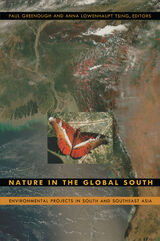 Nature in the Global South: Environmental Projects in South and Southeast Asia
Paul Greenough and Anna Lowenhaupt Tsing, eds.
Duke University Press, 2003 A nuanced look at how nature has been culturally constructed in South and Southeast Asia, Nature in the Global South is a major contribution to understandings of the politics and ideologies of environmentalism and development in a postcolonial epoch. Among the many significant paradigms for understanding both the preservation and use of nature in these regions are biological classification, state forest management, tropical ecology, imperial water control, public health, and community-based conservation. Focusing on these and other ways that nature has been shaped and defined, this pathbreaking collection of essays describes projects of exploitation, administration, science, and community protest. With contributors based in anthropology, ecology, sociology, history, and environmental and policy studies, Nature in the Global South features some of the most innovative and influential work being done in the social studies of nature. While some of the essays look at how social and natural landscapes are created, maintained, and transformed by scientists, officials, monks, and farmers, others analyze specific campaigns to eradicate smallpox and save forests, waterways, and animal habitats. In case studies centered in the Philippines, India, Pakistan, Thailand, Indonesia, and South and Southeast Asia as a whole, contributors examine how the tropics, the jungle, tribes, and peasants are understood and transformed; how shifts in colonial ideas about the landscape led to extremely deleterious changes in rural well-being; and how uneasy environmental compromises are forged in the present among rural, urban, and global allies. Contributors:
Warwick Anderson
Amita Baviskar
Peter Brosius
Susan Darlington
Michael R. Dove
Ann Grodzins Gold
Paul Greenough
Roger Jeffery
Nancy Peluso
K. Sivaramakrishnan
Nandini Sundar
Anna Lowenhaupt Tsing
Charles Zerner
Nature in the New World: From Christopher Columbus to Gonzalo Fernández de Oviedo
Antonello Gerbi
University of Pittsburgh Press, 1986 In Nature in the New World (translated 1985),Antonello Gerbiexamines the fascinating reports of the first Europeans to see the Americas. These accounts provided the basis for the images of strange and new flora, fauna, and human creatures that filled European imaginations.
Initial chapters are devoted to the writings of Columbus, Vespucci, Cortés, Verrazzano, and others. The second portion of the book concerns the Historia general y natural de las Indias of Gonzalo Fernández de Oviedo, a work commissioned by Charles V of Spain in 1532 but not published in its entirety until the 1850s. Antonello Gerbi contends that Oviedo, a Spanish administrator who lived in Santo Domingo, has been unjustly neglected as a historian. Gerbi shows that Oviedo was a major authority on the culture, history, and conquest of the New World.
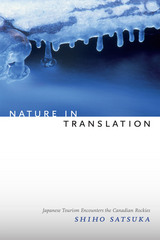 Nature in Translation: Japanese Tourism Encounters the Canadian Rockies
Shiho Satsuka
Duke University Press, 2015 Nature in Translation is an ethnographic exploration in the cultural politics of the translation of knowledge about nature. Shiho Satsuka follows the Japanese tour guides who lead hikes, nature walks, and sightseeing bus tours for Japanese tourists in Canada's Banff National Park and illustrates how they aspired to become local "nature interpreters" by learning the ecological knowledge authorized by the National Park. The guides assumed the universal appeal of Canada’s magnificent nature, but their struggle in translating nature reveals that our understanding of nature—including scientific knowledge—is always shaped by the specific socio-cultural concerns of the particular historical context. These include the changing meanings of work in a neoliberal economy, as well as culturally-specific dreams of finding freedom and self-actualization in Canada's vast nature. Drawing on nearly two years of fieldwork in Banff and a decade of conversations with the guides, Satsuka argues that knowing nature is an unending process of cultural translation, full of tensions, contradictions, and frictions. Ultimately, the translation of nature concerns what counts as human, what kind of society is envisioned, and who is included and excluded in the society as a legitimate subject.
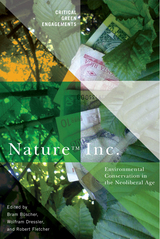 Nature Inc.: Environmental Conservation in the Neoliberal Age
Edited by Bram Büscher, Wolfram Dressler, and Robert Fletcher
University of Arizona Press, 2014 Can “market forces” solve the world’s environmental problems? The stakes are undeniably high. With wildlife populations and biodiversity riches threatened across the globe, it is obvious that new and innovative methods of addressing the crisis are vital to the future of the planet. But is “the market” the answer?
As public funding for conservation efforts grows ever scarcer and the private sector is brimming with ideas about how its role—along with its profits— can grow, market forces have found their way into environmental management to a degree unimaginable only a few years ago. Ecotourism, payment for environmental services (PES), and new conservation finance instruments such as species banking, carbon trading, and biodiversity derivatives are only some of the market mechanisms that have sprung into being. This is “Nature™ Inc.”: a fast-growing frontier of networks, activities, knowledge, and regulations that are rapidly changing the relations between people and nature on both global and local scales.
Nature™ Inc. brings together cutting-edge research by respected scholars from around the world to analyze how “neoliberal conservation” is reshaping human–nature relations that have been fashioned over two centuries of capitalist development. Contributors synthesize and add to a growing body of academic literature that cuts across the disciplinary boundaries of geography, sociology, anthropology, political science, and development studies to critically interrogate the increasing emphasis on neoliberal market-based mechanisms in environmental conservation. They all grapple with one overriding question: can capitalist market mechanisms resolve the environmental problems they have helped create?
 Nature into Art: Cultural Transformations in Nineteenth-Century Britain
Carl Woodring
Harvard University Press, 1989 The nineteenth century began with reverence for nature and ended with the apotheosis of art. In this wide-ranging excursion through the literature, visual arts, and natural sciences of the era from Wordsworth to Wilde, Carl Woodring traces shifting ideas and attitudes concerning nature, art, and the relations between the two.
The veneration of nature as aesthetic model and ethical norm was gradually eroded not least by the study of biology, which revealed organic nature to be wasteful and murderous. Darwin’s work verified the growing perception of nature as amoral by stressing the role of chance in natural selection, a further blow to trust in natural law. Once nature was not worth imitating, art by the century’s close could be an end to itself, free of responsibility to the natural.
The author examines individual works by Romantic and Victorian poets; narrative prose from James Hogg and Mary Shelley to Conrad, James, and Stevenson; painters from Wilkie through the Pre-Raphaelites to Whistler—all within such general contexts as the picturesque, the sublime, natural theology, romantic irony, romantic Hellenism, realism, photography, aestheticism, arts and crafts, art nouveau, and decadence. Although Woodring focuses on events, movements, and creative minds in England, he also draws upon a range of seminal figures from the Continent and the United States: Alexander von Humboldt, Delacroix, Thomas Cole, and Hawthorne are prominent examples. Nature into Art will fascinate scholars and amateurs of movements in literature, art, science, and cultural history in the Western world after 1780.
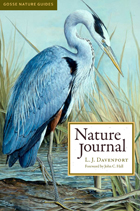 Nature Journal
L. J. Davenport, with a Foreword by John C. Hall
University of Alabama Press, 2010 Nature Journal is an innovative presentation of the best columns and photographs from L. J. Davenport’s popular column in Alabama Heritage magazine. Readers of the magazine have come to relish his artful and often witty descriptions of common species encountered in the Alabama outdoors. But Nature Journal is designed to be much more than a mere collection of entertaining essays; it is also an educational tool—a means of instructing and encouraging readers in the art of keeping a nature journal for themselves. Each of the 25 chapters is a self-contained lesson in close observation of species morphology, behavior, and habitat; research in the literature; nondestructive capture of the subject by photography or drawing; and written description of the total observed natural phenomenon. At the end of each account, stimulating questions and gentle directives guide the reader into making his or her own observations and recordings. This book is intended for broad nature-study use in Alabama and throughout the southeast by the general reader and nature enthusiast alike, as well as visitors to museums and outdoor centers, and students of nature and nature writing at the high school and college levels. Beautifully designed to look like a personal journal, it is a perfect gift and treasured keepsake for all lovers of the natural world. Publication supported in part by SamfordUniversity
 Nature Lost?: Natural Science and the German Theological Traditions of the Nineteenth Century
Frederic Gregory
Harvard University Press, 1992 In the main, nineteenth-century German theologians paid little attention to natural science and especially eschewed philosophically popular yet naive versions of natural theology. Frederick Gregory shows that the loss of nature from theological discourse is only one reflection of the larger cultural change that marks the transition of European society from a nineteenth century to a twentieth-century mentality.
In examining this "loss of nature," Gregory refers to a larger shift in epistemological foundations--a shift felt in many fields ranging from art to philosophy to history to, of course, theology. Employing different understandings of the concept of truth as investigative tools, the author depicts varying theological responses to the growth of natural science in the nineteenth century. Although nature was lost to Germany's "premier" theologians, Gregory shows it was not lost to the majority of nineteenth century laypeople or to the various theologians who spoke for them. Like their twentieth-century counterparts, nineteenth-century creationists insisted on keeping nature at the heart of their systems; liberals welcomed natural knowledge with the conviction that there would be no contradiction if one really understood science or if one really understood religion; and pantheistic naturalists confidently discovered a religious vision in the wonder of the Darwinian universe. Gregory suggests that modern theologians who stand in the shadow of the loss of nature from theology are challenged to devise a way to recapture what others did not abandon.
In this study of natural science and religion in nineteenth century German-speaking Europe, Gregory examines an important but largely neglected topic that will interest an audience that includes historians of theology, historians of philosophy, cultural and intellectual historians of the German-speaking world, and historians of science.
|
|

